- South Korea
- United Arab Emirates
- New Zealand
- Travel Tips
- travel resources
- Get In Touch
- Start A Blog

- Destinations

Ultimate 9-Day Mongolia Travel Itinerary & What To Expect
- May 13, 2024
- 20 minute read
Psst, FYI – this post may contain affiliate links, which means I earn a small commission (at absolutely no extra cost to you) and ads keep this blog free for you to enjoy. Thanks for supporting the free content on this site (and for sponsoring more doggy treats for little Albus!)
Are you ready to embark on a journey to the wild and untamed beauty of Mongolia? To date, I’d easily say this was one of my favorite trips so far. And if you’re still unsure about this offbeat destination, let me share my experience so you’ll know why Mongolia should be on your bucket list, and what to expect along the way.
Mongolia was a travel destination my friend and I picked a few years ago before the blip in time we all know as COVID-19 happened.
We were throwing out ideas like Bhutan and Nepal… basically, anywhere we could seemingly go off the grid and experience a place at its rawest.
No bustling cities or tourist traps.
We wanted to go somewhere we could be alone with nature.
Finally, we settled on Mongolia.
Once the borders opened, we booked our tickets and we were in for the ride of our lives.
Now, Mongolia is no walk in the park.
Here, you have to surrender yourself to Mongolia’s embrace. Forget about schedules, let go of control, and open your eyes to the unexpected.
Once you do, you’ll discover sides of yourself you never knew existed. Leave the comforts of home behind and just— experience .
Mongolia will push you to your limits, challenge your preconceptions, and force you to let go of control. But hey, that’s what makes it so thrilling!

In this itinerary, we will be spending 7 days out in the Gobi Desert , a region that will test your spirit of adventure. Mother Mongolia doesn’t mess around; just when you think you’ve got it all figured out, she throws a wild card your way.
So, why should Mongolia be on everyone’s bucket list?
It’s simple – you have to experience it for yourself.
And when you do, get ready for an epic adventure. With so much to explore, it can be difficult to decide where to start and what to include in an itinerary.
In this blog post, I’ll outline an 11-day Mongolia travel itinerary that covers some of the rawest highlights of the country which includes Central Mongolia and the Gobi Desert.
But don’t worry, I’ve got you covered.
Here’s everything you need to know about embarking on your first journey to Mongolia.
Get ready to embrace the wild, discover your true self, and create memories that will last a lifetime. Mongolia awaits, my fellow adventurers!
- 1 Why Mongolia Should Be at the Top of Your Bucket List
- 2 The Ultimate Mongolia Itinerary
- 3 Where is Mongolia?
- 4 How do I get to Mongolia?
- 5 How do you get around Mongolia?
- 6 Is Mongolia safe?
- 7 What’s the best month to visit Mongolia?
- 8 How many days do you need in Mongolia?
- 9 Do you need a visa in Mongolia?
- 10 Can you go to Mongolia without a tour?
- 11 Money in Mongolia
- 12 SIM Cards in Mongolia
- 13 Drinking water in Mongolia
- 14 MY TOP TRAVEL TIPS & RESOURCES
Why Mongolia Should Be at the Top of Your Bucket List
Prepare for an adventure that will kick your wanderlust into high gear!
In Mongolia, you can ride reindeer, join the ranks of eagle hunters, or hop on a camel for a wild ride across the magnificent Gobi Desert. It’s a thrill-seeker’s paradise where every moment is packed with excitement and wonder.
It’s no wonder CNN named Mongolia the country to visit in 2023.
Jaw-Dropping Landscapes
Get ready to have your mind blown by the epic beauty of Mongolia’s vast steppe, rugged mountains, and mind-boggling deserts.
I don’t think I’ve been so awe-struck every single day in a row before.
The ability to start every day surrounded by nature in its most pristine and unaltered form was such a treat to my senses. And seriously, your Instagram feed will thank you!
Nomadic Vibes
This might have been my favorite part of my entire Mongolian adventure (if picking a favorite was even possible).
It was the most precious experience getting to immerse myself in the nomadic culture of Mongolia and learn about their culture and traditions.
Some of my favorite moments were in the evenings when we would sit in the ger preparing dinner with our hosts; or playing traditional games with them.
We even got to witness a yak giving birth! Seeing a newborn calf arrive before our own eyes was wild.
And we didn’t just observe the nomad life, we lived it too.
They’d let us hop on their motorbikes in the evenings to go round up the yak herd before dark.
It’s like stepping into a whole new world!
Adventure Awaits
Mongolia is a paradise for adventure junkies. From galloping on horseback across the open plains to riding camels through the desert during sunset, it’s a thrill-seeker’s dream come true.
Definitely unlocked a core memory for me!
Soul-Stirring Moments
Through the course of my trip, I had countless “pinch-me” moments that touched my soul.
The serene landscapes, the simplicity of life, and the genuine connections you’ll make left an indelible mark on my heart.
I kept pondering how amazing life would be if we could just replicate this life in the city.
Mongolia just has a way of changing you for the better.
Animal-lovers Paradise
Mongolia’s five jewels are its animals, namely horses, goats, camels, cows, and sheep.
We got to meet and interact with all five which was an absolute dream come true for me. I even got to carry a few kids (baby goats)!!!!
Here you’ll get up close and personal with these animals in their natural habitat.
No fences, no ticket prices, no barbed wires. Just you and these glorious creatures.

So, pack your sense of adventure, a camera with lots of storage space, and an open mind. Mongolia is calling, and it’s time to answer that call.
The Ultimate Mongolia Itinerary

When planning our Mongolia trip, we were spoilt for choice with all the beautiful sights the country has to offer.
We ended up opting for a more authentic experience that focused on nature and nomadic living.
In this Mongolia itinerary, we explore the Gobi Desert and Orkhon Valley where we get to walk on frozen rivers, go horseback riding, and experience the nomadic way of life.
Without further ado, here we go!
Day 1: Arrival in Ulaanbaatar
Start your Mongolian adventure in the capital city of Ulaanbaatar.
Spend the day exploring the city, or if you’re arriving late just like us, get lots of rest and enjoy a good shower as you won’t be having one for a while!
It’s also a good opportunity you’ll need for the next 9 days away from civilization.
Yes! Did you know that if you’re opting for the most nomadic experience in the Gobi Desert, you’ll have to be comfortable forgoing a few showers!
Day 2: Journey into the Mongolia desert

Today we met up with our tour guide and driver from Sunpath Mongolia who were going to be with us for the next 9 days.
Once you leave Ulaanbaatar, most of the journey will be off-road so hiring a local company to take you will be your best bet as roads are unmarked and you’ll literally be driving through the desert!
Our journey begins with a 450km (279 miles) drive to the iconic White Stupa, also known as Tsagaan Suvarga.
We stopped for lunch in a town called Mandalgovi where we tried local food for the first time!
Mongolian dishes mostly consist of meat. Meat, meat, and lots more meat.
You’d be hard-pressed to find much vegetables here. Most of the time, you’ll only find carrots and potatoes. Sometimes , you’ll find cabbage.
But remember, out in the desert, it’s hard to grow leafy vegetables so say goodbye to your spinach and kale for a couple of days.

Located in the Middle Gobi Province, the White Stupa is a geological formation that stands out with its towering cliffs of white and orange limestone, resembling ancient ruins.
The White Stupa holds significant geological importance, with its layers of sediment representing millions of years of natural history.
The unique colors and shapes of the cliffs create a surreal and magical atmosphere, making it a photographer’s dream.
It is a popular tourist attraction due to its stunning white and orange cliffs that resemble a massive stupa or temple.

The cliffs offer a fantastic opportunity for photography, especially during sunrise or sunset when the colors become even more vibrant.
Aside from the visual appeal, the White Stupa holds significance for the local nomadic herders who consider it a sacred place. It is believed to have spiritual and healing properties, and visitors are encouraged to show respect and be mindful of the cultural and natural significance of the site.
After we were done exploring the White Stupa, we headed to our ger for the night situated just a few minute’s drive away.
Days in Mongolia are mostly like this as distances between sights can be quite long, so you’ll often be visiting one sightseeing spot per day while spending most of your time on the road.
We were very excited for our first night in our ger! Our host was a lovely Mongolian lady who made us dumplings for dinner! I met my first herd of sheep here which had me squealing in delight.
Our first night out in the ger was so surreal. Having to get used to no running water, no showers, and no toilets – living with the bare minimum but we still found it bearable.
There also wasn’t any service there so it was a great opportunity for us to get to know each other better and actually talk!

Day 3: Walk on ice at the Yol Valley

Our journey continues as we make a stop in Dalanzadgad , the capital of the South Gobi Province.
This small town serves as a gateway to the Gobi Desert so we were able to stock up on some amenities and… take a hot shower!
There are public showers in the town where you can freshen up, and I was pleasantly surprised by how clean and spacious these shower rooms were!

From Dalanzadgad, head to the enchanting Yol Valley , also known as the Eagle Valley.
This deep and narrow gorge is renowned for its dramatic rock formations, icy streams, and stunning wildlife.
As we embarked on a 5km walk through the valley, we were surrounded by towering cliffs that harbor rare and endangered species, such as the bearded vulture and Siberian ibex.

In the evening, we retreat to our gers nestled within the Yol Valley.

Day 3: Marvel at the Khongor Sand Dunes and ride camels into the sunset

This morning we woke up to a sudden snowstorm which covered the ground and our gers in a blanket of white! I told you to expect everything when you’re in Mongolia – haha!
After walking on ice yesterday, today we’re off to the mesmerizing Khongor Sand Dunes , also known as the “Singing Sands.”
I told you you’ll be experiencing all sorts of conditions in Mongolia!
These expansive sand dunes stretch across the southern part of Mongolia, covering an area of over 180 kilometers.

Upon arrival, we are immediately captivated by the grandeur of the sand dunes, with some reaching heights of up to 300 meters.
The Khongor Sand Dunes are known for their shifting patterns, shimmering golden colors, and the melodic sound produced when the sand is disturbed by the wind, hence the name “Singing Sands.”

It is quite a climb, so make sure you’ve got your stamina in tow. I only managed to climb up to the halfway point before giving up.
I’d say you’d have to be relatively fit to reach all the way up to the peak. Because you sink into the sand with every step, so it takes relatively more effort than walking on solid ground. But it’s definitely worth a shot if you can muster up the strength and stamina!
Once we reached our nomad family for the night at Ongi River, we were surprised with a camel riding experience through the sunset which was truly magical.

And after the camel ride, I got to cuddle some baby goats! I feel like I died and went to heaven!

Tonight we rest, and for the first time, going a whole day with no showers!
There was also no service in the area, so the experience was as authentic as it comes!
We spent the evening playing some local games with the host family using ankle bones (yes, goat bones!).

Day 4: Walk in the footsteps of the dinosaurs at the Flaming Cliffs

This morning we set off at 7 am to the Flaming Cliffs , also known as Bayanzag .
These towering red and orange cliffs hold great significance, most famous for yielding the first discovery of dinosaur eggs . It was so fascinating imagining dinosaurs once roaming on the very ground we were walking on!

Continuing our journey, we make a stop in Bulgan for lunch. We were supposed to have another shower here but the public showers were closed. Accepting hiccups is all part and parcel of traveling in Mongolia!
And in the nomadic spirit of flexibility, we trudge on and continue on our journey. At this point, we might even be getting used to this level of hygiene (or, maybe not)!
Next, we visit the historic Ongi Monastery , which once stood as one of Mongolia’s largest Buddhist monastic complexes.
Sadly, it was destroyed during the communist era, leaving behind evocative ruins that still hold immense spiritual significance.
Day 5: Visit Mongolia’s ancient capital, Kharkhorin
Today’s drive is especially long, but it’s going to be a relaxing day.
We set off for Kharkhorin , the ancient capital of the Mongol Empire and an important historical site. This historic city served as the political, economic, and cultural center during the reign of Chinggis Khan and his successors.

Upon reaching Kharkhorin, we satisfied our hunger with a delicious lunch before visiting the renowned Erdene Zuu Monastery .
This architectural masterpiece stands as a testament to Mongolia’s spiritual heritage and is considered one of the country’s most important monasteries.
Not pictured is us walking through the monastery braving an epic sandstorm ! And to think we were just hit with a snowstorm the day before.
Never a boring moment in Mongolia!

Despite the weather conditions, we were lucky that tonight we would be staying in a hotel !
That’s one of the great things about Sunpath —they knew to break up our itinerary of staying in the gers every night with a 1-night hotel stay! Awfully thoughtful of them and much needed by us.
We hugged our toilet bowls, marveled at the water faucets, and reveled at the rain shower—comforts we so often take for granted in our daily lives.
Day 6: Immerse yourself in Orkhon Valley’s breathtaking landscapes
Today we start our journey to what would become my absolute favorite part of this Mongolia itinerary — Orkhon Valley, a UNESCO World Heritage Site known for its natural and cultural significance.
The valley encompasses breathtaking landscapes, including rolling hills, lush meadows, and the Orkhon River, which meanders through the region.

Everywhere you turn was a postcard view waiting to be snapped. Rolling hills and frozen rivers with horses grazing nearby. I had to pinch myself to make sure I wasn’t dreaming.

In the Orkhon Valley, we had the privilege of staying with a nomadic family. We got to experience daily life with them, helping them herd their cattle, and even experienced a yak giving birth!

This was our favorite nomad ger of all too. I mean, look at that landscape! Waking up to that view does wonders for the soul.

Day 7: Orkhon Valley
Today was the day we had been excitedly anticipating. We get to ride horses!
We were a little nervous as most of us had never ridden horses in the wild before (I only did once when I was in Sydney ), but our host was great at making us feel comfortable throughout the whole process.
They dressed us up in their traditional riding outfits and off we went on a thrilling 20km horse riding journey to the magnificent Red Waterfall , also known as Ulaan Tsutgalan .

The feeling of riding through the open plains like this is just simply indescribable . It felt so surreal; like something right out of a movie scene!
I playfully compared myself to Mulan, riding on her horse to protect her country.
Then, our guide quipped, “Do you know who Mulan’s enemies were?”
Instantly, I retracted my statement, and we all shared a good laugh.

We were even lucky enough to capture a herd of yaks crossing the river! Here, we stopped for a nourishing picnic lunch which we absolutely enjoyed!

Continuing our exploration of Mongolian traditions, we engage in archery, a sport deeply rooted in the country’s nomadic heritage. Can’t say I got the hang of it, but at least I gave it a shot! Pun intended.

Day 8: Return to Ulaanbaatar
Today was the bittersweet day we were dreading.
While we were excited about returning to the comforts we were accustomed to, like running water and a clean bed, there was a palpable sense of sadness knowing that we would soon be leaving behind the closeness to nature and the serenity it granted us.
It was a 10-hour drive back to the city, but it allowed us to reflect on the remarkable experiences we’ve had and the profound connections we’ve forged with the land and its people. Or in other words, sleep .
Day 9: Chinggis Khan Statue and Ulaanbaatar City Tour

Before concluding our Mongolian adventure, we set aside a day to visit the magnificent Chinggis Khan Statue , a colossal tribute to Mongolia’s legendary leader.
The statue stands at an impressive height of 40 meters and offers panoramic views of the surrounding countryside. It’s a sight worth seeing if you have the time!
In the afternoon, we take a walk around the city of Ulaanbaatar, the bustling capital of Mongolia. It definitely shot down many misconceptions I had about the city. It’s much more developed and modern than I imagined!
Where is Mongolia?
Mongolia is a landlocked country located in East and Central Asia. It is bordered by Russia to the north and China to the south, east, and west. The capital city, Ulaanbaatar, is situated in the north-central part of the country.
How do I get to Mongolia?
Mongolia is a relatively remote country, but it is possible to reach it by air or overland. Here are some of the most common ways to get to Mongolia:
- Chinggis Khaan International Airport in Ulaanbaatar is the main gateway to Mongolia and is served by several airlines from various countries, including Korean Air, Air China, Turkish Airlines, and MIAT Mongolian Airlines.
- From Russia: The Trans-Siberian Railway connects Moscow to Ulaanbaatar, with a journey time of around 4 days. It is also possible to cross the border by road.
- From China: There are several border crossings between China and Mongolia, with regular buses and trains connecting major cities in China to Ulaanbaatar.
It is important to note that visa requirements vary depending on your nationality and the purpose of your visit. Be sure to check the current visa requirements and regulations before traveling to Mongolia.
How do you get around Mongolia?
Getting around Mongolia can be an adventure in itself, as the country is vast and its infrastructure is still developing. A lot of the time we found ourselves driving through the desert on unmarked roads. And we were left wondering how our driver even knew where he was headed to, but we always made it to our destination safely.

With that said, I highly discourage first-time travelers from renting a car and driving on their own.
You might be able to do that in Ulaanbaatar, but if you’re venturing any further than that, I highly recommend going with a reputable tour company that’ll arrange a professional guide and driver for you.
It is important to note that road conditions and transportation options may vary depending on the season and weather conditions. Be sure to research and plan ahead to ensure a safe and enjoyable journey in Mongolia.
Is Mongolia safe?
Mongolia is generally considered a safe country for travelers. The crime rate is relatively low, and violent crime is rare. However, as with any travel destination, there are some risks to be aware of.
One potential risk in Mongolia is the harsh and unpredictable weather, particularly in the winter months when temperatures can drop below -40°C (-40°F) and blizzards can occur. Travelers should be prepared for extreme weather conditions and follow the advice of local authorities.

Another potential risk is the condition of the roads and transportation infrastructure. Many roads in Mongolia are unpaved and can be difficult to navigate, especially in rural areas. Travelers should exercise caution when driving or riding in vehicles and ensure that their chosen mode of transportation is safe and reliable.
Finally, as with any travel destination, it is important to take precautions to protect your personal belongings and avoid scams or tourist traps. It is also recommended to avoid political demonstrations or protests, as these can sometimes turn violent.
Overall, with proper planning and precautions, Mongolia can be a safe and enjoyable travel destination.
What’s the best month to visit Mongolia?
The best time to visit Mongolia is during the summer months from June to August when the weather is warm and dry, and the countryside is in full bloom.
This is the peak tourist season, and the days are long, providing ample time to explore the vast landscapes and experience the rich cultural traditions of the nomadic herders.
Tourist ger camps are open during this time so those seeking a little more comfort while traveling in the desert can opt for this period.

During the summer months, temperatures can range from 20°C to 30°C (68°F to 86°F) during the day but can drop significantly at night, so it is important to bring warm layers for evenings and early mornings.
Mongolia is notorious for experiencing 4 seasons in a day. While we were there in April, we experienced 15°C days and subzero nights, so a good layering strategy is essential when traveling in Mongolia.
I’ll be posting a Mongolia packing guide soon to share my packing list tips and tricks.
If you are interested in attending the Naadam Festival, a traditional Mongolian festival featuring sports competitions, music, and dance, it takes place every year from July 11th to 13th in Ulaanbaatar and other parts of the country. I highly recommend visiting during this time. I plan to revisit Mongolia just for this festival in the future!
While the summer months are the most popular time to visit Mongolia, it is worth noting that the shoulder seasons of April, May, and September can also be good times to visit, with fewer crowds, cooler temperatures, and beautiful autumn foliage in September.
We visited in late April, one week before the tourist camps opened, and we had almost if not all the tourist attractions to ourselves. The weather was great, and we could take everything at a leisurely pace. If you can, I highly recommend coming during this time!
How many days do you need in Mongolia?
The number of days you need in Mongolia depends on your travel preferences and what you want to do and see during your trip. However, for a general Mongolia itinerary, a minimum of 7-10 days is recommended to fully experience the country’s unique culture, stunning landscapes, and traditional nomadic way of life.
With a 7-10 day itinerary, you can explore the capital city of Ulaanbaatar, visit the famous Terelj National Park, hike in the Altai Mountains, ride horses or camels with nomadic herders, and experience the Naadam Festival if your trip coincides with it.
Of course, if you have more time, you can explore additional regions and activities in Mongolia, such as visiting the Gobi Desert, Khovsgol Lake, or the ancient city of Karakorum, the former capital of the Mongol Empire.
It is worth noting that Mongolia is a vast country, and travel times can be long and sometimes challenging, especially in rural areas. On some days, we were on the road for 5-8 hours. It is important to plan your itinerary carefully and factor in travel time between destinations to ensure a comfortable and enjoyable trip. But if you go with a tour company, they will plan everything out for you according to how much time you have.

Do you need a visa in Mongolia?
Whether or not you need a visa to enter Mongolia depends on your nationality and the purpose and length of your visit.
Visa-free entry:
- Citizens of 26 countries, including the United States, Canada, the United Kingdom, and many European countries, can enter Mongolia visa-free for up to 30 days for tourism and non-work-related purposes.
Visa-on-arrival:
- Citizens of several other countries, including Australia, New Zealand, Japan, and South Korea, can obtain a visa on arrival at the airport in Ulaanbaatar for a fee. The visa is valid for up to 30 days for tourism and non-work-related purposes.
Visa required:
- Citizens of some countries, including India and China, are required to obtain a visa in advance from a Mongolian embassy or consulate before traveling to Mongolia.
It is important to check with the Mongolian embassy or consulate in your home country to confirm the visa requirements for your specific situation and plan accordingly.
Can you go to Mongolia without a tour?
The answer is yes and no. If you’re just planning to travel around Mongolia’s capital city, Ulaanbaatar, then yes it is possible. However, if you’re planning to venture out of the capital city, independent travel can be challenging, especially if you are not familiar with the local language, customs, and geography.
If you decide to travel independently, you will need to arrange your own transportation, accommodation, and activities. While there are some public transportation options available in Mongolia, they can be infrequent and unreliable, especially in rural areas.

Additionally, the nomadic way of life in Mongolia means that many attractions, such as traditional ger camps and horseback riding experiences, are often owned and operated by local families rather than large tourist companies, which can make it more difficult to book directly without local connections.

We personally booked a tour with Sunpath Mongolia , and it was the best decision we made on the trip.
Although I ordinarily prefer to travel independently and take the less touristy route, traveling through the Gobi and the more remote areas in Mongolia requires the help of a tour guide and driver. But Sunpath managed to let us experience Mongolia as authentically as possible while still making it as comfortable as possible for us.
Money in Mongolia
The official currency of Mongolia is the Mongolian Tugrik (MNT). Cash is the most commonly used form of payment in Mongolia, especially in rural areas, so it is recommended to carry cash with you during your trip. However, some larger businesses, hotels, and restaurants in urban areas also accept credit cards.
Here are some tips and information regarding money in Mongolia:
- ATMs: ATMs are available in Ulaanbaatar and other major cities in Mongolia, but they may not be as widely available in more remote areas. Some ATMs may only dispense Mongolian Tugrik, so make sure you have a currency conversion calculator or app to ensure you withdraw the correct amount.
- Currency exchange: It is recommended to exchange money at banks or exchange offices in Ulaanbaatar or major cities. Avoid exchanging money on the street, as this can be unsafe and unreliable.
- US Dollars: US Dollars are widely accepted in Mongolia, and some hotels and tour operators may also accept payment in USD.
- Tipping: Tipping is not expected in Mongolia, but it is becoming more common in tourist areas. If you feel that the service was exceptional, a small tip is appreciated.
- Budget: The cost of travel in Mongolia can vary widely depending on your travel style and itinerary. Budget accommodation and food can be found for around $20-30 per day, while mid-range hotels and restaurants can cost around $50-80 per day. Tours and activities can range from $50-100 per day and up.
Overall, it is recommended to have a mix of cash and credit cards with you during your trip to Mongolia and to plan your budget carefully to ensure you have enough funds for your entire trip.
SIM Cards in Mongolia
Getting a local SIM card is a good option for travelers to Mongolia who want to stay connected and have internet access on their phones during their trip.
The three main mobile network operators in Mongolia are Mobicom, G-Mobile, and Unitel. They all have booths at the airport and in Ulaanbaatar, and SIM cards can also be purchased at some convenience stores and supermarkets. We picked up a Mobicom SIM card for 15,500MNT (USD4.40) which gave us 15GB for the duration of our trip.
We were lucky to have picked Mobicom as our guide told us that Mobicom has the best coverage in the desert. However, coverage is still spotty regardless, and we had no service when we were traveling on the roads on certain days, and in certain ger guesthouses. In general, we had an internet connection about 60% of the time, which is a lot more than I was expecting!
Alternatively, if you don’t want the hassle of changing SIM cards, you can download the Airalo app , purchase a package, and get connected instantly! This is my favorite way to stay connected as it saves all the hassle of buying a SIM card and messing about with these tiny SIMs. PLUS, you can purchase the package in advance and get connected instantly even when you’re still on the plane! Find out more about Airalo.
Drinking water in Mongolia
Access to safe drinking water can be a concern in Mongolia, especially in rural areas. Our guide bought us enough bottled water to last us throughout our trip, and we used this water for drinking and for brushing our teeth. There is no running water while we’re out in the desert!
The nomads usually get their water from nearby wells and filter them before drinking or cooking. To be safe, make sure to have bottled water with you or bring a filtered water bottle for travel that provides clean drinking water anywhere on Earth. It filters almost any type of water, including from river streams, and turns it into clean drinking water.
This 9-day Mongolia travel itinerary has been a journey of discovery, allowing us to connect with nature, immerse ourselves in nomadic culture, and witness the beauty and authenticity of Mongolia. Mongolia has enriched my life, and I hope I’ve inspired you to embark on your own unforgettable journey through this captivating country.
Has Mongolia been on your bucket list? Or have you been to Mongolia and have your own stories to share? Leave me a comment below!

MY TOP TRAVEL TIPS & RESOURCES
Here are my top travel tips and resources to help you save money and plan your trips effectively! If you're looking for more tips, head over to my travel tips resource page or my comprehensive guide on trip planning .
- Booking Flights: When it comes to finding great flight deals, I always start my search on Google Flights or Skyscanner . To save some cash, consider flying mid-week or on the weekends, opt for carry-on only with budget airlines, and be open to red-eye or early morning flights. Check out my in-depth guide on how I find the cheapest flights .
- Accommodations : I'm a stickler for finding the absolute best deals on my stays, so I will obsessively oscillate between a few booking sites: Booking . com (in general) and Agoda (for Asian destinations). When it comes to vacation rentals, there's Airbnb or VRBO .
- Travel Insurance : It's always a wise decision to purchase travel insurance for international trips. I can't stress this enough - it's highly recommended! For international travel insurance, I suggest considering World Nomads or SafetyWing . SafetyWing , in particular, stands out as one of the few policies that cover Covid-19. They also offer excellent monthly policies that are perfect for digital nomads and long-term travelers!
- Travel Credit Card : My go-to travel credit card for booking trips is the Wise travel card. I love that there are no foreign transaction fees, so I can pay like a local and never get any surprises at the end of my trip. You can also withdraw cash from the ATMs wherever you are. With Wise , you are always guaranteed the best exchange rate, and I have saved sooo much money just by using this card. Most of the time, I get charged the exchange rate I see on Google, plus or minus a few cents.
- Tours: Most times, I prefer traveling independently but sometimes, getting a guide and a local's perspective makes the experience all the more enriching. When it comes to tour bookings, I trust Viator and GetYourGuide to provide me with excellent options. In Asia, I choose Klook as they are the biggest provider in the region. Plus, you can often get entrance tickets and discounted prices!
- Transportation : To navigate through public transit options and plan my journeys from one place to another, I rely on Rome2Rio. When it comes to rental cars, I compare rental companies and find the best deals through DiscoverCars .
- Connection : It's essential to me to have seamless connectivity wherever I go. I need it to navigate to new places, Google what's around me, and keep in touch with my loved ones. But fumbling around with multiple SIMs has always been a nightmare, which is why I choose Airalo when I travel. No more switching SIMs, just purchase a plan on your phone, on the go, anywhere, and stay connected.
- Luggage Storage : Whenever I need to check out early or take advantage of a long layover, I securely store my luggage with Radical Storage . It's a reliable service that allows me to roam around freely. As a bonus, you can use this link to enjoy your first hour of FREE luggage storage on me!
- What to Pack : I always have packing anxiety once I've left home— you know the phantom feeling that you've forgotten something even though you've checked 372836 times . So I made my own packing list and use it religiously before every trip, and by religious I mean I tick off that list at least 7 times before I zip up my bag. Check out my in-depth packing list here.
You might like these posts!
Discover more from the atlas edit..
Subscribe to get the latest posts sent to your email.
Type your email…

Hi! I’m Steph. You probably ended up here because just like me, you have an insatiable thirst for trotting the globe, or are just curious about travel. Get ready for brutally honest and in-depth travel guides that will be your trusty companions on global adventures. No fluff, just real talk and practical tips to make your journeys smooth. Join me as we conquer the globe, one epic destination at a time! Together, we’ll uncover hidden gems, laugh at mishaps, and create unforgettable memories. So grab your passport, pack your sense of adventure, and let’s embark on this thrilling journey!

The Ultimate DIY Tour Of Stockholm Subway Art (Maps included!)

- North America
The Ultimate 3-Day Toronto Itinerary for First-Timers
- May 19, 2024
You May Also Like

Easy Hikes in Vancouver: 6 Beginner Trails For the Lazy Hiker
- June 17, 2024

2 Days in Seville Itinerary: Top Things To Do in Seville, Spain
- June 14, 2024

Day Trip to Whistler from Vancouver in Summer (Or For Non-Skiers!)
- May 27, 2024

Is Lisbon Worth Visiting? 10 Reasons You Absolutely Need to Visit Lisbon, Portugal in 2024

2, 3 or 4 Days in New York: A Non-FOMO New York Itinerary for First Timers
- May 22, 2024

3-Day Baku Itinerary + Everything you need to know!
- May 20, 2024

- Coffee Guides
The Best Coffee in Toronto: A Caffeine Lover’s Guide to Toronto’s Best Cafes
Hi there, I really enjoyed your Mongolia travel itinerary ! May I know which travel agent did you use for your trip? Thanks!
Hi Rose, I went with Sunpath Mongolia and only have good things to say about them! Please go, I promise you will have the trip of a lifetime!
Love this 7-10 day itinerary to experience Mongolia. This was not on my radar but is now! Love the nomadic vibe and Gobi Desert would be a fascinating adventure!
Thank you for a good introduction with lots of useful info! I’m hoping to plan a trip to Mongolia and feeling overwhelmed with all the different routes available. Your post is a great find!
Leave a Reply Cancel reply
Your email address will not be published. Required fields are marked *
Notify me of follow-up comments by email.
Notify me of new posts by email.
Input your search keywords and press Enter.

The Ultimate Mongolia Travel Guide 2024
From the best time of year to visit to how to get a SIM card and where to register with immigration , these are the important things to know as you plan your trip to Mongolia.
- April 9, 2020
- Updated: January 24, 2024
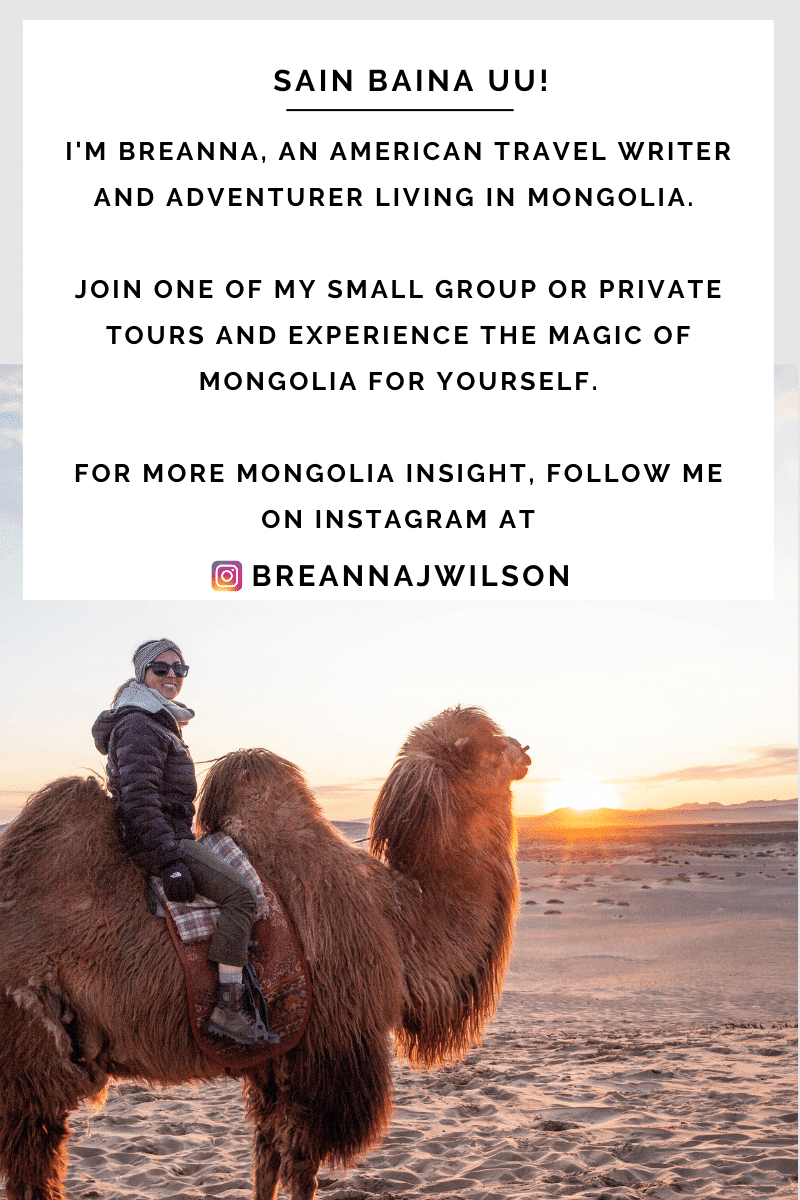
What do Mongolians Eat? 8 Lesser Known Mongolian Dishes to Try
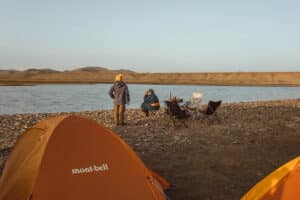
18 Tips for Camping in Mongolia

How to Safely Visit Ulaanbaatar’s Black Market
Table of contents.
When I say I love living in Mongolia, I mean it with every part of my heart and soul. It was after coming here in 2018 as a tourist to join a Mongolia tour and experience the local culture that I remember thinking, this place can’t be real.
It turned out to be the best way to experience Mongolia I could have asked for. That short trip made me realize the Mongolian steppe is one of the last truly untouched places in the world for nature lovers and true adventure seekers.
Nomadic families really did still live of the land, and their herds, the same way they have for thousands of years. Talk about sustainable.
In fact, 25% of the Mongolian population still lives this way. That’s a huge percentage in a country of just over 3.2 million.
However, it wasn’t just the Mongolian countryside that I fell in love with. After coming back and living a summer in Ulaanbaatar (also written as Ulan Bator), Mongolia’s capital city, I knew this was the country, and the place for me.
It’s by no means easy living here. This is not the United States, where everything runs smoothly. Language barriers are a thing, credit cards always have issues (especially Mastercard), and you really need to get used to Mongolian time. Whether you want to or not.
In the end, I’ve learned it’s better not to resist this style of living and just go with the flow. It’s probably the only reason I’ve made it this long here. Living here has taught me a lot about patience, compassion, and myself. Things living in Los Angeles, New York, and growing up in Pittsburgh couldn’t do in 32 years.
Because, when it comes down to it, Mongolia is a tough place to be as a foreigner among the local people. When I moved here, there was no information on how to navigate the the city, let alone rural Mongolia. I’m talking, nothing! I had to become my own local guide.
Not just for people crazy enough to move here like me, but for travelers, too. The type of people willing to travel more than 24 hours to a place where they usually have no idea about the chaos they are about to encounter. The kind of people who book a tour but the tour company could be real and you could have the adventure of the lifetime, or it could be a complete scam. The people who just go for it with fearlessness without ever looking back. Those are my people. You are my people.
So, I hope this Mongolia travel guide, along with the other guides on this Mongolia travel blog give you the insight and information that wasn’t available to me when I first came here. That these articles will help you navigate Ulaanbaatar like a local and Mongolia like a travel pro.
As always, if you need help planning an itinerary or have more specific travel questions, you can always book a 30-minute travel consultation with me. There’s nothing I love more than talking about Mongolia and getting people excited about visiting.
When is the Best Time of Year to Visit Mongolia?
Summer is the best time of year to visit Mongolia and is considered peak season. June, July, and August are beautiful months with a great deal of things to see and experience. This is when most tourists visit Mongolia, so you can expect peak rates, sometimes crowded natural landmarks and museums, and full flights.
The average summer temperature in Mongolia is between 25° and 32° C, with cold nights. You can comfortably wear t-shirts during the day and a light jacket when it gets dark. Dust storms are common in the summer season, especially when you’re on the wide-open plains.
Keep in mind that if you visit areas in the north or west, at higher elevations, temperatures will be lower than this. If you visit places in the south, particularly the Gobi Desert, temperatures will be much higher. Temperatures in the Gobi Desert average 40° C, and higher, in June, July, and August.
If you plan to visit Mongolia in the summer, especially in July, book your tours, hotels, and flights no later than March. July is the busiest month for tourism in Mongolia thanks to the Naadam festival. Hotel rates in Ulaanbaatar are even known to double in price between July 10 and 12, when the Opening Ceremony takes place in the city.
Naadam is the biggest and most important festival of the year and visiting Mongolia during Naadam gives you the best of Mongolia, and Mongolian culture, in just a few short days. The festival always takes place in July, with the National Opening Ceremony always being held in Ulaanbaatar on July 11. Thus, the high hotel rates in the city.
It’s during Naadam when you can watch wrestling, horse racing, and archery competitions big and small across the country.
Here are some other great things to see and experience when visiting Mongolia in June, July, and August:
- Annual Naadam Festival
- PlayTime Music Festival
- Spirit of Gobi Music Festival
- Tenger World Shaman Festival
- Mongol Derby
- Monkey Run Mongolia
- Free Daily Cultural Shows in Ulaanbaatar
- Polo Matches at the Genghis Khan Retreat and Polo Club

What to Expect When You Visit Mongolia in Fall, Winter, or Spring
While summer is the most popular, and best time to visit Mongolia for many reasons, fall, winter, and spring shouldn’t be immediately ruled out. Here are a few reasons why.
Personally, fall is my favorite time to be in Mongolia .
Tourism starts to die down at the end of August as school starts and the weather starts to get a bit chillier and days shorter. This is the time when most nomadic families begin to prepare for the cold winter months ahead, which makes it an especially interesting time to visit. You can help families move to their winter camps, either by truck, camel, or yak, and help tear down and build their gers (homes) with them. It’s a special time to bond with families and feel like you’re being useful. The worst is when you go somewhere and feel like they’re just putting on a “show” for tourism reasons. This isn’t that. I can promise.
September is also the time when the landscape turns a beautiful golden hue. Trees turn bright shades of yellow, orange, and red, and snow starts to cover the mountain tops.
Because of all these things, traditional ger camps begin closing up for the season at this time. This is usually to traveler’s benefits because it means you can find great deals on nightly rates before they do.
Then, when October hits, it’s time for the famous Golden Eagle Festival .
The festival is extremely popular with tourists, so be sure to make your arrangements if you want to attend as far in advance as possible. I would recommend making your arrangements before June. Especially since securing flights from Ulaanbaatar to Ulgii can be tricky and confusing. For this I also recommend hiring a local tour company to make all your arrangements.
The annual Golden Eagle Festival is always held the first weekend in October .
Here are some other great things to see and experience when visiting Mongolia in September, October, and November:
- Sagsai Eagle Festival
- Golden Eagle Festival
- Ulaanbaatar Jazz Week
Don’t let the idea winter in Mongolia intimidate you. Yes, temperatures do reach -30° C. And yes, Ulaanbaatar is officially the coldest capital city in the world . But it’s because of these things Ulaanbaatar, and Mongolia, are something special to see and experience during December, January, and February.
While temperatures do drop to around -30° C, you can still do things like visit and spend the night in a yurt with a nomadic family out in Gorkhi-Terelj National Park. Out there, you can go horseback riding on Mongolia’s famously wild horses, and even dog sledding through the winter wonderland that has become the snow-covered countryside.
Or, better yet, head down to the Gobi Desert, one of the only deserts in the world where snow can lay across the dunes covering them in a sea of white. This is the perfect time to experience the natural beauty of the Mongolian desert, but with fewer crowds.
Alternatively, Tsagaan Sar , or Mongolian Lunar New Year, happens in February and is a unique way to experience a Mongolia relatively free of other tourists.
The holiday marks the first day of spring and a time when Mongolians take the time to visit each of the elders in their family, bringing gifts and sharing a meal. This is a special time for Mongolians to celebrate with family and look forward to new beginnings.
Here are some other great things to see and experience when visiting Mongolia in December, January, and February:
- Ulaanbaatar’s Christmas Markets
- New Year’s Eve Celebrations
- Tsagaan Sar (Lunar New Year)
- See the Gobi Desert Covered in Snow
- Dog sledding on Lake Khusvgul
- Ice Fishing
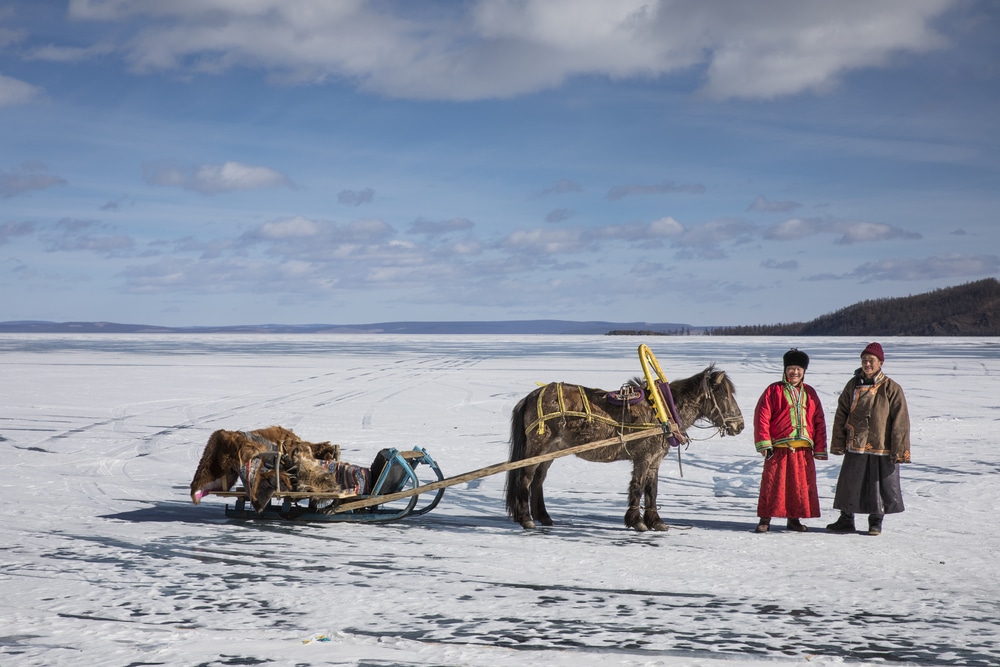
While most people think of spring as a time when temperatures start to warm up, flowers begin to bloom, and life returns to nature, spring in Mongolia isn’t quite that. In fact, spring is still uncomfortably cold and you should probably just think of spring in Mongolia as winter-lite.
Blizzards can still occur in May, which locals refer to as dzud (or zud, a natural phenomenon that kills off a large portion of herds from starvation since they aren’t able to graze), and it’s still a harsh time in the country as locals start to run out of winter rations and look forward to warmer summer months.
However, as is usually the case in Mongolia, the brave are rewarded with two very cool festivals that make a trip to Mongolia in the spring worth it.
The annual Camel Festival is held each March in the Gobi Desert.
During the festival, there are camel polo matches, camel races, and friendly competitions among the local camel breeders. Mongolia is one of the few places in the world where you find Bactrian (two-hump) camels, and the Gobi Desert one of the only deserts in the world where snow accumulates. Making a trip down to the desert during this time is actually quite a magical experience.
Also in March, the annual Ice Festival is held on Lake Khuvsgul, the world’s second-largest freshwater lake. The lake is completely frozen over and is strong enough to drive cars over and host an entire festival on.
And yes, this region bordering Siberia will be every bit as cold as you’d expect it would be, so don’t come unprepared. A fur-lined winter deel (traditional Mongolian robe) probably wouldn’t be a bad investment. You can have one custom-made in Ulaanbaatar as soon as you land.
Here are some other great things to see and experience when visiting Mongolia in March, April, and May:
- Camel Festival
- Ice Festival
- Ulaanbaatar Eagle Festival
Finding a Cheap Flight to Mongolia
Check the cheapest rates to Ulaanbaatar on CheapOair.com below.
The best direct flights to Mongolia are on the following airlines:
- Mongolian National Airline (MIAT)
- Turkish Airlines
If you’re traveling from the U.S., your two best options are via Istanbul on Turkish Airlines or via Seoul on Korean Air. I usually recommend traveling via Istanbul if you’re departing from the east coast and via Seoul if you’re departing from the west coast.
Turkish Airlines is my personal preference and I’ve never had an issue with them. I particularly like Turkish Airlines right now because they have a layover program that includes a free 4-star hotel in Istanbul . Besides helping break up your jetlag, it’s also an excuse to cross another country off your list. Two birds, one stone!
From Europe, flying via Frankfurt on MIAT, Mongolia’s national airline, is another good option. As an airline, MIAT is safe, but they don’t always have the best track record for being on time, having a smooth check-in process, and cancellations do happen with them more often than other airlines. I have flown MIAT, but they usually aren’t my first choice.
Internal domestic flights can be booked through MIAT, Aero Mongolia, or Hunnu Air. Domestic roundtrip flights are not cheap, usually costing at least a few hundred U.S. dollars. It’s also extremely confusing to book these flights on your own, especially without a local Mongolian bank account. If you plan to book a domestic flight in Mongolia, I recommend getting a local tour guide or agency to help you through the process.
Once you land in Ulaanbaatar at Chinggis Khaan International Airport, here are the best ways to get from the airport into the city center .
Taking the Trans-Siberian Railway
Taking the Trans-Siberian Railway from Moscow to Beijing is one of the most iconic train journeys in the world. It’s high on my list of things to do, and I’m hoping to do it sooner rather than later.
Conveniently, the Trans-Siberian Railway stops in Ulaanbaatar, giving travelers an excuse to explore the city and surrounding countryside for a few days. The train station is located in the heart of Ulaanbaatar and most hostels and guesthouses offer free transfers from the train station.
Tips for Taking Taxis, Public Transportation, and Hiring a Driving
When it comes to hailing a taxi, finding the bus schedule, or hiring a private driver, there are a few things to know. Use these travel tips for getting around Mongolia cost-efficiently and with less hassle than if you were to have to figure it out on your own.
Finding a Taxi in Ulaanbaatar
You can hail a taxi in Ulaanbaatar simply putting out your hand to your side, signaling you’re looking for a ride.
These are not official taxis, but they are the most common way to get around the city. It’s how I get around almost every day. It’s safe and reliable, but you do need to explain where you’re going. I usually tell the driver a major landmark that’s close enough to where I’m going or I show them on Google Maps. On occasion, the driver will ask for your destination before allowing you in their car, just in case they aren’t going that way. Both male and female drivers stop and do this, sometimes with kids and other family members in the car. It’s all normal here.
When it comes time to pay your driver, expect to pay 1,500 MNT per kilometer . It’s helpful to have small bills and exact change, most drivers don’t carry cash.
If the thought of getting into a strange Mongolian’s car freaks you out, apps like UBCab are the Mongolian equivalent of Uber, which don’t exist in Mongolia. You’ll need a local Mongolian number to register within the app and begin requesting rides. The app is okay from a user perspective and the driver usually calls when they’re on their way to your pickup location.
You’ll still need cash if using UBCab, the app doesn’t accept credit cards. At the end of the ride you’ll see your total in the app, which also helps you get a gauge on the average taxi price to get around the city.
Scooters and Bikes
Ulaanbaatar is now home to both scooter and bike sharing apps.
Jet scooters are hard to miss scattered around town. To use one, download the Jet app ( Apple , Android ), scan the scooter’s QR code, and then pay by the minute. You can use the app to find a nearby scooter and while they are a convenient way to beat rush hour traffic, Ulaanbaatar’s sidewalks and drivers don’t make it the safest option. Ride with caution!
Hi Sainuu ( Apple , Android ) is the bikesharing app that’s taken over the city. It works much the same way as Jet and, again, should be used with caution.
Public Transportation in Ulaanbaatar
Buses within Ulaanbaatar are often crowded, especially around rush hour thanks to a lack of routes and other public transportation options. Ulaanbaatar does not have a subway system.
Cash is not accepted once you step on the bus so you’ll need a refillable U Money Smart Card (3,600 MNT to purchase) to take the bus. The price per ride is 500 MNT. You can purchase and refill a U Money Smart Card at bus kiosks around town or inside CU convenience stores. Note that routes and bus numbers will appear in Cyrillic.
You can find information on bus stops, waiting time, routes, and U Money kiosks on the UB Smart Bus app ( Apple , Android ).
Additionally, it’s possible to take buses from Ulaanbaatar to different cities throughout the country. Bus tickets and schedules are found at the Dragon Center Bus Station, on the outskirts of Ulaanbaatar. You can now purchase bus tickets to destinations outside of Ulaanbaatar online , but be warned the system doesn’t always work as promised. I recommend going to the bus station a day before you plan to depart Ulaanbaatar to get the most up-to-date schedule and purchase your ticket in-person then.
A bus ride to Moron, for example, will be relatively inexpensive, costing 32,000 MNT for the 14-hour ride.
Renting a Car in Ulaanbaatar
Renting a car in Mongolia these days isn’t as cheap as it used to be. In fact, it’s downright expensive. With only two major rental companies to choose from, Avis and Sixt, there’s a monopoly on the car rental market. When you rent from either company, expect to pay a deposit on the rental around $2,000 USD, not including any of your rental costs, which will also need paid up front. If there’s no damage done to the car, you’ll get the deposit money back after returning the rental at the end of your trip.
One hack to that is renting a car through a company like Follow the Tracks . The company offers self-driving tours of Mongolia and these cars are equipped with rooftop tents and they even give you a route to follow.
Another reason I really like Follow the Tracks is because it can be very difficult to navigate Mongolia on your own. Once you leave the city the roads conditions start to worsen, and fast.
Unless you’re a driver who’s really comfortable driving off-roading, and in extreme conditions, I don’t recommend renting a car in Mongolia.
Instead, hire a driver.
Hiring a Driver in Mongolia
There are a few benefits to hiring a driver in Mongolia.
First, like I mentioned above, unless you are really comfortable driving off-road, driving in Mongolia is not easy.
Second, you can’t beat the cost. The cost per day to hire a driver with a car in Mongolia is currently 200,000 MNT per day. You are responsible for the driver’s meals, making sure they have a place to sleep, and you’ll pay for your own gas along the way. Your gas costs will depend on your route, and the type of car you’re in, but expect to fill up at least three to four times during your trip at 300,000 to 400,000 MNT per tank.
Your driver will need to be paid in cash at the end of your trip. Gas can usually be paid for by credit card at gas stations like Petrovis, but you should also carry emergency cash on you for at least two tanks of gas, just in case.
I recommend hiring a driver with either a Toyota Land Cruiser 200, Toyota Delica, or Russian UAZ furgon. These will be the most reliable cars that will get you across the steppe. UAZ furgons are the least comfortable of the three options, and usually also the cheapest.
Drivers are always flexible, easy going, and ready to fix their own car when something goes wrong. Something I can almost guarantee will happen. Usually drivers don’t speak English, but you’ll quickly learn the key words you need to get through your journey. Never underestimate the power of sign language and Google Translate. Take the time to get to know your driver, they’re funny characters that start to become like family in no time.
Popular Mongolia Guides:
- 11 Traditional Mongolian Foods To Know
- Gift Ideas for Visiting a Nomadic Family
- Best Books About Mongolia
- What to Budget and Travel Costs (2023)
- How to Get From Ulaanbaatar Airport to the City Center
Itinerary Ideas & Packing Lists:
- Chinggis Khaan Equestrian Statue & Gorkhi-Terelj National Park Day Trip
- How to Attend Naadam, Mongolia’s Biggest National Festival
- Mongolia Packing List: The Essentials
Plugs and Voltage
Sockets in Mongolia work with both U.S. (type B plugs with two flat prongs and a grounding pin) and European plugs (type C plugs with two round pins). Each socket has one type of each plug.
So, if you’re coming from the U.S., your device will work in most wall sockets in Mongolia. However, it is important to note that there will be a voltage difference. In Mongolia the sockets are 230 volts, compared to the typical 120 volt sockets we use in the U.S.
Most computer chargers, phone chargers, and other electronics have power converters built into the device to account for these types of voltage differences.
For example, I use my U.S. computer charger without any issue. I plug it right into the socket in my apartment, in coffee shops, in hotels – everywhere – and I’ve never had an issue. The same goes with my phone charger, camera battery charger, drone charger, hair straightener, and just about any other electronic you can think of.
If you’d like to bring a wall charger that will allow you to charge via USB-A and USB-C, I recommend this travel adapter . This two pack also gives you the most charging power out of the shortest available charging time.
When packing for Mongolia, be sure to bring travel adapters, power banks, extra C charging cables, and a solar powered charger, if you have one. Electricity is not reliable or regularly available once you leave Ulaanbaatar, so you need to be prepared if you plan to travel around the country for several days. Especially if you plan to do a homestay or spend time in the more remote corners of the country.
As I mentioned above, be aware that the voltage is much higher in Mongolia than it is in the U.S. (230 V vs 120 V). If you plan to plug directly into the wall socket make sure your device has a built-in power converter, or you have a power adapter that allows for dual voltage.
Getting a SIM Card
The best place to get a physical SIM card in Ulaanbaatar is at the State Department Store on the 5th floor. There you’ll find Unitel , MobiCom , Skytel , and gmobile kiosks next to each other. Since they are all located next to each other, it’s easy to browse and compare each company’s service plans and choose the right one for your trip.
Most locals use Unitel, myself included, which offers some of the best service coverage across the country.
Getting a SIM card is quick and easy, but you will need to bring your passport with you to get one issued. You can use a credit card or cash to purchase your car and plan, which should cost less than 40,000 tugrik all together.
If you have an iPhone 15 that doesn’t have a SIM card holder , you can ask for your SIM to be converted to an eSIM . From experience, I know that Unitel offers eSIM cards .
eSIMS are also available in Mongolia and can be purchased through apps like Airalo. Purchasing an eSIM this way is more expensive ($35 USD compared to $10 USD), but it is more convenient and works just as well as using a physical SIM. If you’re short on time and won’t have time to make it to the State Department Store before leaving the city, this is a great option.
Before you purchase a SIM card of any kind, be sure to ask yourself if you really need or want one. Service in the countryside is hit and miss, so even if you purchase a SIM you may not have any data or service.
Only purchase one if it’s absolutely necessary for you to stay connected. Otherwise, enjoy being disconnected, that’s one of the best things about traveling in Mongolia.
If you do decide to purchase a SIM, the two most reliable service providers in Mongolia are MobiCom and Unitel. Tourist plans start as low as 20,000 tugrik and include international call rates, SMS messaging, and different levels of data. No service provider will be able to offer unlimited data, we just don’t have that in Mongolia yet.
Exchanging Cash in Ulaanbaatar
The local currency in Mongolia is Tugriks , also spelled togrog or used as the abbreviation MNT.
As of December 2023, one USD = about 3,455 Tugrik .
You will always need to have cash on hand in Mongolia. Even in Ulaanbaatar where credit cards are becoming more widely accepted. But, you can’t always rely on them to work. It’s especially known that there are issues with Mastercard credit cards and American Express. If you have a Visa credit card, that is your best option for using around the city.
Cash will always be needed if you hail a taxi off the street, and be sure to carry smaller bills on you at all times. Expecting exact change isn’t always possible. I recommend carrying at least ten 1,000 MNT bills, four 5,000 MNT bills, and two 10,000 MNT bills with you at all times. This is still a country where cash is king.
The easiest way to exchange USD or Euros for Tugriks is at one of the currency exchange offices off of Sambuu Street, near the Holiday Inn , where this Google Maps pin is.
There is also a cash exchange stand in the State Department Store, on the third floor, near the kitchen electronics.
ATM’s are more available than cash exchanges in the city, so you can pull out money that way as well. ATM’s typically have a withdraw limit of 500,000 MNT, 800,000 MNT at very select terminals.
Prepare to have what will seem like a large amount of cash on you and note that Mongolia does not use coins.
While most tour operators, guides and private drivers are happy to accept cash in USD or Euros, taxi drivers and local businesses will only accept MNT.
Take my advice and take care of this before you leave Ulaanbaatar for the countryside. Finding working ATMs and currency exchange counters isn’t so easy in the country’s small towns and remote areas.
Visa-Free Countries and How to Get an E-Visa
Citizens from more than 60 countries, including the U.S., Canada, Australia, New Zealand, Germany, Italy, Spain, and the United Kingdom of Great Britain and Northern Ireland can enter Mongolia without needing a visa.
U.S. citizens do not need a visa to enter Mongolia. If you are a U.S. passport holder, and you plan to stay more than 30 days, you will need to register with the immigration office within 7 days of arriving in the country. Then, you can stay up to 90 days without issue. If you fail to register with immigration, you’ll be fined a few hundred dollars at the airport when leaving the country.
Citizens of Canada, Denmark, Belgium, Germany, Iceland, Israel, Italy, France, Spain, Greece, Norway, Sweden, and Switzerland can stay visa-free for up to 30 days .
Citizens from 98 countries, including India, China, Mexico, Saudi Arabia, South Africa, and Armenia can now apply for an electronic visa before departing for Ulaanbaatar.
See the full list of visa-free countries here.
Registering with the Immigration Office
When I first started coming to Mongolia this process had to be done in person at the Immigration Office, which is nowhere near the center of town. Today the process is automated and takes only minutes to complete.
U.S. citizens who plan to stay in Mongolia for more than 30 days need to register with the Immigration Office within 48 hours of arrival.
This has nothing to do with being allowed to stay for up to 90 days visa free. This is absolutely mandatory. I can’t stress this enough. If you fail to register at the Immigration Office you will be stopped at passport control on your way out of the country and not allowed to board your flight until you pay the fine for violating this law. Even worse, you could be banned from entering the country ever again.
Luckily, you can now register with the Immigration Office online.
To register online with immigration you will need to do the following. You will need the information for the person responsible for your stay in the country, including their ID number, email, local phone number, and address . You should have this information before you begin filling out the form.
- Go to https://immigration.gov.mn/en/
- Click “Registration of a Foreign National”
- Follow the steps on the form
- Click submit and you’re all set. The form may not look like it’s been submitted, but it has.
- You won’t receive a confirmation email so I recommend taking a picture of the screen or a screenshot in case there is an issue or dispute when you go to leave the country.
Language and Religion
Mongolian is the official language spoken in Mongolia. It’s written using the Cyrillic alphabet. Although it’s becoming more common to see it written using Latin letters.
Russian and English are the second and third most spoken languages by Mongolians. However, don’t expect most people in Ulaanbaatar to speak English. Most Mongolians don’t.
It will be more likely to find English-speakers in Ulaanbaatar. Once you leave the capital, don’t expect English to be a common language to use for communicating. (You can always use my Mongolian Language Cheat Sheet for help.)
Buddhism is the main “religion” practiced in Mongolia. About 80% of the population considers themselves Buddhist.
Mongolians also believe in respecting the earth and its inhabitants above all else. This is called Tengerism and it was primary religion in Mongolia centuries ago. Today Tengerism and Shamanism still play an important role in the core beliefs of most Mongolians, but they’ll still call themselves Buddhists.
While most of the country’s monasteries were destroyed during Soviet times, a handful can still be found across the country and are worth taking the time to seek out and visit.
Eating and Drinking in Mongolia
There are many amazing traditional Mongolian dishes to taste during your travels. From homemade buuz (dumplings) to tsuvian (friend noodles with dried meat and vegetables) and khuushuur (think: Mongolian hot pocket meets an empanada), you’ll have plenty of opportunities to taste them all. Especially if you’re planning to spend time with a nomadic family in their home.
There are a few important things to remember about eating and drinking in Mongolia.
First, it’s rude to accept food and not finish it. Food is a scarce and sacred resource on the steppe and it should be treated that way.
Second, always accept a plate, cup of tea, or anything else from your host with your right hand or two hands.
Finally, drinking is very common in Mongolian culture. A bottle of vodka for your nomadic host will always go a long way but be warned that (like many post-Soviet countries), alcoholism can be a problem. Always drink with caution and be aware of your surroundings and never drink and drive. Mongolia has a zero tolerance policy.
Besides vodka, airag , or fermented mare’s milk, is another common alcoholic beverage. It’s most commonly consumed in the countryside, where nomadic families make their own brew. Be cautious when drinking airag, your stomach won’t be used to the bacteria and it’s been known to make people run to the toilet. I’m speaking here from experience!
I recommend keeping your drinking to a minimum when you’re staying with a host family. Especially if you’re female or traveling alone.

Travel Insurance and Emergency Healthcare
Getting medical treatment is cheap compared to other countries. I paid about $3,000 all in for surgery in Ulaanbaatar at a private hospital when I broke my collarbone. If I was in the U.S. that same surgery would have probably been $30,000.
The downside of cheap medical treatments is that they aren’t always the most reliable or consistent. While I had a great experience, I can’t say that other foreigners have had the same.
This is why I always recommend purchasing travel insurance for your trip to Mongolia.
Should something terrible happen to you during your trip, such as a horse riding or car accident, your travel insurance policy should cover medical emergencies and evacuation. Be sure to do your research when looking at policies and choose the best one for you, your travels, and your budget.
Look for a policy that also covers trip cancellation in case you need to unexpectedly cancel your travel plans. Trip cancellation policies cover unforeseen events, like an illness, injury, jury duty, or an airline strike. Reimbursable costs in these instances could include transportation, accommodations, and tour costs, up to 100% depending on your policy.
If you experience a medical emergency while in Ulaanbaatar, the phone number is +976 103.
If you experience a medical emergency while outside of Ulaanbaatar, the best thing to do is get to the city as quickly as possible. If you don’t need to, don’t go to one of the local towns for medical treatment.
Hospitals I can vouch for in Ulaanbaatar are:
- UB Songdo Private Hospital
You can find more information, including each hospital’s location and contact information, on our what to do in case of emergency page.
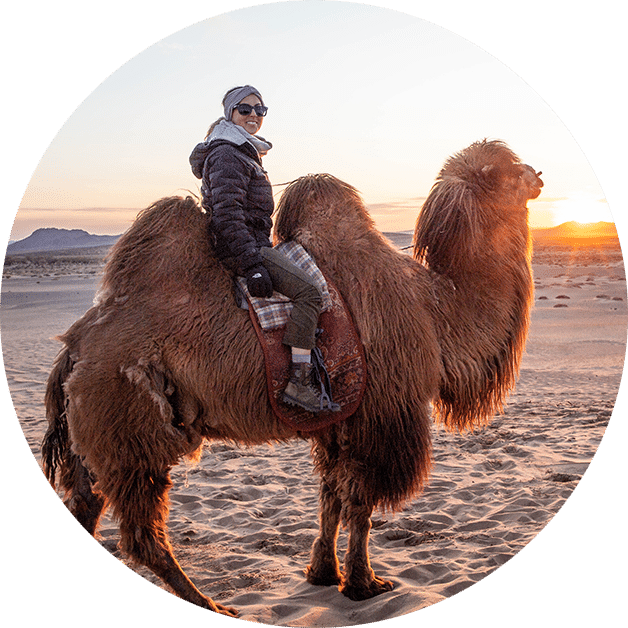
Author: Breanna Wilson
Hi! Sain uu! I’m Breanna, an American travel writer and adventurer living in Ulaanbaatar, Mongolia for more than 5 years. I’ve written for and been featured in Condé Nast Traveler, CNN, Forbes, and the New York Times, among others. Read more of my Mongolia travel articles here .
Mongolia hasn’t been on my radar, but after reading your post I have changed my mind. Thanks for the inspiration.
This sounds like a tremendous cultural experience. A lot of good information and tips on visiting Mongolia.
My mate visited the Golden Eagle Festival last year and it looked like such an amazing experience! That’s insane that rental companies are charging 2k for a deposit?! I wouldn’t be able to decide went visit, autumn sounds like a great time for me (I think i will struggle in the summer heat). Such a thorough guide. Thanks!
Great timing for this post, thanks for the practical information for a trip.
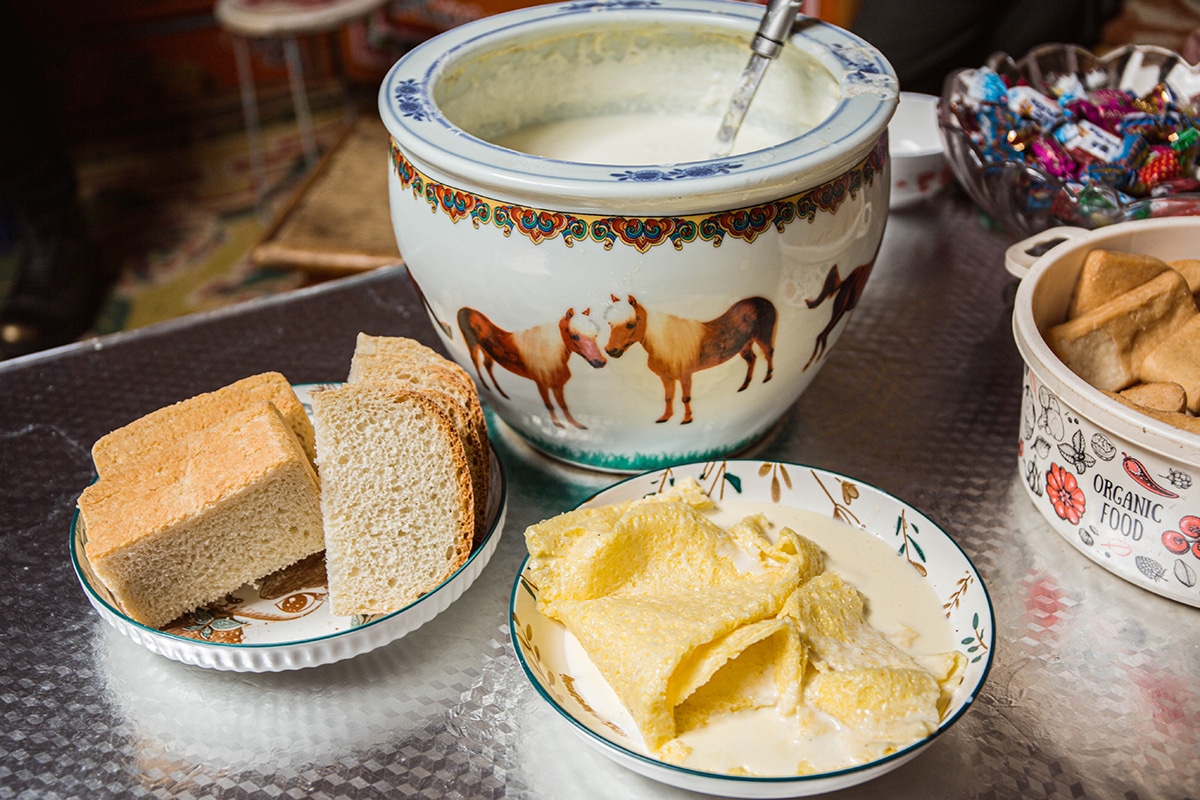
Yeruu Lodge, the Best Place to Stay in Selenge Province
Privacy policy, terms & conditions, join my private travel group on facebook.
Proudly Based in Ulaanbaatar, Mongolia © 2024 Meanwhile in Mongolia
AFFILIATE NOTICE
This website contains links to products and services where I may make a commission when you purchase. This supports the continued upkeep and development of this website. For an explanation on this policy, read my Advertising Policy page .

How Much Does Trip to Mongolia Cost?
Mongolia, a vast landlocked country in East Asia, offers a unique travel experience with its breathtaking landscapes, rich cultural heritage, and nomadic traditions. If you’re planning a trip to Mongolia, it’s essential to have an idea of the typical costs involved. In this article, we will explore the various aspects that contribute to the overall expense of a trip to Mongolia, providing you with insights to plan your adventure.
Table of Contents
Accommodation Costs
Accommodation options in Mongolia range from traditional nomadic ger camps to modern hotels in the capital city of Ulaanbaatar. The cost of accommodation varies depending on your preferences. Ger camps, which offer an authentic Mongolian experience, can cost anywhere from $20 to $100 per night. Upscale hotels in Ulaanbaatar may range from $80 to $200 per night.
Ger camps provide a one-of-a-kind accommodation experience that sets Mongolia apart from other destinations. The gers are typically furnished with cozy beds, traditional rugs, and colorful decorations, creating a warm and inviting atmosphere. Despite their simplicity, the gers offer a comfortable and peaceful setting for a restful night’s sleep.
Standard ger camps provide basic amenities and are usually more affordable. The prices for standard ger camps typically range from $20 to $50 per night, per person.
Mongolia’s major cities, such as Ulaanbaatar, offer a selection of upscale hotels that provide a luxurious and comfortable experience. These hotels boast modern amenities, spacious rooms, elegant decor, and a wide range of services. Prices for luxury hotels in Mongolia can range from $100 to $500 or more per night.
Mid-range hotels in Mongolia offer a balance between comfort and affordability. They provide comfortable rooms, essential amenities, and convenient locations. These hotels are a popular choice for both business and leisure travelers. Prices for mid-range hotels typically range from $50 to $150 per night
Prices for budget hotels can range from $20 to $50 per night, depending on the location and the level of comfort provided. Though I wouldn’t personally recommend them since they are utter shite and dirty.
Guest Houses
Guest houses in Mongolia are known for their affordability, making them an excellent choice for budget-conscious travelers. Prices typically range from $10 to $30 per night, depending on the location, facilities, and level of comfort offered. Staying in a guest house allows you to save money on accommodation while still experiencing the warmth and hospitality of the Mongolian people.
Transportation Costs: Getting Around Mongolia
When planning a trip to Mongolia, it’s important to consider transportation costs as they can significantly impact your budget. Mongolia offers various transportation options, including international and domestic flights, trains, buses, and cars
International Flights
Generally, flights from major international airports to Ulaanbaatar, the capital city of Mongolia, range from $500 to $1,500 or more for a round-trip ticket. It is quite expensive, but if you plan ahead and book earlier, you could get it a bit cheaper.
Domestic Flights
Domestic flights connect major cities and towns across the country, including popular tourist destinations. The cost of domestic flights in Mongolia depends on the distance and the airline. Prices for domestic flights can range from $100 to $250 or more, depending on the route and availability. Airlines include, Hunnu Air and AeroMongolia.
Mongolia has an extensive rail network, and trains offer a scenic and leisurely way to travel through the country. The most popular train route in Mongolia is the Trans-Mongolian Railway, which connects Ulaanbaatar with Russia and China. Train tickets are relatively affordable, with prices varying based on the class of travel, distance, and the duration of the journey. For example, a one-way train ticket from Ulaanbaatar to Beijing can range from $150 to $300, depending on the class of service.
Or if you are traveling through the country, you can find tickets for as little as $10.
Buses are a common mode of transportation for both short and long distances within Mongolia. They are generally the most economical option and offer extensive coverage throughout the country. The cost of bus tickets in Mongolia is relatively low, with prices ranging from $5 to $30 depending on the distance traveled and the type of bus.
However, I wouldn’t recommend taking a bus. For safety and comfort reasons, travel via train or plane.
Car rental prices in Mongolia can vary depending on the vehicle type, rental duration, and the company you choose. On average, renting a car in Mongolia can cost around $50 to $150 per day, excluding fuel and additional insurance.
Taxi fares in Mongolia are relatively affordable compared to many other countries. The price per kilometer can vary slightly between different taxi companies, but as of the latest available information, the average starting fare is around 1,500 to 2,000 Mongolian Tugrik and 1,500 – 2,000 MNT for a kilometer. Usually getting around the city will cost you on average $3 if you go about 5kms per trip or 3 miles. Ulaanbaatar is a small city, so you can actually walk to most places.
In Mongolia, you will find two main types of taxis:
- Hailing unofficial taxi : You can try taking unofficial taxis by stretching out your right hand along the road palm facing down. However, I wouldn’t necessarily recommend this option since locals might try to take advantage of you and charge your way more.
- Ride-Hailing Services : Similar to popular ride-hailing services in other countries, Mongolia also has its own ride-hailing platforms. These platforms allow you to book a taxi using a mobile app, providing you with convenience and the option to track your driver’s location. Try UBCab .
Food and Dining Costs
Exploring Mongolia’s unique culinary landscape is an essential part of any trip to this fascinating country. From traditional Mongolian dishes to international cuisine, Mongolia offers a variety of dining options to suit different tastes and budgets. Here’s an overview of food and dining costs in Mongolia:
Restaurants
- CU or convenience stores: If you need a quick bite for cheap, CU and GS25 offers meals for as little as $2-$3.
- Local Eateries and Cafés : Local eateries and small cafés offer affordable options, with meals ranging from $5 to $10 per person.
- Mid-Range Restaurants : Mid-range restaurants in urban areas offer a wider range of cuisine, including Mongolian, Asian, and international dishes. Prices for a meal in a mid-range restaurant typically range from $10 to $20 per person.
- Upscale Restaurants : Upscale restaurants in luxury hotels or popular tourist areas offer a more refined dining experience. Prices in upscale restaurants can range from $20 to $50 or more per person, depending on the restaurant and menu selection.
Grocery Stores and Self-Catering
If you prefer to cook your meals or have a limited budget, shopping at grocery stores and preparing your own meals is an option. Grocery prices in Mongolia are generally affordable, but fruits, vegetables, and imported goods tend to be a lot more expensive. Relatively organic meats are much cheaper and tastier.
Tap water in Mongolia may not be safe for drinking, so it’s advisable to rely on bottled water, which is widely available in stores and hotels. Bottled water prices are generally inexpensive. As for beverages, prices for soft drinks, tea, and coffee in restaurants and cafés range from $1 to $3, depending on the establishment.
Tipping in Mongolia
Tipping is not customary in Mongolia, but it’s appreciated for exceptional service. If you choose to tip, leaving around 10% of the bill as a tip is generally considered generous.
Entertainment in Ulaanbaatar
Ulaanbaatar, the capital city of Mongolia, offers a vibrant and diverse entertainment scene. From cultural performances and live music to museums and outdoor activities, there are plenty of options to keep you engaged and entertained during your visit. Here’s an overview of entertainment costs in Ulaanbaatar:
Museums and Cultural Sites
Ulaanbaatar is home to several museums and cultural sites that offer a glimpse into Mongolia’s rich history and heritage. The entrance fees for museums in Ulaanbaatar vary, but on average, you can expect to pay around $5 to $10 per person. Some popular museums and cultural sites in Ulaanbaatar include the National Museum of Mongolia, Gandantegchinlen Monastery, and the Bogd Khan Palace Museum.
Performing Arts and Cultural Shows
Attending a traditional Mongolian performance or cultural show is a fantastic way to experience the country’s vibrant arts scene. The cost of tickets for performances can vary depending on the venue and the type of show. On average, ticket prices for cultural performances in Ulaanbaatar range from $10 to $30 per person. These performances often feature traditional Mongolian music, dance, and throat singing.
Live Music and Nightlife
Ulaanbaatar has a lively nightlife scene, with numerous bars, clubs, and live music venues catering to different tastes. The cost of enjoying live music or spending an evening at a bar or club can vary depending on the establishment and the type of entertainment. Generally, you can expect to spend around $10 to $30 for entrance fees, and additional costs may include food, drinks, and table reservations.
Cinema and Theater
Ulaanbaatar has modern cinemas and theaters where you can enjoy the latest movies and theatrical performances. Ticket prices for movies vary, with weekday showings generally being cheaper than weekend screenings. On average, movie tickets in Ulaanbaatar cost around $5 to $10 per person. Theater performances may have varying ticket prices depending on the production and venue.
Parks and Recreation Areas
Ulaanbaatar has several parks and recreational areas where you can relax, enjoy nature, and engage in outdoor activities. Entry to most parks is free, but some attractions within the parks may have separate fees, such as amusement rides or guided tours.
Costs For Tours in Mongolia
The cost of tours in Mongolia can vary depending on several factors, including the tour type, duration, level of comfort, and the number of participants. Here are some approximate price ranges to give you an idea:
- Nomadic Homestay Tours : Prices for nomadic homestay tours can range from $50 to $100 per day per person, including accommodations, meals, transportation, and the services of a guide.
- Gobi Desert Tours : The cost of Gobi Desert tours typically ranges from $80 to $150 per day per person, including accommodations, meals, transportation, and a guide.
- Cultural and Historical Tours : Cultural and historical tours can range from $100 to $200 per day per person, depending on the duration, itinerary, and level of comfort. These tours often include accommodations, meals, transportation, and a knowledgeable guide.
- Adventure and Outdoor Tours : Prices for adventure tours vary widely based on the activities included and the level of comfort. On average, adventure tours can range from $100 to $250 per day per person, including accommodations, meals, transportation, and expert guides.
If you want to save money, you can just rent a car and travel with your Mongolian friend. That way, you won’t necessarily have to pay for additional tour costs, but the difference isn’t that much to be honest since renting a car by itself costs almost $50-$100 per day. If your friend has a car however then it’s significantly cheaper.
We also offer tours in Mongolia , so check it out as well if you want to get a ballpark for how much tours cost.
Average Petrol Prices
The average price for unleaded gasoline in Mongolia ranges from 2,400 to 2,800 Mongolian Tugrik (MNT) per liter. For higher grade petrol, it’s 3500 (MNT).
Availability of Gas Stations
Gas stations in Mongolia are predominantly located in urban areas and major towns along popular travel routes. While you can find gas stations in cities like Ulaanbaatar and other major towns, it’s essential to plan your fuel stops carefully, especially when traveling to remote areas. It’s recommended to fill up your tank whenever you come across a gas station to ensure you have an adequate fuel supply for your journeys.
Payment Methods
Most gas stations in Mongolia accept cash payments in the local currency (Mongolian Tugrik). Credit or debit cards may not be widely accepted at all fuel stations, especially in more rural or remote areas. It’s advisable to carry sufficient cash in the local currency to pay for fuel expenses.
How Much Can You Expect To Pay Per Day?
With all that said, here are some estimates for how much you will spend per day based on your budget.
- Backpacking: If you are backpacking and broke, then $10 / night for hostel or cheap guest house, $5 for food, and $5 for entertainment + any travel ticket will do. So you are looking at around $20-$30 per day.
- Mid-range: Clean and decent hotels cost $30-$50/night, and assuming you eat out mostly $15 for food and $15 for entertainment + travel tickets, you are looking at $60 – $100 per day.
- Luxury-travel: If you have money to spare, then a 5 star hotel will cost around $80-$150/night, with food at nicer restaurants $30-40 and assuming you want to go clubbing without thinking about budget, $300-$400 per week + any travel tickets, you are looking at $200-$300/day on average.
How much does it cost to fly to Mongolia?
The cost of flying to Mongolia can vary depending on several factors such as the departure location, time of booking, and airline. On average, round-trip international flights to Mongolia can range from $500 to $1,500, but prices can be higher during peak travel seasons. It’s advisable to compare prices across different airlines and book in advance to secure the best deals.
Is Mongolia expensive to travel?
Mongolia can be considered a moderately priced travel destination. While some expenses such as accommodations and transportation can be relatively affordable, other factors like tours, activities, dining, and flight tickets can vary in price.
How much money will I spend per day in Mongolia?
On average, travelers can expect to spend approximately $50 to $100 per day in Mongolia, including accommodation, meals, transportation, and sightseeing. However, this can vary depending on your travel style, preferences, and the activities you choose to participate in.
How much do tours cost?
The cost of tours in Mongolia can vary depending on factors such as the type of tour, duration, level of comfort, and the number of participants. As a general guideline, budget for approximately $50 to $200 per day for organized tours, which often include accommodations, meals, transportation, and the services of a guide.
Leave a Comment Cancel Reply
Your email address will not be published. Required fields are marked *
Save my name, email, and website in this browser for the next time I comment.
Insert/edit link
Enter the destination URL
Or link to existing content

- ALL TRAVEL GUIDES
- DESTINATION FILTER
TOP OF PAGE
Quick Facts
Best Time To Go
Cost & Spending
Travel Tips
Regions & Highlights
What To See & Do
Itineraries
What To Eat
Where To Stay
Trip Planning

Welcome traveler!
We're Andre & Lisa, adventurers and experienced budget travelers.
We have over two decades of travel experience and since 2018 have led a full-time nomadic lifestyle.
L earn more about us !
Thank you for visiting and we hope you find value in our destination pages! We thoroughly research and curate all content ourselves and everything you find on this site is put together by only the two of us.

MONGOLIA TRAVEL GUIDE
Mongolia, a nation bordered by China and Russia, is known for vast, rugged expanses and nomadic culture. Its capital, Ulaanbaatar, centres around Chinggis Khaan (Genghis Khan) Square, named for the notorious founder of the 13th- and 14th-century Mongol Empire.
While Mongolia is not quite the savage and godforsaken place of imagination, it is still amongst the last of the untamed territories of the world. The desolate and hostile expanse of the Gobi Desert, the unrelenting peaks of Altai - Tavan Bogd, the frozen 'Blue Pearl' Lake Khovsgol, the bleak volcanoes of Uran Uul and Togoo Uul and the magnificent valleys of Terelj and Yolyn Am, the 'Flaming Cliffs' and fossil park of Bayanzag, salt and freshwater lakes, springs and glaciers galore - all await the visitor. Mongolia is an unusual, harsh land - but it’s also amazingly beautiful in its arid splendour. Don’t expect the luxuries and pampering of more popular tourist destinations, instead prepare for the experience of a lifetime in an almost extraterrestrial terrain.
DO YOU NEED A VISA FOR MONGOLIA?
<<VISA RESULT>>
<< Visa Details >>
For the latest requirements or for application click
Let iVisa take the pain out of travel planning and assist you with Electronic visas, Travel Authorizations, Visas on Arrival, and even Paper Visas. They can also help with Health Declarations and Embassy Registrations. If you're from the US, they provide a One-Stop Shop to renew your Passport securely and error-free.
⬇️ REGIONAL GUIDES ⬇️
Travel guide.

⬇️ COUNTRY GUIDE ⬇️
With only 1.7 people per km², Mongolia has the lowest population density among all independent countries in the world, and it is this vast and majestic emptiness that is the country's enduring appeal, bringing the traveller, as it does, into a close communion with nature and its nomadic inhabitants.
- Capital : Ulaanbaatar
- Currency : Togrog/Tugrik (MNT)
- Area : 1,565,000 km²
- Population : 3,17 million (2018)
- Language : Khalkha Mongol 90%, Turkic, Russian
- Religion :Tibetan Buddhist (Vajrayana) 97.5%, Muslim (primarily in the southwest), Shamanism, and Christian 1.5%
- 1 June, Mother and Child Day
- 11–13 July, Naadam Festival
- 26 November, Independence Day
Also, Tsagaan Sar (Lunar New Year) and Chinggis Khaan’s Birthday.
QUICK BOOKING RESOURCES

SEASONS AT A GLANCE
Most destinations have different times of the year when they’re more or less popular with tourists.
Peak Season
Shoulder Season
Off Peak Season

BEST TIME TO VISIT MONGOLIA
Mongolia has four seasons: spring, summer, autumn, and winter.
- Spring (April-May) is a transitional season, with temperatures starting to rise and snow melting in the lower elevations. It's a good time to see the first flowers and the return of migratory birds.
- Summer (June-August) is the warmest season, with temperatures reaching up to 30°C (86°F) in some areas. This is the best time for trekking, hiking, and visiting the national parks.
- Autumn (September-October) is a great time for travel as the weather is still mild and the grassland is at its most colorful.
- Winter (November-March) can be harsh, with temperatures dropping as low as -40°C (-40°F) in some areas. But it's also a good time to see the traditional eagle hunters and the beautiful winter landscapes.
The best time to visit Mongolia depends on the type of activity you plan to do. If you want to go trekking or hiking, the best time is between June and September when the weather is warm and dry. If you're interested in seeing the traditional Naadam Festival, it takes place in July. If you're looking to see the famous eagle hunters and the winter landscapes, the best time to visit is between November and February.
BEST TIME FOR:
The snow sports season in Mongolia can stretch all the way from November and last until March. You can even appreciate the city lights while skiing at night!
The best time for outdoor activities in Mongolia is from May to September, with June to August being the most pleasant.
Best Beaches
Kitesurfing: Spot Maps, Wind Season
FIND ALTERNATIVES TO MONGOLIA?
Find your perfect destination.
Advanced, real-time destination filter by visa required, region, health risk, travel budget, country value, tourist seasons, best weather and activity or sport.
MORE POSTS ON MONGOLIA

WEWILLNOMAD

MONGOLIA TRAVEL COSTS
The cost of traveling to Mongolia can vary depending on your itinerary, accommodations, and mode of transportation. Some estimates for budget travel in Mongolia are:
- Accommodation : $10-25 per night for a budget guesthouse or hostel, $25-50 for a mid-range hotel
- Food : $5-10 for a budget meal, $10-20 for a mid-range meal
- Transportation : $10-20 for a long-distance bus or train ticket, $80-120 for a domestic flight
- Entrance fees : $5-10 for national parks and other attractions
- Activities : $30-50 for a guided tour or trekking excursion
It's important to keep in mind that prices can vary depending on the location and the time of year. In addition, if you're planning to do any activities such as horseback riding or camel trekking, that will add to the cost of your trip.
Overall, it's possible to travel to Mongolia on a budget, but it will depend on your travel style and what you want to do during your visit.
Here is a sample budget for a one-week trip to Mongolia, assuming budget accommodations and meals:
- Airfare: $800-$1000 (depending on where you're flying from)
- Accommodation: $70-$100 for 7 nights in budget guesthouses or hostels
- Food: $70-$100 for 7 days of budget meals
- Transportation: $50-$70 for long-distance bus or train tickets
- Entrance fees: $50-$70 for national parks and other attractions
- Activities: $150-$200 for a guided tour or trekking excursion
Total cost: $1200-$1600
It's important to note that this is just an estimate and the costs will vary depending on your travel style, destination and season you choose to visit. Additional costs such as visa fees, travel insurance, and souvenirs should also be factored in.
VALUE RANK:
Find discount flights to mongolia, travel tips for mongolia.
Here are some travel tips for Mongolia:
- Pack for the weather : Mongolia has extreme temperatures, so pack accordingly. Bring warm clothing for the winter and cool clothing for the summer.
- Learn some basic Mongolian phrases : Many Mongolians speak only limited English, so it's helpful to know some basic phrases in Mongolian.
- Be prepared for long distances : Mongolia is a vast country, and distances between destinations can be long. Be prepared for long bus or train rides.
- Respect local customs : Mongolia has a rich cultural heritage, and it's important to be respectful of local customs and traditions.
- Have cash handy : While some places in the capital city, Ulaanbaatar, accept credit cards, many places, especially in the countryside, do not. Make sure you have enough cash to cover your expenses.
- Be mindful of your water usage and environment : In some remote areas, water resources can be scarce. Make sure to use water wisely and do not pollute the environment.
- Be open-minded and flexible : Mongolia is a unique and fascinating country, and you're sure to have a memorable experience. Be open-minded and go with the flow, as things may not always go as planned.
- Hire a guide or join a tour : Mongolia can be a difficult place to navigate for first-time visitors, a guide or a tour can help you to make the most of your trip.
REGIONS & HIGHLIGHTS OF MONGOLIA
Mongolia is divided into 21 provinces, also known as Aimags, and one municipality (Ulaanbaatar city), each with its own unique culture and landscapes. Here are some of the main regions of Mongolia and the highlights of each:
- Ulaanbaatar : The capital city of Mongolia, Ulaanbaatar is a mix of traditional and modern culture. Highlights include the Gandantegchinlen Monastery, the National Museum of Mongolia, and the Zaisan Memorial.
- Central Mongolia : Home to the famous Naadam Festival, held annually in July. The area is also known for its beautiful landscapes, including the Khogno Khan mountain, Khar Us Lake, and the Kharakhorum, a 13th-century Buddhist monastery.
- Western Mongolia : This region is known for its stunning mountain ranges, including the Altai Tavan Bogd and the Khuiten Peak, which is the highest point in Mongolia. It's also a great place to see the traditional eagle hunters.
- Eastern Mongolia : This region is known for its vast grasslands, the Khustain Nuruu National Park, home of the endangered Takhi (Mongolian wild horses), and the Dornod province, the main region for the traditional nomadic way of life.
- Northern Mongolia : The northern region of Mongolia is known for its beautiful forests, including the Tsaatan people, who are reindeer herders, and the stunning Lake Khovsgol, which is the second-largest freshwater lake in Mongolia.
- Gobi Desert : located in the southern part of the country, the Gobi desert is known for its sand dunes and unique wildlife. Highlights include the Yoliin Am Canyon, the Bayanzag Flaming Cliffs and the camel riding, visiting local nomadic families and getting to know their culture and way of life.
These are some of the main regions of Mongolia, each with its own unique culture and landscapes. Depending on your interests and the time of year, you can plan your trip accordingly to get the most out of your visit.
WHAT TO SEE AND DO IN MONGOLIA
Mongolia is a country with a rich cultural heritage and stunning natural landscapes. Here are some of the best things to see and do when visiting Mongolia:
- Experience the traditional Naadam Festival : Held annually in July, the Naadam Festival is a celebration of Mongolian culture and heritage, featuring traditional games such as horse racing, wrestling, and archery.
- Visit the Gandantegchinlen Monastery : Located in Ulaanbaatar, this working Buddhist monastery is one of the largest and most important in Mongolia.
- Explore the Khustain Nuruu National Park : This national park is home to the endangered Takhi (Mongolian wild horse) and offers great opportunities for hiking, horseback riding, and wildlife viewing.
- See the eagle hunters : Western Mongolia is home to the traditional eagle hunters and you can witness the hunters and their eagles during the winter months.
- Visit the Kharakhorum : This 13th-century Buddhist monastery is a UNESCO World Heritage Site and a great example of Mongolian architecture.
- Explore the Gobi Desert : The Gobi Desert is known for its unique wildlife, sand dunes and the Yoliin Am Canyon, the Bayanzag Flaming Cliffs and the camel riding, visiting local nomadic families and getting to know their culture and way of life.
- Visit Lake Khovsgol : This is the second-largest freshwater lake in Mongolia and is surrounded by beautiful forests and home to the Tsaatan people, who are reindeer herders.
- Experience the Nomadic lifestyle : Mongolia is home to many nomadic families, and you can experience the traditional way of life by visiting a nomadic family and living with them for a short period of time.
These are just some of the many things to see and do in Mongolia. Depending on your interests, you can plan your trip accordingly to make the most of your visit.

WHAT TO EAT IN MONGOLIA
Mongolian cuisine is heavily influenced by the nomadic lifestyle of the country's inhabitants, with a focus on meat and dairy products. Here are some traditional Mongolian dishes that you should try when visiting Mongolia:
- Buuz : These are steamed dumplings filled with meat, usually mutton or beef.
- Khuushuur : This is a fried pastry filled with meat and onions, similar to a turnover or empanada.
- Khorkhog : This is a traditional dish made by cooking meat, potatoes, and onions in a pot with hot stones.
- Tsuivan : A hearty noodle dish made with meat, vegetables, and a savory sauce.
- Airag : A traditional fermented mare's milk that is a staple of the nomadic lifestyle, it has a sour taste similar to yogurt.
- Boortsog : A traditional fried dough that can be served sweet or savory.
- Kebab : Grilled skewers of meat, typically mutton, beef, or horsemeat.
When you're in Mongolia, you should also try to sample some of the local delicacies, such as marmot, which is a rodent that's considered a delicacy in some parts of the country, and horse meat, which is also commonly consumed. It is important to note that in some places, particularly in remote areas, the availability of food options may be limited, so it's a good idea to bring some snacks and non-perishable food items with you.
LGBTQ IN MONGOLIA
I'm a paragraph. I'm connected to your collection through a dataset.

WHERE TO STAY IN MONGOLIA
Mongolia, known for its vast steppes, nomadic culture, and rich history, offers a unique travel experience for first-time visitors. When deciding where to stay, consider your preferences for exploration, cultural immersion, and comfort. From the bustling capital city of Ulaanbaatar to the serene countryside, Mongolia has accommodation options to suit every traveler's needs.
Where To Stay In Ulaanbaatar:
Ulaanbaatar, the capital city of Mongolia, serves as the country's cultural, economic, and political hub. Staying here provides easy access to cultural attractions, museums, and vibrant markets, offering a glimpse into modern Mongolian life.
Budget: LG Guesthouse & Hostel offers affordable accommodations with clean rooms, friendly staff, and a central location, making it ideal for budget-conscious travelers.
Mid-range: Holiday Inn Ulaanbaatar provides comfortable rooms, modern amenities, and a convenient location near Sukhbaatar Square, catering to travelers seeking comfort and convenience.
Luxury: Shangri-La Ulaanbaatar offers luxurious accommodations, exquisite dining options, and panoramic city views, ensuring a lavish stay in the heart of Ulaanbaatar.
Tip: Visit during the off-peak seasons (spring and autumn) for better accommodation deals and fewer crowds.
Where To Stay In the Gobi Desert:
The Gobi Desert, one of the world's most iconic landscapes, offers a unique opportunity for adventure and exploration. Staying in a ger camp or desert lodge allows you to experience the nomadic way of life, breathtaking landscapes, and starry nights in the desert.
Budget: Gobi Discovery Camp offers budget-friendly accommodations in traditional gers (yurts), providing an authentic desert experience with basic amenities and guided excursions.
Mid-range: Three Camel Lodge provides comfortable ger accommodations, eco-friendly practices, and immersive cultural experiences, perfect for travelers seeking a balance between comfort and adventure.
Luxury: Gobi Nomad Lodge offers luxurious ger accommodations, gourmet dining, and personalized service, ensuring a luxurious retreat in the heart of the Gobi Desert.
Tip: Book your desert accommodation in advance, especially during the peak tourist season (summer), and consider joining guided tours for a deeper understanding of the desert's flora, fauna, and nomadic culture.
Where To Stay In Lake Khövsgöl:
Lake Khövsgöl, often referred to as the "Blue Pearl of Mongolia," is a pristine alpine lake surrounded by lush forests and snow-capped mountains. Staying near the lake allows you to immerse yourself in nature, enjoy outdoor activities, and experience the unique culture of the local Tsaatan reindeer herders.
Budget: Khuvsgul Lake Hotel offers budget-friendly accommodations with basic amenities and a tranquil lakeside location, ideal for travelers looking to disconnect and unwind.
Mid-range: Khuvsgul Lake Camp provides comfortable ger accommodations, picturesque views of the lake, and guided excursions, offering a memorable stay in the heart of nature.
Luxury: Khuvsgul Saridag Camp offers luxury ger accommodations, gourmet dining options, and exclusive experiences such as horseback riding and boat tours, ensuring a luxurious retreat amidst Mongolia's natural beauty.
Tip: Plan your visit during the summer months (June to August) to enjoy pleasant weather and participate in various outdoor activities, and don't miss the opportunity to interact with the local Tsaatan reindeer herders.
CHOOSE ANOTHER DESTINATION
Recent blog posts, plan your trip, visa services, let ivisa take the pain out of travel planning and assist you with electronic visas, travel authorizations, visas on arrival, and even paper visas. they can also help with health declarations and embassy registrations. if you're from the us, they also provide a one-stop shop to renew your passport securely and error-free..
FLIGHTS Find a cheap flight by using Sky scanner or Momondo . These are our favourite flight search engines. They index other travel websites and airlines across the globe to easily find you the best deal.
ACCOMMODATION
Booking.com is our number one resource for researching and booking accommodation. In addition to Booking.com , we have found Agoda.com to consistently returns the cheapest rates in Southeast Asia.
TRANSPORT
DiscoverCars.com is a leader in online car rental bookings; we compare car rental deals from many companies so that you can choose which is best for your trip. 12Go connects the world door-to-door, from transfers to flights, under the same user-friendly ticket.
INSURANCE Travel insurance can protect you against unexpecte d illness, injury, theft, and cancellations.
Heymondo (International Travel Insurance)
World Nomads (Travel / medical insurance for long-term travellers and nomads)
SafetyWing Nomad Insurance (Travel / medical insurance for long-term travellers and nomads)
Need more help to book your trip? Check our complete resource page for all the best companies to use when you travel. You will only find the companies we use ourselves.
Please note that some of the links above may be affiliate links, and at no additional cost to you,
we may earn a commission if you end up making a purchase.
- Philippines
- South Korea
- National Parks
- Travel Stories
- How Much Does It Actually Cost to Travel the World?
- What’s In My Backpack: The Ultimate Long-Term Travel Packing List
- My Favorite Non-Fiction Travel Books
- All Budget Travel Resources
- Writing Portfolio
Mongolia Travel Tips: Everything You Need to Know
This post may contain affiliate links. This just means I may receive a small commission at no extra cost to you for helping them promote their product or service. I don’t endorse any services I don’t personally use or recommend.
“Serene lakes, abundant wildlife, high snow-capped Altai peaks, vast verdant landscapes, and hot dusty desert. You can expect all this in Mongolia. Travel here isn’t luxurious and it’s rarely easy. But it offers adventure that will likely change the way you view the world.”
This guide is filled with Mongolia travel tips and contains *everything* you need to know to travel in Mongolia. How to stay in a real local Ger (what is a ger?), where/how to rent your own vehicle, reputable tours for those that want them, invaluable items you should definitely bring with you, and which ATMs will actually give you cash. Think of it as a “before you go” informative guide. It doesn’t matter how you plan to visit the country — this guide is good for everyone.
I’ve written a slew of blog posts on travel in Mongolia following our heavily researched 3-week overlanding adventure in the country.

Mongolia Travel Costs: How Much We Spent & What To Budget For Your Mongolia Trip!
I came, I spent, I diligently recorded. Here’s my complete Mongolia travel costs for…
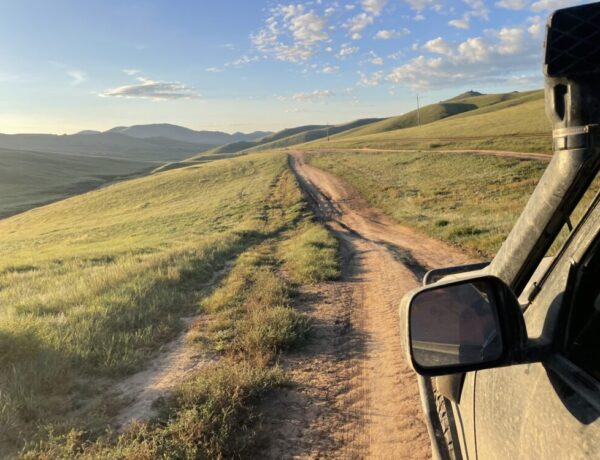
Can You Road Trip Mongolia Independently? (Tips for Self-Drivers & Car Rentals)
Routes. Off-road rules. Where to rent your car. Everything you need to know to…
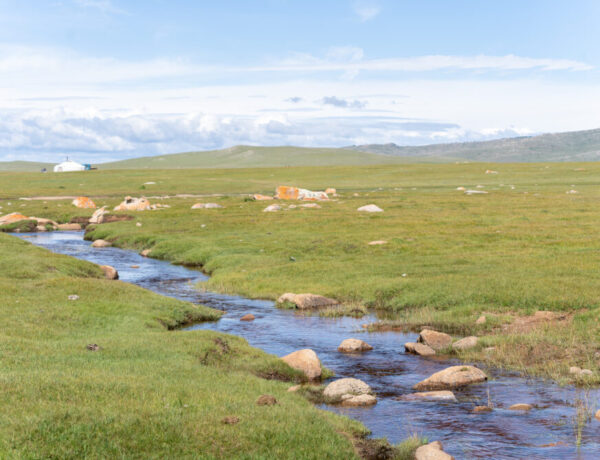
Mongolia Packing List & What to Bring on a Mongolia Road Trip
No frills on this packing list. These are the things you NEED to bring…
All Our Mongolia Travel Tips + Mongolia Travel Advice

What to Expect in Mongolia
Mongolia is a rugged adventure travel destination no matter which way you tackle it. Most of the roads are unpaved and pot-holed while the environment ping-pongs from scorching hot to freezing cold.
You’ll most likely spend your nights camping in the remote wilderness or sleeping on a very thin “mattress” inside a Ger. Amenities like hot showers are not commonly available. You should be prepared to do your business in the outdoors if need be.
Ger is a traditional Mongolian nomad house. It’s like a yert, but made from canvas or yak hide. It usually contains several beds, a table w/ sitting area, and a wood stove.
You’ll also probably spend a lot of time driving or sitting in a vehicle because sights in Mongolia are very spread out. We often spent 10 hours a day in the car. On rough roads. If that sounds miserable to you this might not be your destination.
Mongolia is also not a foodie haven. It’s mostly survival food like flavorless boiled lamb and packets of instant noodles.
Towns outside the capital of UB are rarely more than a handful of homes, a Ger camp or hotel, one mini-market for groceries, a restaurant or two, and a basketball hoop. Mongolians love basketball.
You can also expect stunning scenery, fuzzy yaks and Bactrian camels, rolling sand dunes, and reindeer herders.
Mongolia doesn’t get a ton of tourists but those that do come are mostly South Korean and Chinese. They almost always travel in large group tours and you’ll see lots of these in the Gobi.
Toilets in Mongolia
I feel this deserved its own little section. Be sure to bring your own toilet paper and hand sanitizer. These are some of the toilets you should expect in Mongolia.
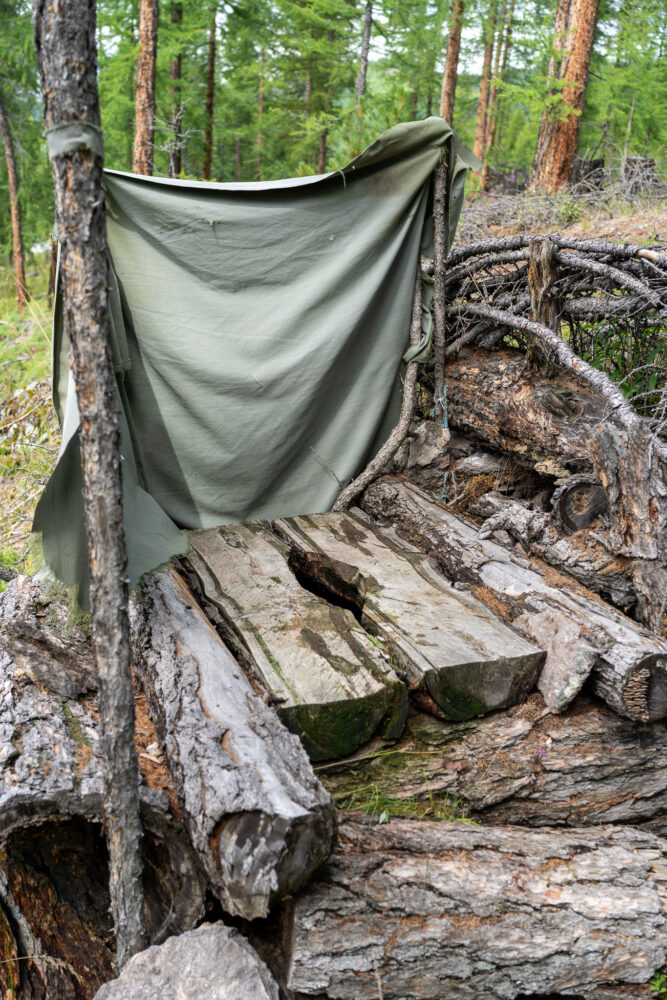
Sometimes they are more enclosed! But outside of cities and fancy ger camps, you should expect this kind of natural squat toilet.
Planning Your Trip
I’ve written some sample itineraries that I recommend for a 1-week , 2-week , or 3 to 4-week Mongolia trip.
Keep in mind you will ALWAYS need more time than you think you do in the country. Especially if you are traveling independently— leave yourself time for misadventure.
Best Time to Visit Mongolia
Full Travel Season: Late May-September
Peak: Late June-August
This is not a year-round destination for most people. Ulaanbaatar is actually the coldest capital in the world with an average temp of -1 degrees C. Up north, temperatures drop to -45 C in winter. If you plan to travel around the country plan your visit for the travel season. Peak season if you can.
Note: Many remote attractions, businesses, and museums close outside the tourist season. But the few open hotels are usually 1/2 or 1/4 of the price they sell for in July/August. Especially the more luxurious places.
Mongolia Travel Tips for Before You Go…
Things you should definitely pack (or purchase on arrival) for mongolia .
- Warm Layers. Lots of them. It gets cold at night even in the summer months.
- A good pillow. For camping and Gers.
- A hat and sunglasses for the desert.
- Lifestraw water bottle .
- Sunscreen & Bug Spray.
I wrote a huge post about what to pack in Mongolia if you plan on driving the country yourself.
If you’ve forgotten anything essential UB can probably help. There are camping and outdoor stores literally all over the city.
3 Apps to Download for Mongolia

1. Google Translate
English is not widely spoken and menus will rarely be in English. The offline version of this app will help you communicate in a pinch.
2. Maps.Me
For getting around the country without the internet.
3. UBCab
This is Ulaanbaatar’s version of Uber and without a doubt the best way to get around the city.
Mongolia Maps & Guidebooks
For most travel, I think blogs have replaced guidebooks. But Mongolia is a very complicated and difficult destination to travel independently. It’s good to have a hard copy map or guidebook on hand. I thumbed through the LP Mongolia guide and found it rather helpful.
Lonely Planet Guidebook
Wifi & Internet in Mongolia
Wifi is a no-go pretty much anywhere outside of Ulaanbaatar. Even then it’s not the best. Many of the fancier Gers we stayed at had power and hot water but no wifi. This is why most travelers get a SIM card in the country. Or use this time to really disconnect. We almost NEVER get a SIM while we travel but we did here.
Mongolia has a surprisingly good network of coverage…we had service in the Gobi desert!
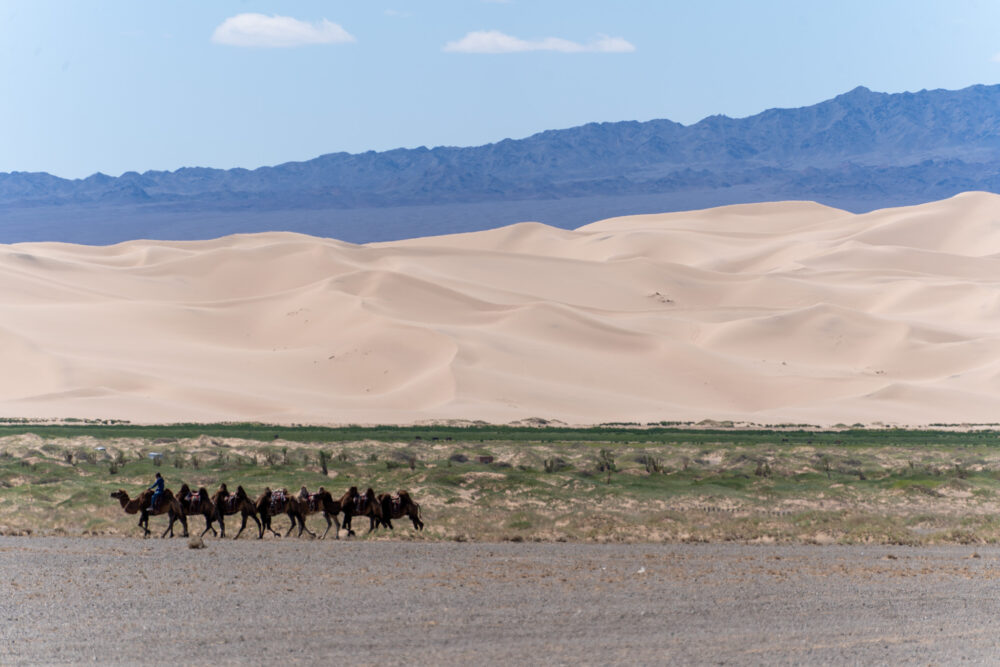
Getting a Mongolian SIM Card
If you plan on traveling in Mongolia independently at all you’ll benefit from a SIM card.
The most popular brands with good coverage are Unitell & Mobiphone.
Note: If you’re road tripping it’s best to have one of each among your group. Maximize your coverage.
Unlike most countries where you get your SIM at the airport— this isn’t the case for Mongolia. You can get your SIM easily at State Department Store right in the city center instead. Or just head to any of your desired provider’s offices throughout the city.
Outside of UB, you’ll have to get a “local SIM”. This means you need a kind local with an ID card to purchase the plan for you. This is possible but more difficult and why you should get this sorted in UB right away.
Cash or Card: Money in Mongolia
Mongolia is a mostly cash economy. You’ll want a lot of it before you head out of Ulaanbaatar. ATMs in rural areas are not usable with a foreign card.
- Mastercard is not accepted everywhere. Have a backup.
- Gas stations *typically* take cards but don’t count on them.
- Basically, everything in Ulaanbaatar accepts card but don’t expect that anywhere else.
- You might have to try several ATMs in a city to find one with cash in it.
Note: Most ATMs only allow you to take out 800,000 tugriks at one time.
Getting Around Mongolia
Travelers have essentially 4 options when visiting the country.

1. Take a Tour.
There is no shortage of tour companies operating in Mongolia. Every single hostel/hotel in Mongolia offers them. There are also hundreds online ready to book long before your trip. You can expect to pay anywhere from $1,500-$3,000 per person for a 7-day tour. This is the most popular and expensive option.
Tips for Choosing a Tour
- It will always be cheaper to book your tour in Ulaanbaatar from your hostel or other budget accommodation than online.
- Tours in Mongolia are super structured and all visit basically the same places.
- If you plan to visit the nomadic reindeer herders DO NOT book with a guide from Ulaanbaatar. There are lots of reasons for this that I outline in my full post about our visit with the Tsataan Tribe.

Tour Companies I Recommend
Get Your Guide Tours
This is my favorite search engine to find tours led by local guides.
Zaya (Gateway to the Reindeer Herders)
Zaya is the only reindeer herder who speaks fluent English. She can organize your entire visit to the Tsaaganuur area. You can contact her on WhatsApp or via email to organize your visit. She doesn’t always have service because she lives in the Taiga but give her time and she will get back to you. This is important to arrange in advance if you can.
Whatsapp: +976 9977 0480
Email: [email protected]
Note: It’s important you go through her because this is the only way your money actually makes it to the tribe you’re visiting. Read more about it here.
2. Overland or Drive Yourself
I may be biased but I’ll just come out and say it, this is the best way to experience the country. Mongolia’s sights are impressive but it’s the camping and vast nature in between them that make the country unique. This gives you the most control over your trip. You can expect to pay around $200 per day for a 4×4 vehicle with camping gear and rescue supplies through Drive Mongolia . Be sure to secure your car as far in advance as you can (6 months is recommended).
Note: This is NOT the route for everyone. Before you commit to driving the country independently please read my blog post “Can You Drive Mongolia on Your Own?”
Where to Rent Your Car
While several major car rental companies operate in Mongolia, we chose to use Drive Mongolia for the customer service, the included gear, and the local knowledge. It was also cheaper. So really, there’s no better option.
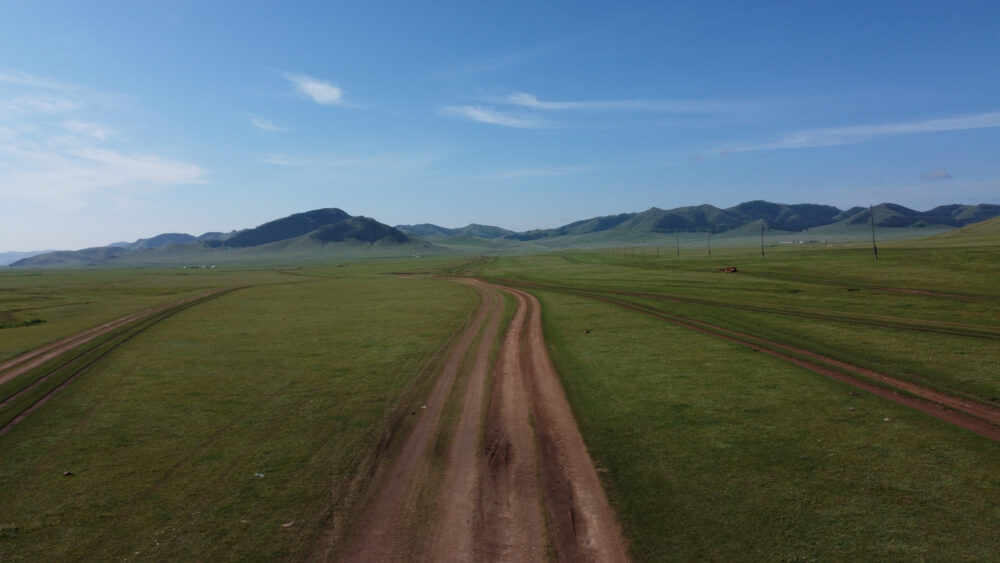
Mongolian Road Conditions
This is something worth considering before you opt to rent your own car. Our group of four managed to navigate across the country on the rough (non-existent) roads but you should prepare for the worst. This is only for people looking to have a “roughing it” style adventure. Read all my blog posts on road-tripping the country to get a better idea of what it’s actually like out there.
3. Rely on Public Transportation
Despite the lack of paved (or sometimes even designated roads), Mongolia has public buses. Or more likely public Russian Vans. Utilizing these will get you to all major towns in Mongolia (even Tsagaannuur!). It won’t however, get you to all the sights and it will not be comfortable.
This is the super budget-friendly option for travelers to Mongolia. Expect a 12-hour ride to cost about $20.
Mongolia Travel Tips for Super Budget Travelers
- When you reach a major city like UB, Murun, or Tsagaannuur you can reach out to local guides via your homestay. This way you can see all the sights in the area.
- Stick to cooking your own meals and small local restaurants for food. Plates at these kinds of places are usually $2.50.
4. Hire a Driver
If you don’t want to drive yourself in Mongolia THIS is the next best option. Rather than a structured group tour you can simply hire a driver to take you everywhere you want to go. Funnily enough, this is typically cheaper than hiring your own vehicle (due to Mongolian insurance purposes). Expect about $120 per day for driver and car.
Where to Hire a Driver?
- Drive Mongolia . He can also hook you up with a driver, not just a car.
- Facebook Group. This is a great option for solo travelers looking for Mongolia Travel Tips or couples because you can link up with fellow travelers and split the costs.
Note: Mongolians are insane drivers. Hiring a driver does not mean your car won’t break down, crash, or be extraordinarily bumpy— it just means you’ll have a local there to help you solve the problem.
Accommodation in Mongolia
When in Mongolia you’ll likely be utilizing 3 types of accommodation.
1. Tent Camping (if independently traveling)
This is totally free. In Mongolia, you can essentially set up your tent anywhere in nature and wild camp 100% for free. You should do this at least once on your trip.
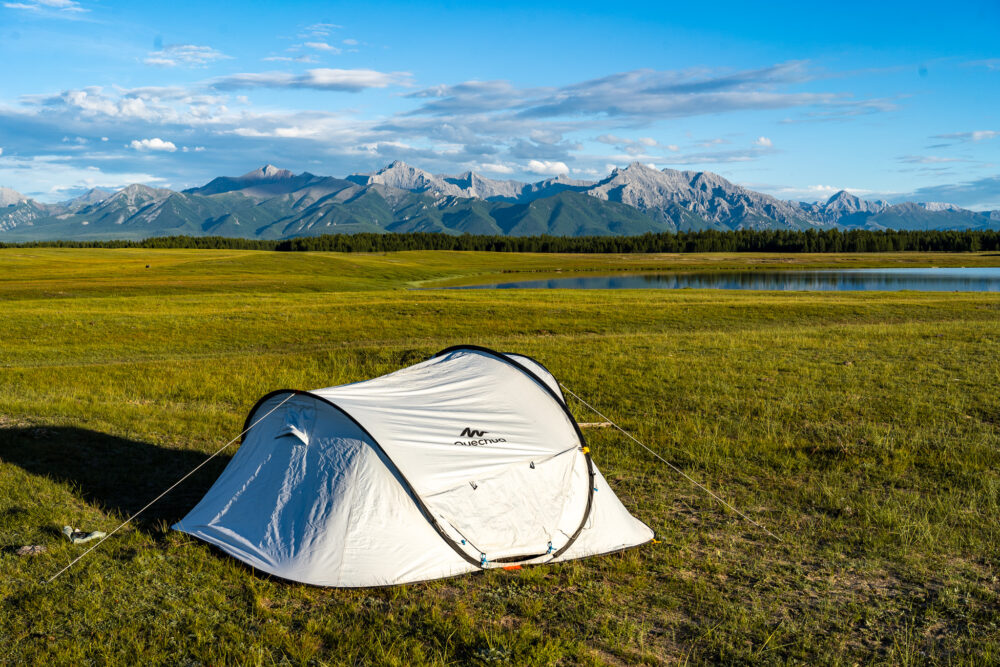
The Central and Southern areas of the country centered around the Gobi are difficult to camp in because of the lack of grass and rocky soil. Keep this in mind when planning to camp.
Note: I scoured the Internet for epic campsites recommended by other overlanders but truthfully, it’s all beautiful. Don’t bother looking online and just judge the landscape for yourself.
2. Gers
This is one of the big attractions in Mongolia. Sleeping in a local Ger camp. These yerts are scattered all over the country and are still the main housing for farmers and nomads today.
Camps range from small family-run single Ger to sprawling tourist camps with 30+ Gers and extra facilities like showers and toilet blocks. They are priced per person and obviously the basic ones run by families are cheaper. Expect to pay from $8 per person to $20 per person.
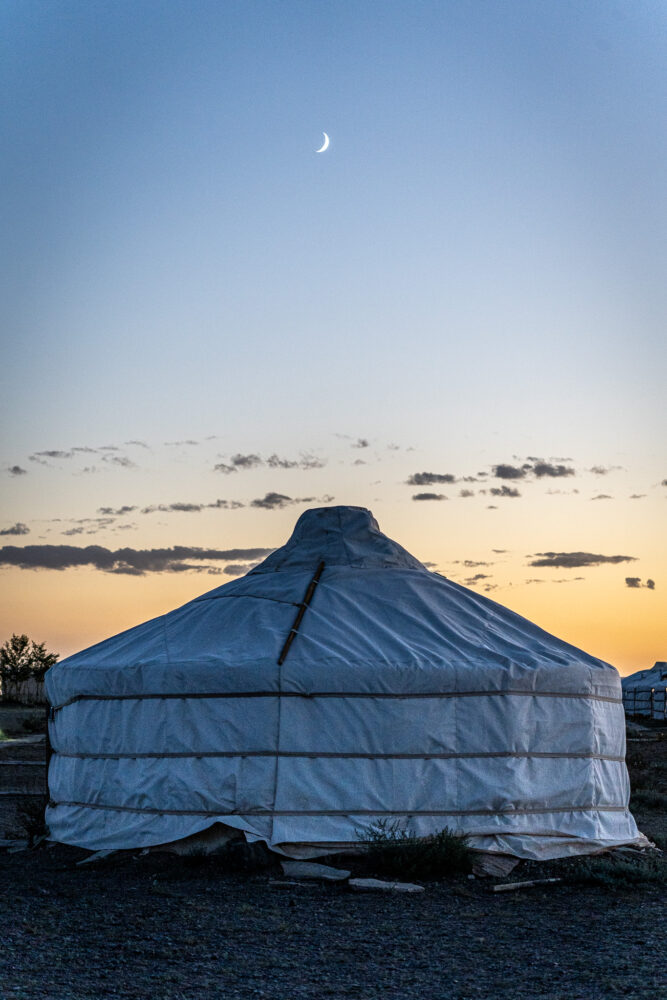
Amenities varied wildly with the Gobi desert camps being most expensive. Occasionally, a basic breakfast would be included in this price.
Eating at the Gers
I read a lot about Ger camps offering meals and having restaurants— and while some did, it was not super common in my experience. About 50/50. This is probably because we turned up unannounced and didn’t speak Mongolian. Plan on cooking for yourself UNLESS you are on a tour in which case the Gers always prepared them food.
Some areas had super luxurious gers that cost up to $200 per night. Obviously, these are not the real nomad Gers. We tried to stick to small ger camps and were always very happy with the experience. Here are some of our favorites.
Do you need a reservation?
Typically, no. The one exception was in Terelj where many owners actually live in UB so a heads-up would be nice. Just give them a call at the phone number listed on Google.
We did run into a few instances where camps were full because of arriving tours (high season) but there was always another one just down the road.
You will always find Ger camps near any attraction or any place you might visit in Mongolia.
3. Guesthouse/Hostel/Hotel
You will most likely only use these in major cities like UB.
If you’re traveling in peak season (you should) you will want to book your accommodation in Ulaanbaatar as far in advance as you can. The cheap city center hostels and hotels book quickly. I recommend a week in advance if possible.
Ulaanbaatar Accommodation Recs
The budget-friendly option is in the best neighborhood BUT with a full buffet, excellent wifi, and an incredible shower that can hose off all the dirt after all your cross-country exploring the Ibis is worth an end-of-trip splurge for some.
Budget: Mongolia Vision Tours
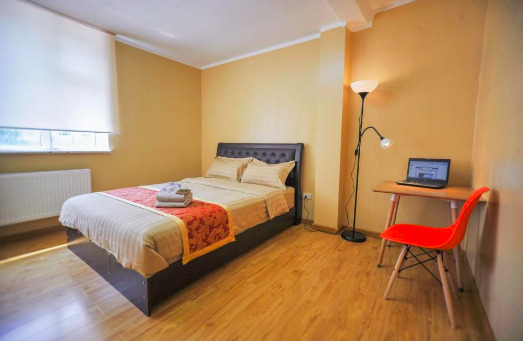
Luxury: Ibis Polaris

Food in Mongolia
Boiled lamb. It’s what’s for dinner.
And lunch and sometimes even breakfast. This is the staple of Mongolian cuisine. You’ll get so tired of boiled lamb you’ll never want to even look at it again.

The most popular dishes are fried meat pockets called Huushuur, Tsuivan; a fried noodle dish, and Lavsha; a wheat noodle soup. There are also delicious dumplings.
Food in UB was alright, but overall unimpressive. This is not a country to come to for the food alone. Instead, all my foodies should go to Vietnam (specifically, Ho Chi Minh City ).
Vegans or Vegetarians in Mongolia?
Expect to cook your own meals. Often small local restaurants had no veg options.
Mongolia (especially the rural area) is still sustenance farming and eating whatever is available to survive. Vegetarian and veganism is not prominent here.
As it’s seen as incredibly rude to refuse a cup of tea (which is made with local milk) I would strongly reevaluate why you want to visit this country if you’re strictly vegan.
For a full list of Mongolian etiquette & superstitions check out this blog post. *coming soon*
General Mongolia Travel Tips
Here are the odds and ends to wrap up what you need to know for Mongolia travel.

- Medical care is pretty good in the cities and very good in UB. But outside major cities, you’ll likely be days away from any hospital.
- Days are long in Mongolia’s peak season! The sun doesn’t set until 8 or 9 PM in August. But obviously, the opposite can be said about traveling in the off-season.
I’m thoroughly impressed if you’re still with me. Mongolia is an incredible destination and one that requires quite a bit of pre-planning but it is so worth it. I hope this guide helps you feel more prepared to land in the country and excited to explore all the natural wonders it has to offer!
Save Mongolia Travel Tips for Later!

Further Reading...

EPIC Self-Drive Mongolia Itinerary: Gobi Desert, Altai Mountains, & Reindeer Tribes

Khongoryn Els: The Mongolian Gobi’s Biggest Sand Dune

1-Week Mongolia Itinerary: The Vast Gobi Desert
No comments, leave a reply cancel reply.
Save my name, email, and website in this browser for the next time I comment.
Notify me of new posts by email.
Sign up to our newsletter!
This site uses Akismet to reduce spam. Learn how your comment data is processed .
Mongolia's Flaming Cliffs: What You Need to Know
How to visit the tsaatan: mongolia's nomadic reindeer tribe, beyond_the_bucketlist.


Borders Of Adventure
Leading Culture and Adventure Travel Blog by Becki Enright. Looking at the world with a different angle to change perceptions of misunderstood places, for the best in travel.
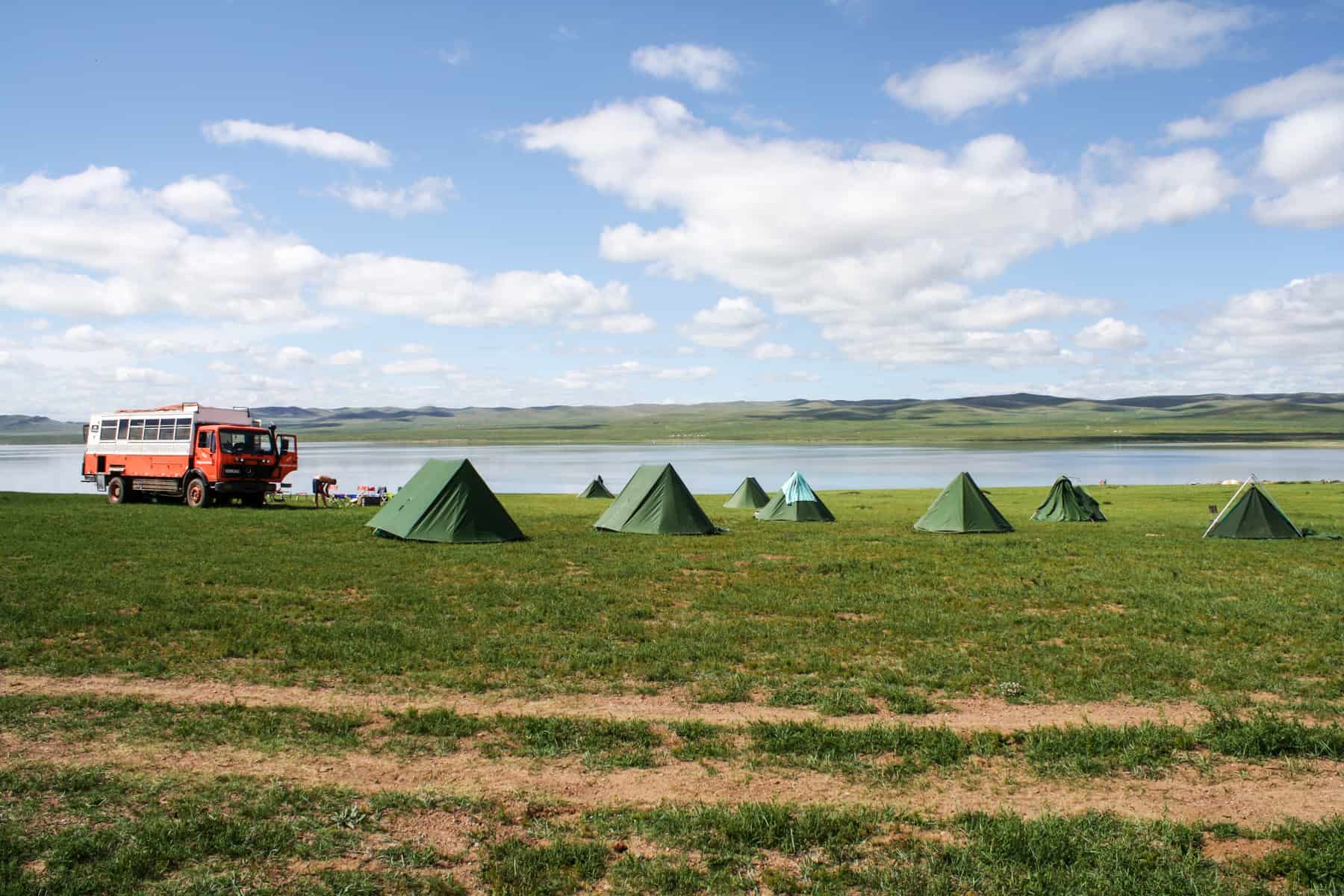
Adventure Travel , Mongolia
This is How to Travel to Mongolia – Overlanding the Least Densely Populated Country in the World
Disclaimer: This post contains affiliate links to handpicked partners, including tours, gear and booking sites. If you click through or buy something via one of them, I may receive a small commission. This is at no extra cost to you and allows this site to keep running.
Want to get to somewhere lesser-known and travel differently? This Mongolia travel guide shows how to go overlanding in the world’s least densely populated country.
Travel to Mongolia means tackling a land of extremes. Both in the landscape, from its vast desert lands and towering dunes to its lush green mountainous national parks, and in its lack of infrastructure, where you become just as frustrated as you are in awe by the country’s areas of extreme isolation.
Visiting Mongolia is to find a canvas of rugged beauty capped by a sky so blue that pollution isn’t even a word that exists here. Passing only wild horses, herds of cattle, an isolated ger in the distance, and the odd truck also on its way to the city, life here is at its purest and most beautiful.
Outside of its unkempt capital, Ulaanbaatar, Mongolia exists with limited facilities, but that’s what makes it attractive. On the road, it can take hours of driving before you pass a small ger community, a Mongolian on horseback or another vehicle, and in between blessed with the most stunning views of a country so desolate that you know you’ve reached the real heart of it.
Overlanding through Mongolia, rather than flying or taking the train, is one of the best decisions I have ever made. This guide will show you how to travel Mongolia from China by land, in a vast loop that takes in some of the country’s most treasured hotspots and wilderness hideaways.
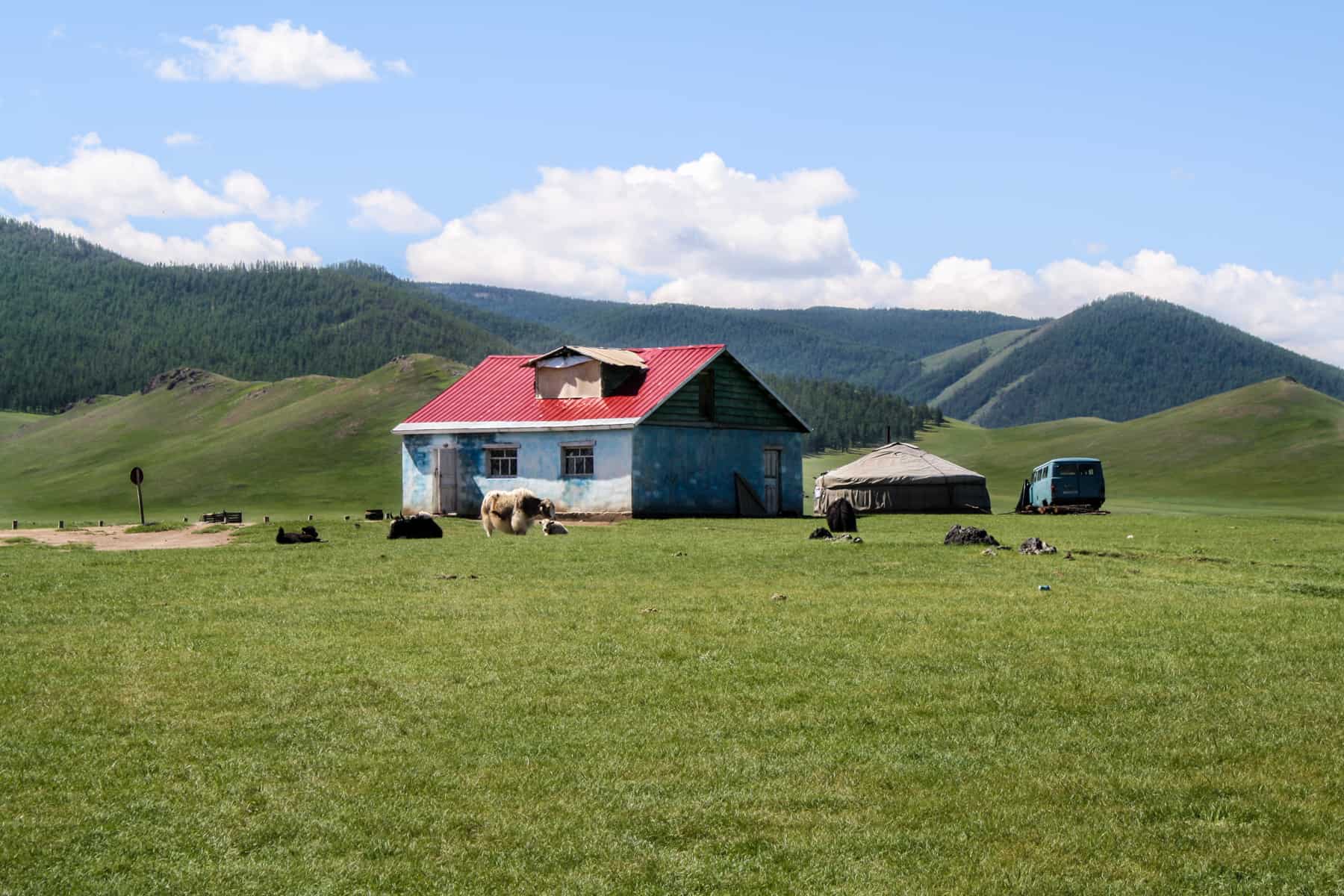
Visit the Least Densely Populated Country in the World
Off the beaten track adventure, when is the best time to go to mongolia, it pays to know a local, classic nomadic mongolia, local living mongolia, discover mongolia – national geographic journeys, experience the naadam festival in mongolia, is mongolia expensive to travel, mongolia visa on arrival, visa-free access to mongolia, day 1: visiting ulaanbaatar, day 2: getting from ulaanbaatar to the gobi desert, day 3: visit the baga gazryn chuluu rock formations, day 4: sleep at a ger camp in the gobi desert, day 5: dalanzagad to gobi discovery ger camp, day 6: hiking in yolin am – mongolia’s ice valley, day 7: a trip to the gobi desert khongoryn els sand dunes, day 8: visiting the bayanzag flaming cliffs, day 9: seeing ongii monastery and driving to arvaikhee, day 10: stuck in mongolia, day 11: hiking in orkhon valley, day 12: seeing the orkhon valley waterfalls, day 13: visiting a mongolian family in a ger, day 14: erdene zuu monastery in kharkhorin, day 15: camping at ugii lake, day 16: visiting hustain national park and seeing przewalski’s horses, day 17: driving to ulaanbaatar and visiting terelj national park, day 18: hiking terelj national park and seeing turtle rock, day 19: a trip to the ghengis khan statue on the tuul river, day 20: back to ulaanbaatar, how to overland in mongolia, building a road in mongolia, getting stuck in the mud, the unexpected river crossing, what to pack for mongolia, planning mongolia travel pin it, why travel to mongolia .
Mongolia travel changes you and makes you appreciate the beautiful patches on the earth’s surface not ruined by extreme modernisation, pollution and overpopulation.
My time in Mongolia meant experiencing everything from bush camping to ger camps, being at one with nature (and not care who sees you squatting in the process) and realising that animals like to roam and Mongolians love to chat – right outside your Ger from 5 am.
I saw a night sky so clear that I didn’t think you could ever see so many stars. I traversed a land so serene in isolation and culture so welcoming that I hope it never, ever becomes ruined by tourist traps or the tight grips of mass capitalism (currently contained to Ulaanbaatar).
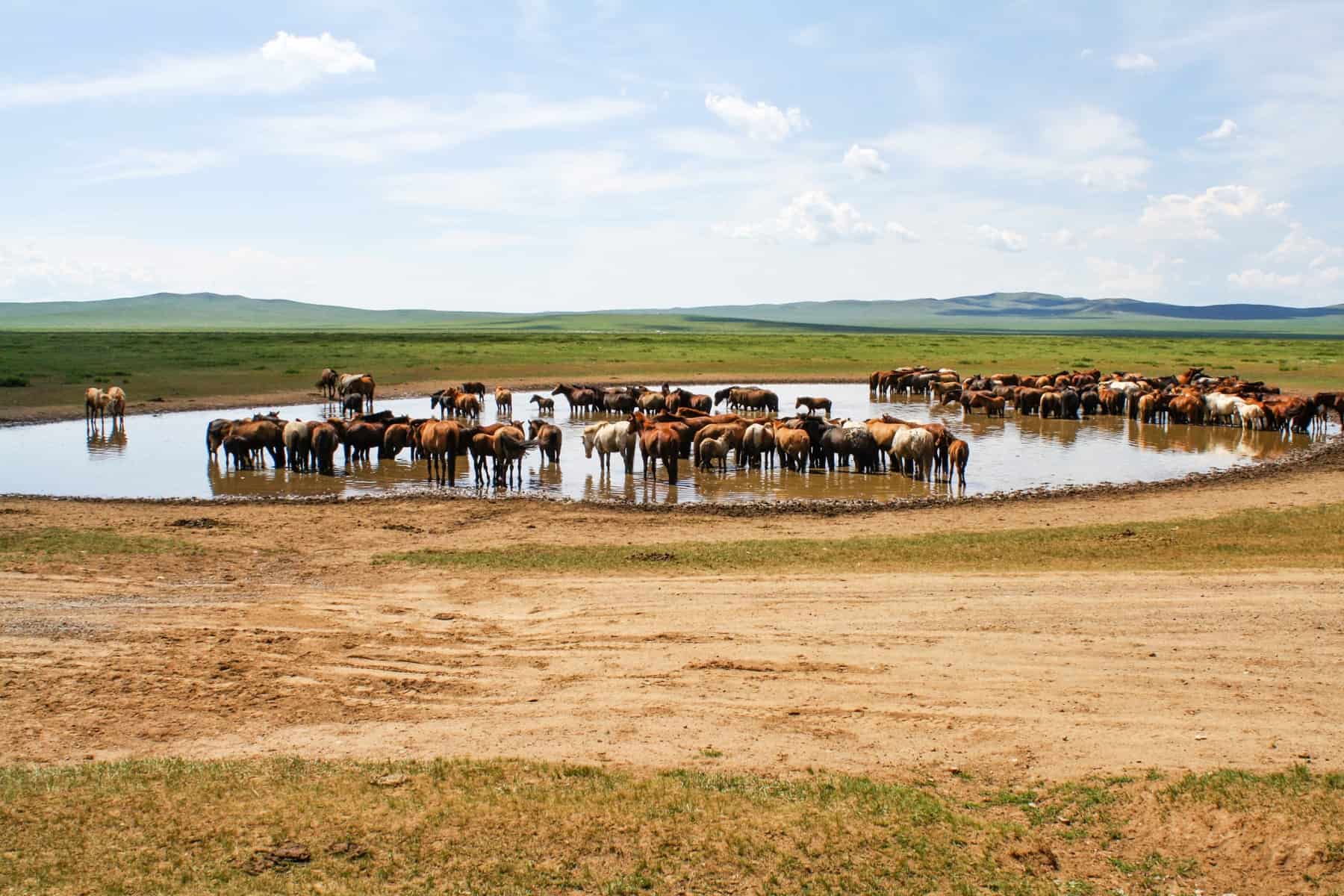
Wild horses in the vast Mongolian landscape
If you want to get off the beaten track, not be on any set grid and take each day as it comes, you will love Mongolia. But this also comes with its frustrations where you need droves of patience and a good chunk of travel time to spare.
There are hardly any roads. Roads are dirt tracks or pre-made grooves in the land pointing the way, and paved highroads are very few and far between.
Mongolia is prone to unpredictable weather conditions. That means random onslaughts of rain and the likelihood that you are likely to get bogged at some point. There were countless numbers of times where we had to dig out and push the truck or find locals to come to the rescue – tractors are a saving grace here.
It’s a vast country that you could get lost in for weeks on end, and when you accept the setbacks, you start to see them as part of the big adventure – travel at its most raw. Back to basics, getting dirty and struggling with the lack of modern amenities we too often take for granted is part of what travelling in Mongolia is all about.
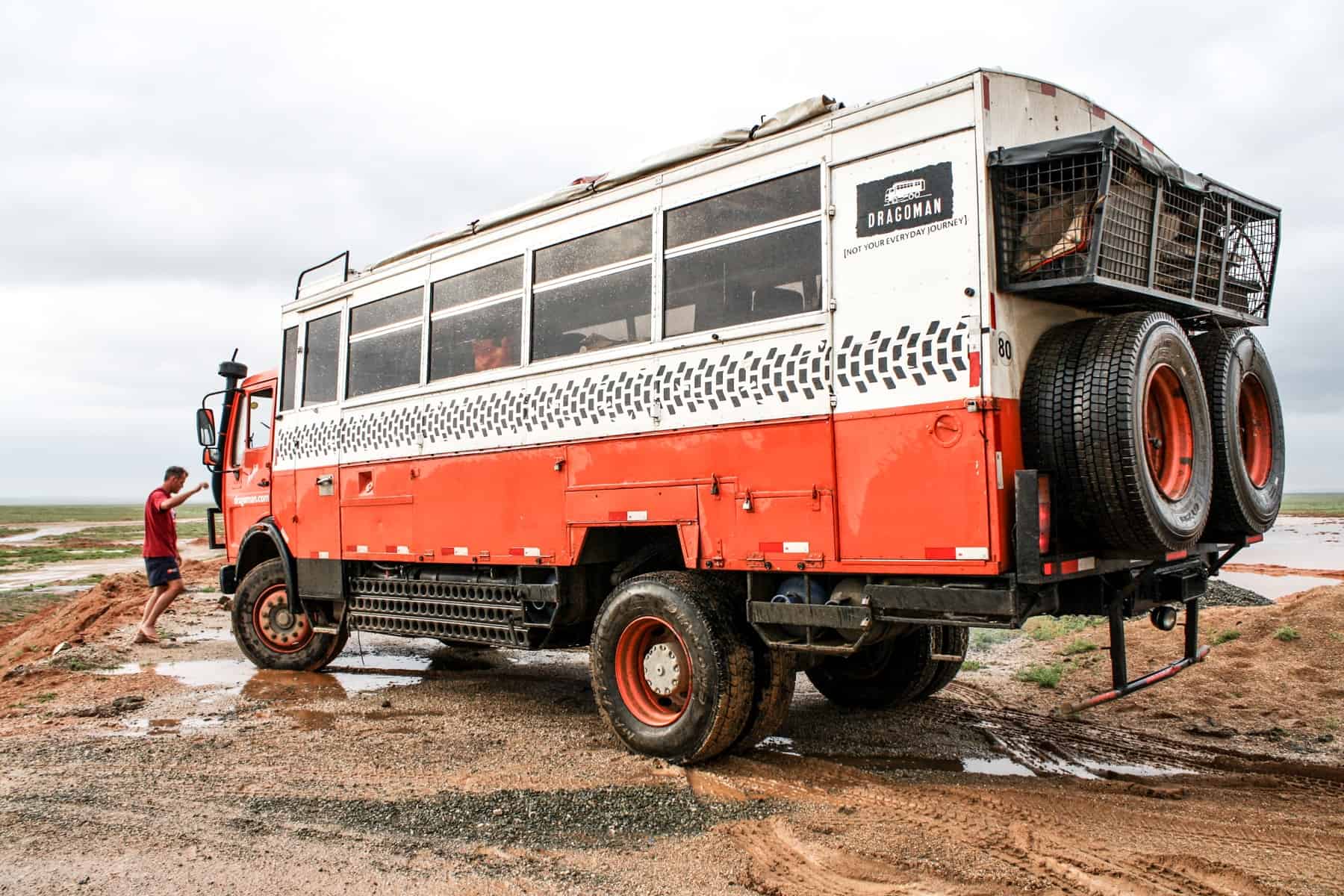
The Overlanding vehicle used to travel to Mongolia and around.
The summer season between May to September is said to be the best time to go to Mongolia. July and August are the hottest months, with temperatures in the Gobi Desert reaching 40°C. Rainfall is at its highest between June and September, balancing out the heat while keeping the forest and valley lands, in particular, lush and fertile. I travelled to Mongolia in July and experienced a lot of rainfall alongside high temperatures.
Mongolia’s winter season is from November to February. While some people like to experience the landscape in this snowy season, temperatures can drop to below minus 20°C – a harsh and challenging environment to travel in. You’ll find that not many companies run tours during this time.
Is it Safe to Travel to Mongolia Safe?
While petty crime and pickpocketing are common in the capital, Ulaanbataar, Mongolia is a relatively safe place to travel, and I never encountered any significant problems. It pays to be more streetwise and alert in the city, as you would in any other. As the landing and departure point for tourists, opportunism poses a higher risk.
Despite the lack of infrastructure and the relative isolation when travelling through the country, the only minor issue we encountered was related to the high levels of alcoholism in the country. We saw drunk drivers on our long drives and an occasion or two when inebriated locals came to our makeshift camp out of curiosity. Even then, it never felt threatening, and we were always within the safety of our group.
On the whole, we rarely saw other people, and when we did, we were met with kindness, invited into homes and welcomed into common spaces such as markets and small-town social spaces.
I also travelled alongside a Mongolian guide – someone who could speak the language when we got stuck, who could walk to a nearby home and explain the need for assistance and who understood the land’s general navigation. Therefore, in Mongolia, it pays to get yourself a local guide, join a small group tour, formulate a small group of your own in Ulaanbataar or be equipped with general wilderness survival skills if going out there entirely on your own.
Mongolia Tours
When I was planning my trip to Mongolia, Dragoman was the only company offering Mongolia tours that lasted from ten days to two weeks. The 21-day overland journey was the first trip itinerary of its kind they were running here, which included Inner Mongolia. Today the 21-day trip, called Nomads & Wilds of Mongolia, is on a loop from Ulaanbaatar and includes Khovsgol Lake in the north. Although Dragoman suspended operations during the pandemic, they are back in 2024.
Adventure travel experts G Adventures, offer Mongolia tours that all start and end in Ulaanbaatar.
A 14-day trip, including all the highlights at an affordable price (from €1999), this Mongolia trip includes a Gobi Desert and Mongolian Grasslands stay, alongside packing in the major historical must-sees and cultural experiences that make Mongolia an unforgettable adventure.
This 10-day local living trip includes staying with three different families in Gers to experience life as a nomad. Mix historical monuments with cultural moments, exploring pastures, forests, lakes and national parks by foot and horseback while helping your host families prepare traditional dinners and learn the skills of their nomadic trades.
G Adventures, in partnership with National Geographic Journeys, offers a two-week comfort adventure through Mongolia . You get to visit Khustai National Park, Karakorum (the ancient capital of Mongolia), Tsenkher Hot Springs, the Orkhon Valley and more. You will also see a nomadic camel-herding family and dive deeper into Mongolia’s culture, as well as support the local community where tourists pass through.
Want to experience the Naadam Festival’s horseracing, archery and wrestling tournaments? This mini adventure takes you to it and throws you right into the buzz of traditional Mongolian festivities.
Mongolia is expensive to travel in and around due to the very nature that it is not overly touristic. Due to the lack of infrastructure, a tour with a local guide and appropriate transport can often be necessary to cover more ground.
- You will need to budget between $2400-$3600 for an extensive trip around the country.
- An average meal (if not making your own on the trip) costs around $5.
- Entrance fees to historic sites and museums average around $2 per ticket.
For those on a budget, day trips can be taken from Ulaanbaatar, or you can try and plan some shorter 3-5 day trips from the city. However, this can often depend on having a minimum amount of people signed up for the trip to run and isn’t always guaranteed.
Do you need a Visa for Mongolia?
If you are not a national of one of the visa-exempt countries listed below, you will need a Mongolia visa.
- A single-entry visa (valid for three months from the date of issue) for up to 30 days – £40/$50
- A double-entry visa (valid for three months from the date of issue) for up to 30 days – £55/$65
It is cheaper to apply directly at a Mongolian Embassy (either at home before you leave or in the country you are travelling in prior). You will need a valid passport, passport photos and supporting trip documents alongside a completed application.
Allow one working week for processing. Some Embassies provide a one-day service for an extra charge.
A 30-day tourist visa on arrival is available for tourists coming from European and other countries where there are no Mongolian Embassies present, obtained at Ulanbataar Airport or the Mongolian land borders. I got my visa in London months before my trip.
The following countries are granted visa-free entry to Mongolia.
Visa-free entry for 90 days: Argentina, Belarus, Brazil, Chile, Kazakhstan, Kyrgyzstan, Serbia, United States (US). Those from Ukraine require a form of invitation.
Visa-free entry for 30 days: Canada, Cuba, Germany, Israel, Japan, Laos, Malaysia, Russia, Singapore, Turkey, Thailand, Uruguay.
Visa-free entry for 21 days: Philippines.
Visa-free entry for 14 days: Hong Kong.
You can find further information on the Embassy of Mongolia website .
Where to Go in Mongolia – Itinerary
I spent 20 days Overlanding in and across the central and western Mongolian plains. We travelled in a big clockwise circle from Ulaanbaatar, through the scorching Gobi Desert to beautiful lakes, forests, canyons and waterfalls, all the while passing vast herds of wild horses, camels, goats, yaks and cows.
Overlanding in Mongolia for Three Weeks:
Kilometres travelled: 2492
Number of significant times the truck got stuck: 2
Number of minor times the truck got stuck: 12
Number of incredible driving days: 15
We spent a full day in Ulaanbaatar exploring outside of the stark Soviet communist-style architecture and moving past the city’s general dodgy feeling. There’s plenty to see and do here, including a walk through the modern Sukhbaatar (Parliament) Square, the Gandan Monastery, the National History Museum and the shopping paradise of the Black Market . In the evening, check out the singing, dancing and contortion talent at the Cultural Show before hitting a few bars and pubs. There’s so many you won’t know where to start.
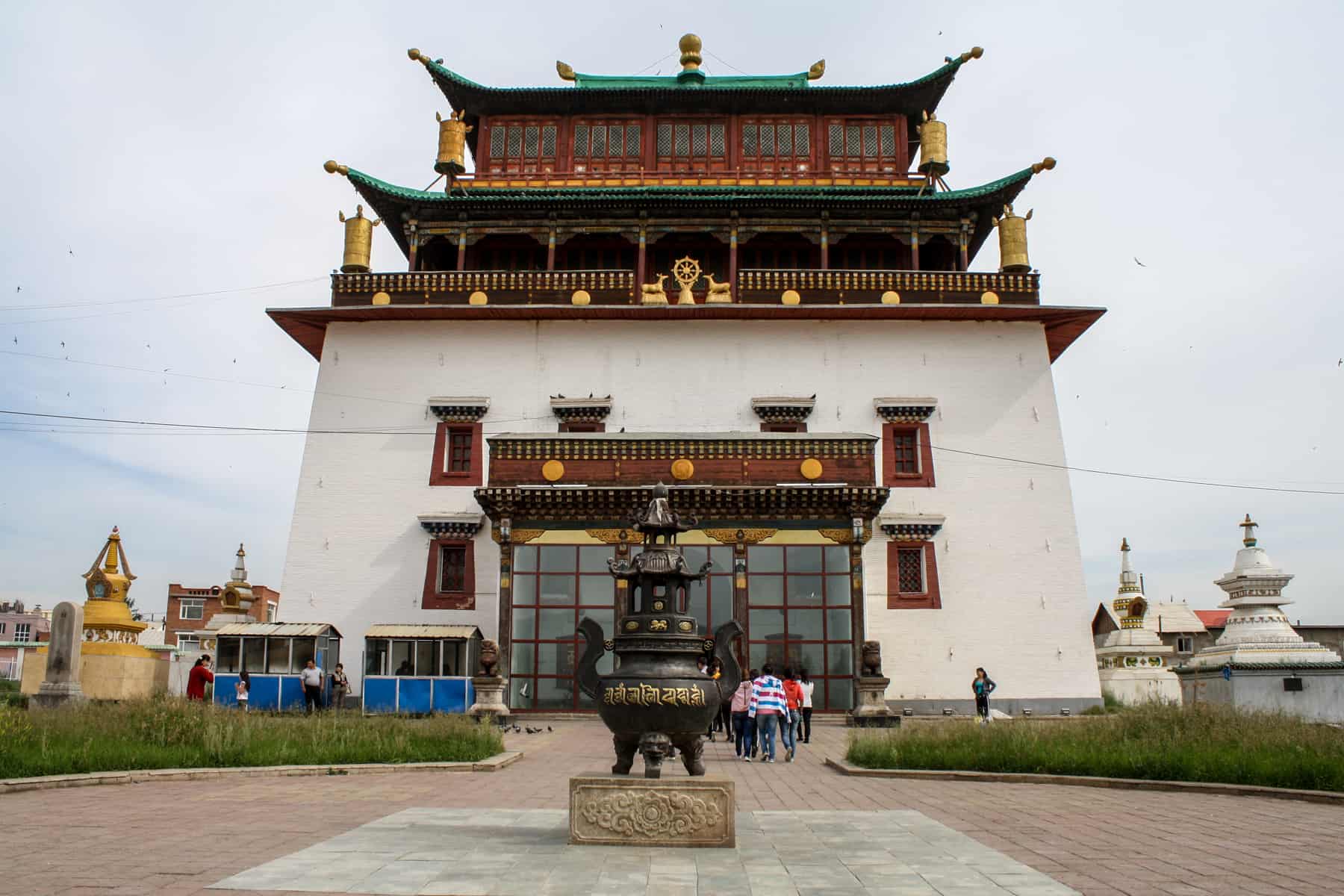
Gandan Monastery in Ulaanbaatar, Mongolia
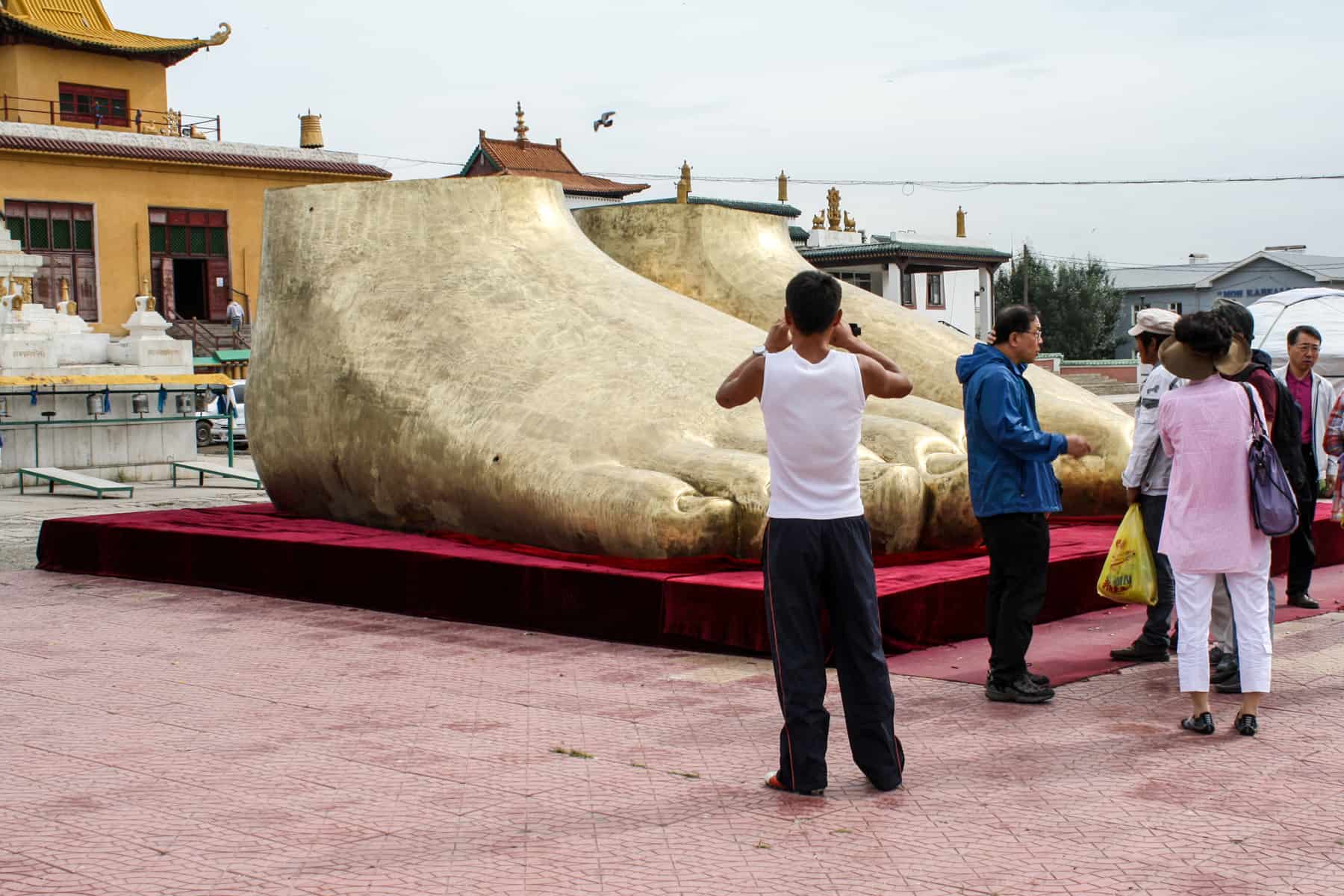
The golden feet outside the Gandan Monastery Ulaanbaatar
We set off in the truck from Ulaanbaatar to drive to the Baga Gazryn Chuluu rock formations in the Gobi desert. Due to heavy traffic when getting out of the city and general road conditions we got delayed and so decided to set up bush camp for the evening. Be prepared for delays in Mongolia but delight in being the only people in the area. All the space is yours.
We got to Baga Gazryn Chuluu – rock formations worshipped by locals who make pilgrimages here partly because legend states that Ghengis Khan camped here – before journeying to the Gobi Desert.
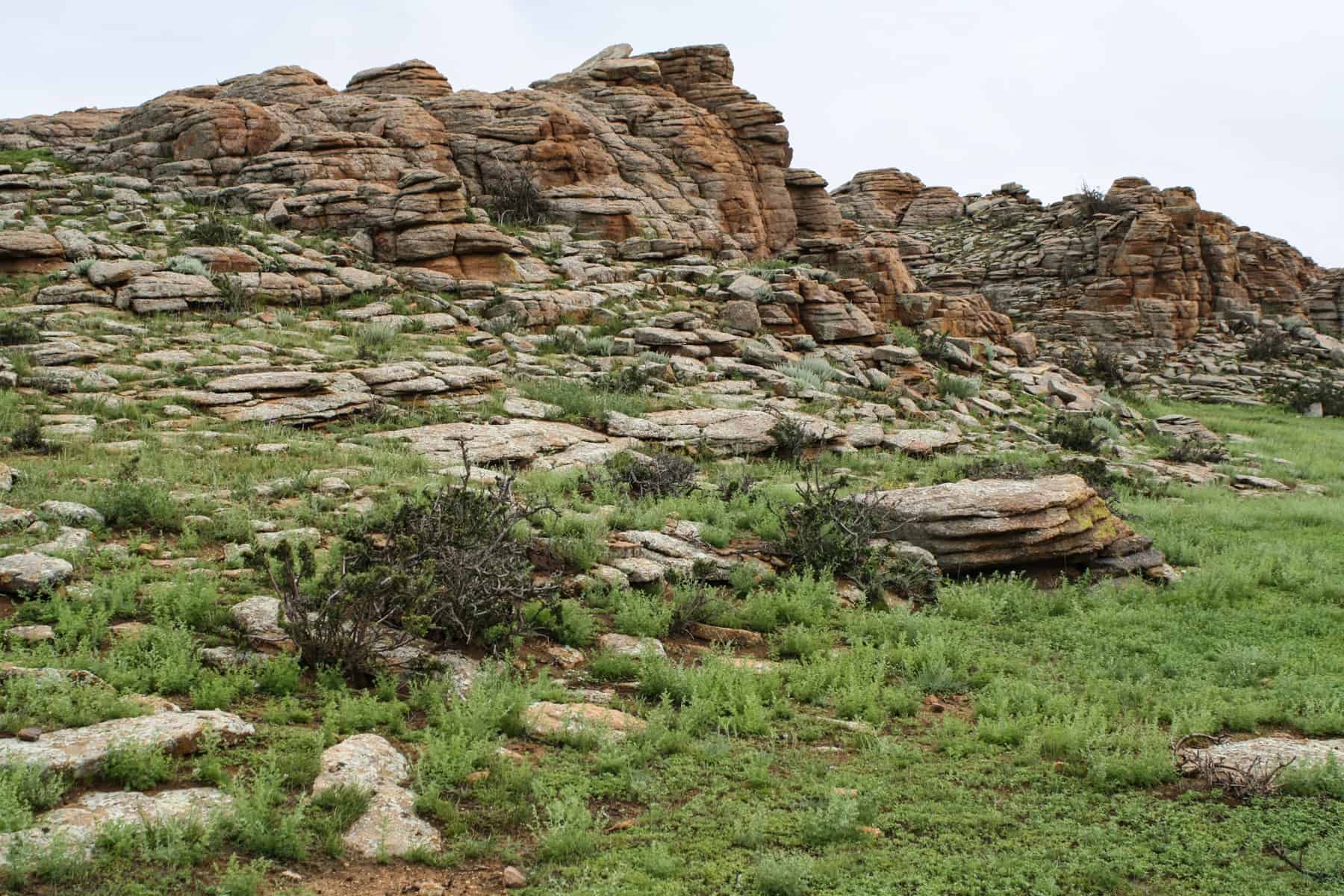
Layers of Baga Gazryn Chuluu rock formations in Mongolia
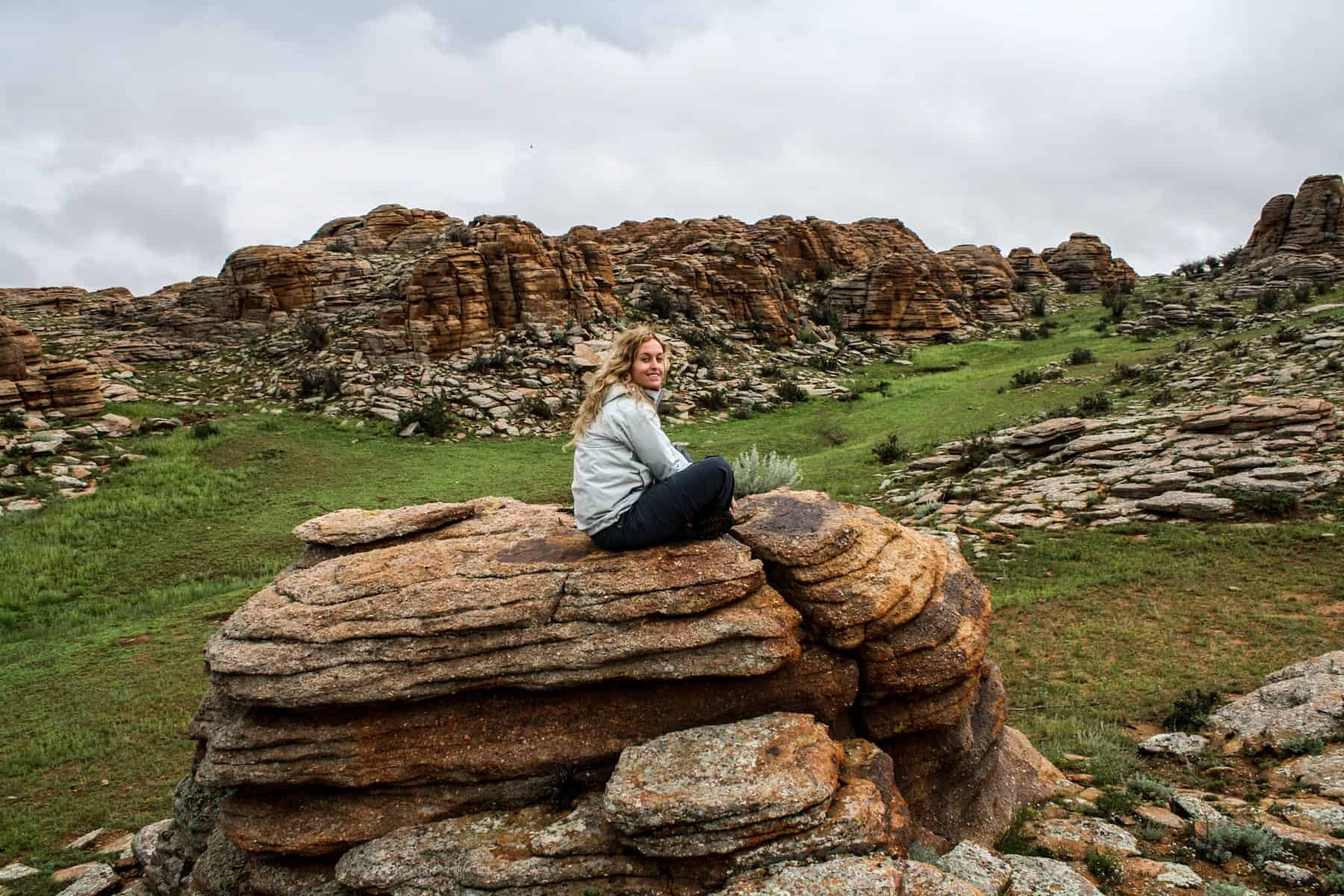
A hike to Baga Gazryn Chuluu as part of a Mongolia travel itinerary
On the way, we got to experience the famous Nadaam Festival when we passed through the local town of Mandal Govi . It was full of wrestling, horse racing, archery and fairground style fun. Nadaam means ‘games’, and the buzz was all around us as the only Westerners there. It was great to be a part of a traditional Mongolian community celebration, even if the afternoon was marred by a bogging, which resulted in the truck not being released from the soft mud until midnight.
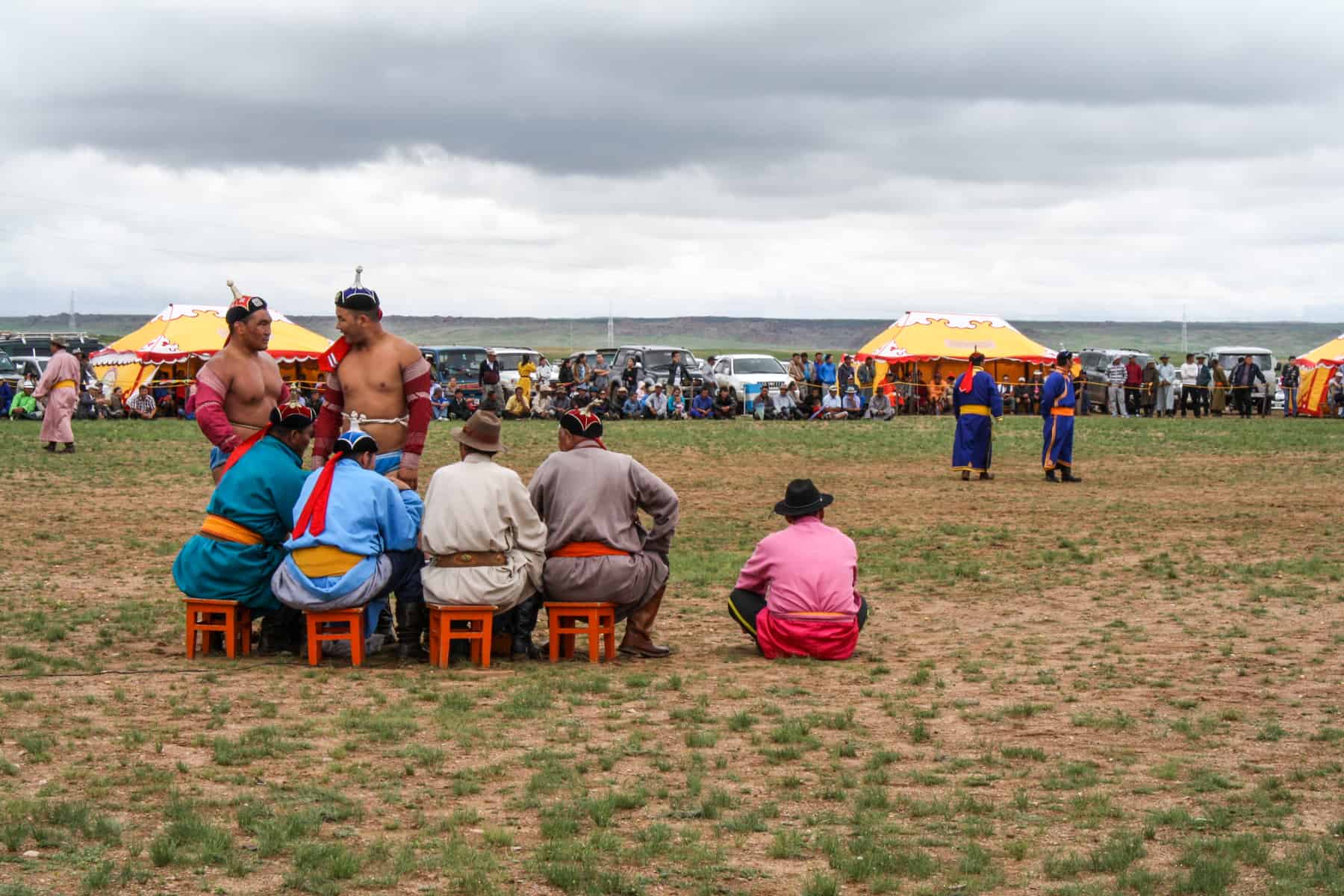
Watching the wrestling at the Nadaam Festival in Mongolia
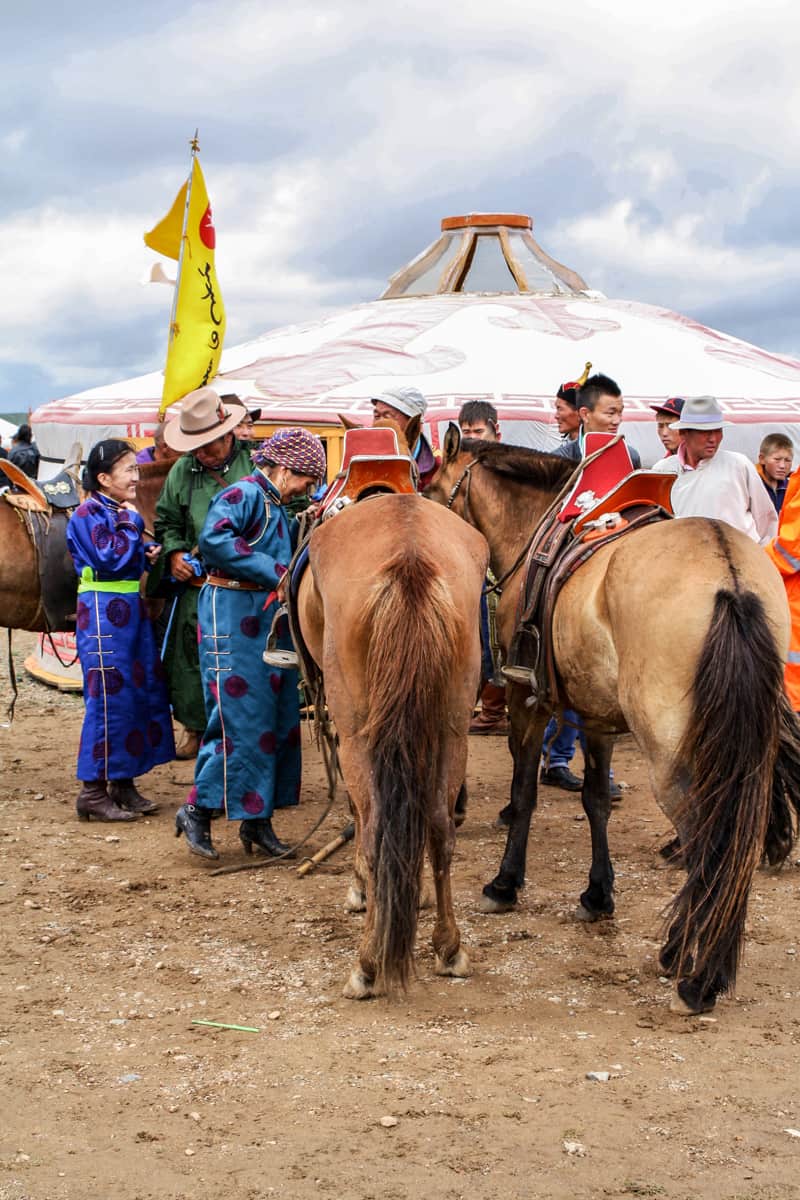
Mongolian locals enjoy the Nadaam Festival.
The plan was to get to our first ger camp, but after approximately 30 kilometres, we encountered a large ditch of water on the road. It resulted in us having to drain the water by hand and build a road and a dam for most of the afternoon to help us get across. Although this sounds horrendous, it created a great sense of camaraderie and, ultimately, an immense sense of achievement. We got to camp on a high point of the Gobi Desert instead near the town of Tsogoovi .
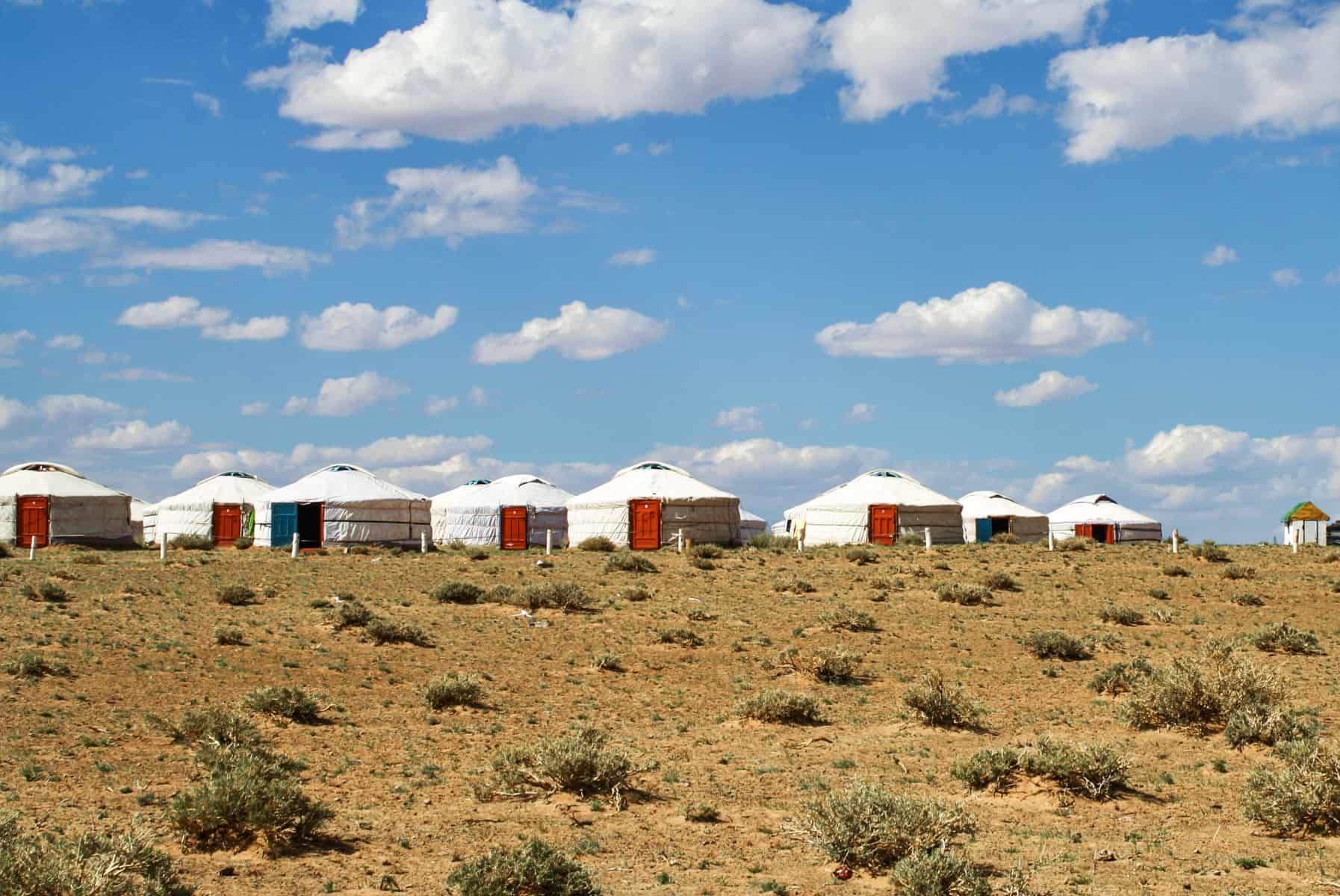
A Ger Camp on a hilltop in the Gobi Desert, Mongolia
We began our journey without a hitch to the ger Camp called Gobi Discovery, stopping at the town of Dalanzagad on the way. Mongolian towns are typically tiny and compact settlements that are reasonably large but without the ruin of a city like Ulaanbaatar.
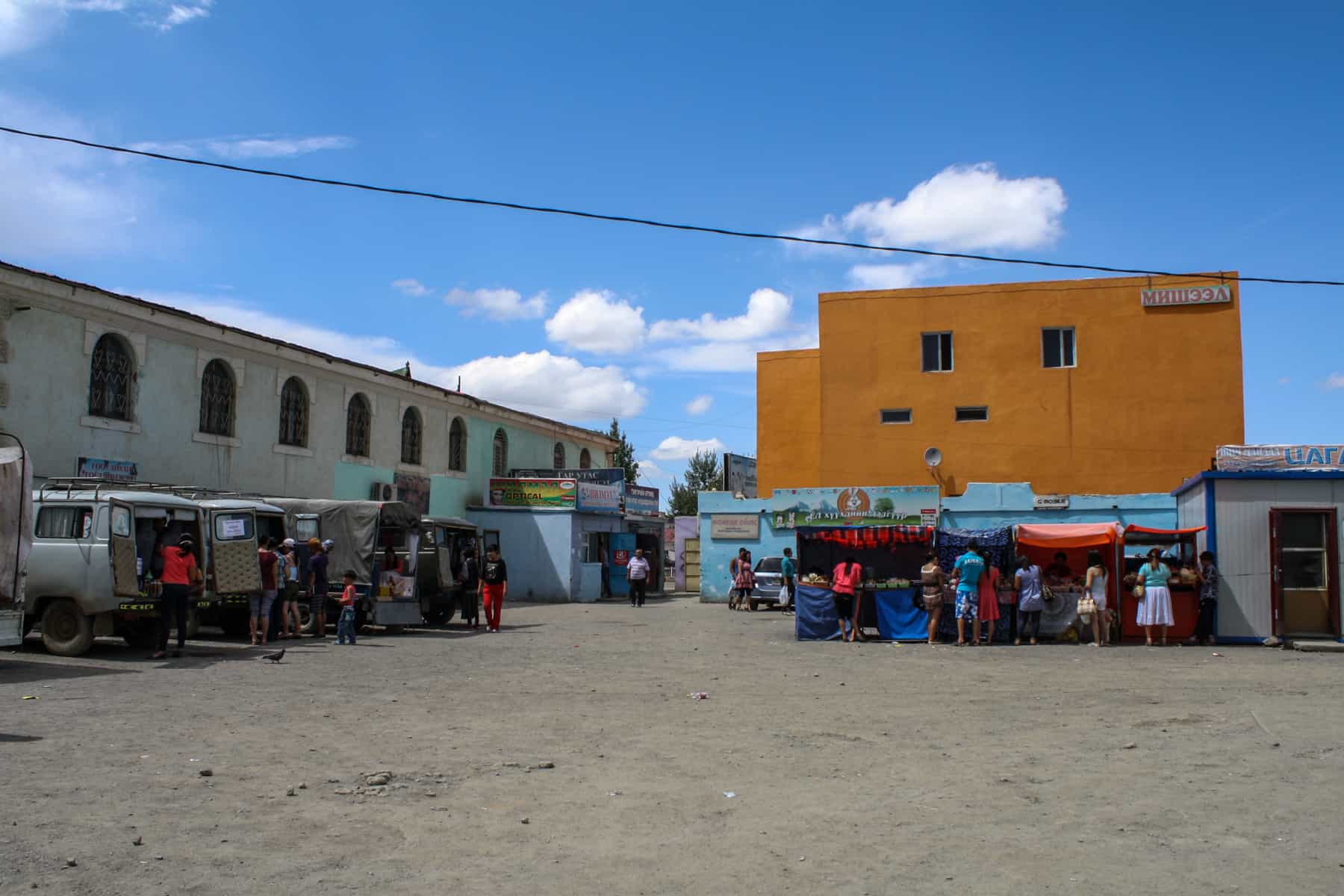
Market time in the town of Dalanzagad, Mongolia
We hiked in Yolin Am , a beautiful canyon in the Gobi, an ice valley, which hosts a colossal glacier all year round. The hike was spectacular, but, unfortunately for us, little of the iceberg remained, although we had lots of fun playing with what little ice there was regardless.
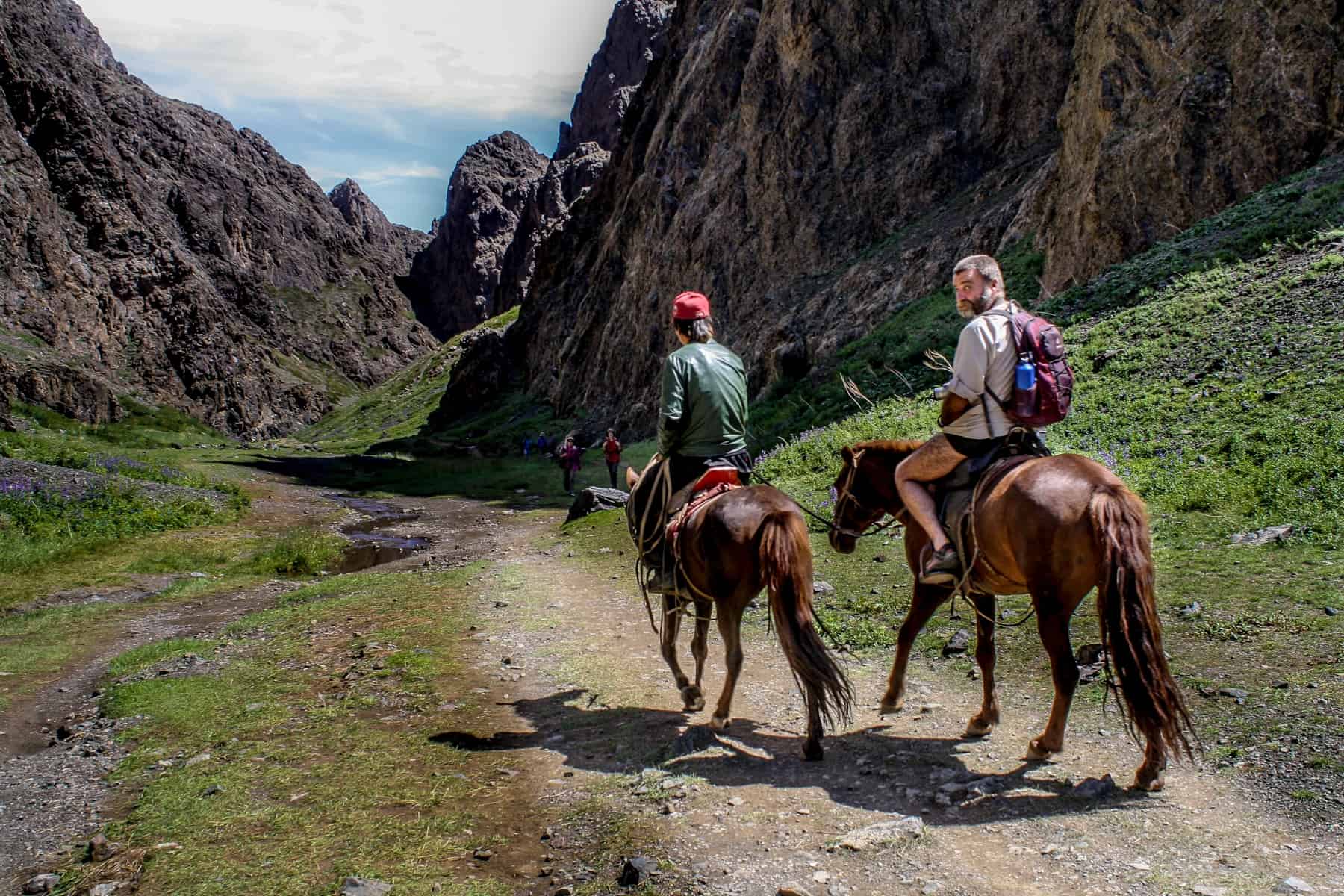
Hike or horseback in the Yolin Am Valley in Mongolia
Many sandy riverbed crossings eventually led us to our second Ger camp, Khongoryn Els Ger Camp. Here, you only have to open your ger door to be greeted with a breathtaking view of the Gobi and the Khongoryn Els Sand Dunes , which I later climbed, drank beer on and ran down. That was after a camel ride, of course.
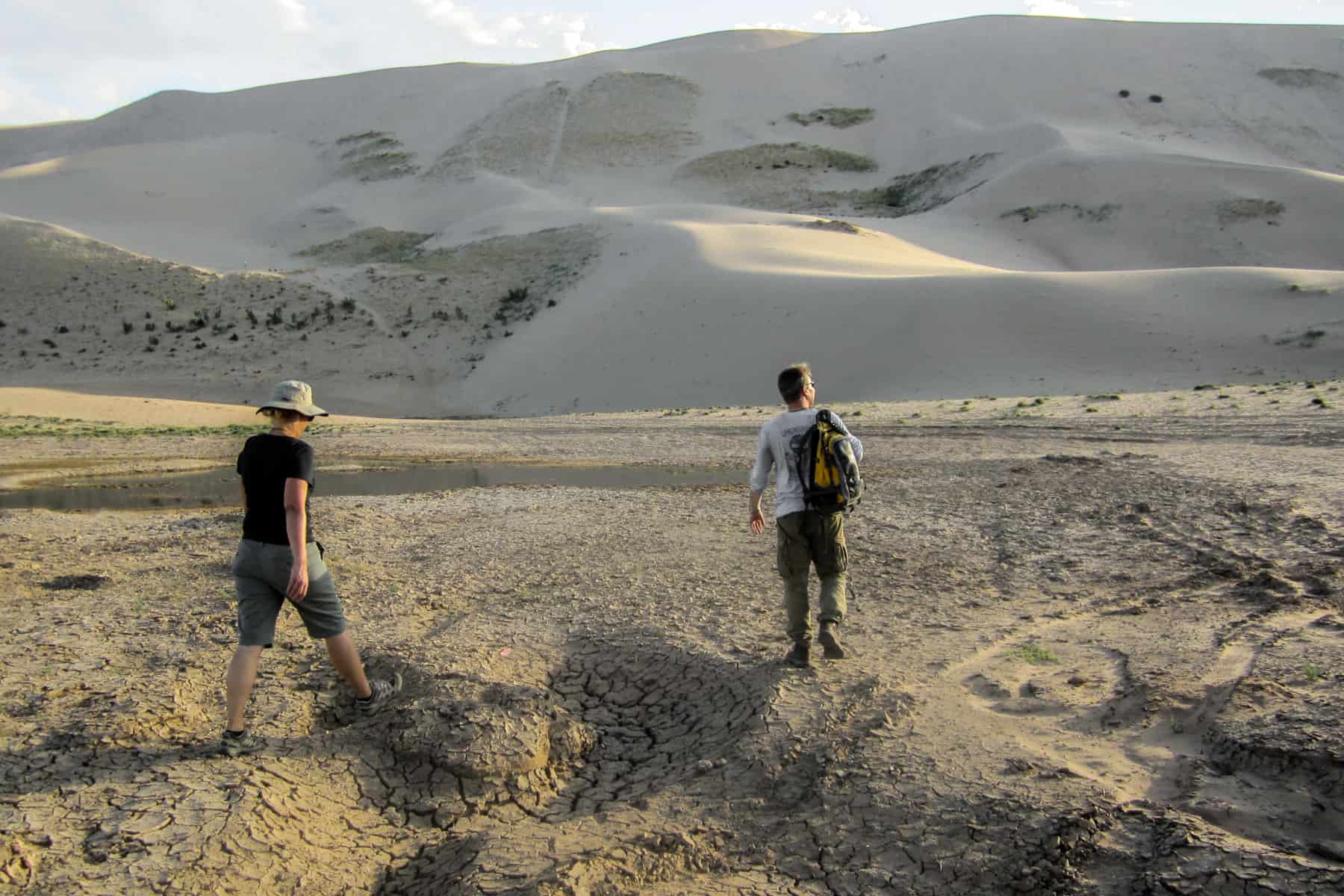
The glorious Gobi Desert Khongoryn Els Sand Dunes
Bumpy mountain roads took us to the spectacular Bayanzag Flaming Cliffs , which are a Mongolian version of the Grand Canyon, but smaller. It’s a significant site that unearthed many dinosaur fossils and eggs, and it is also a stunning backdrop for bush camping.
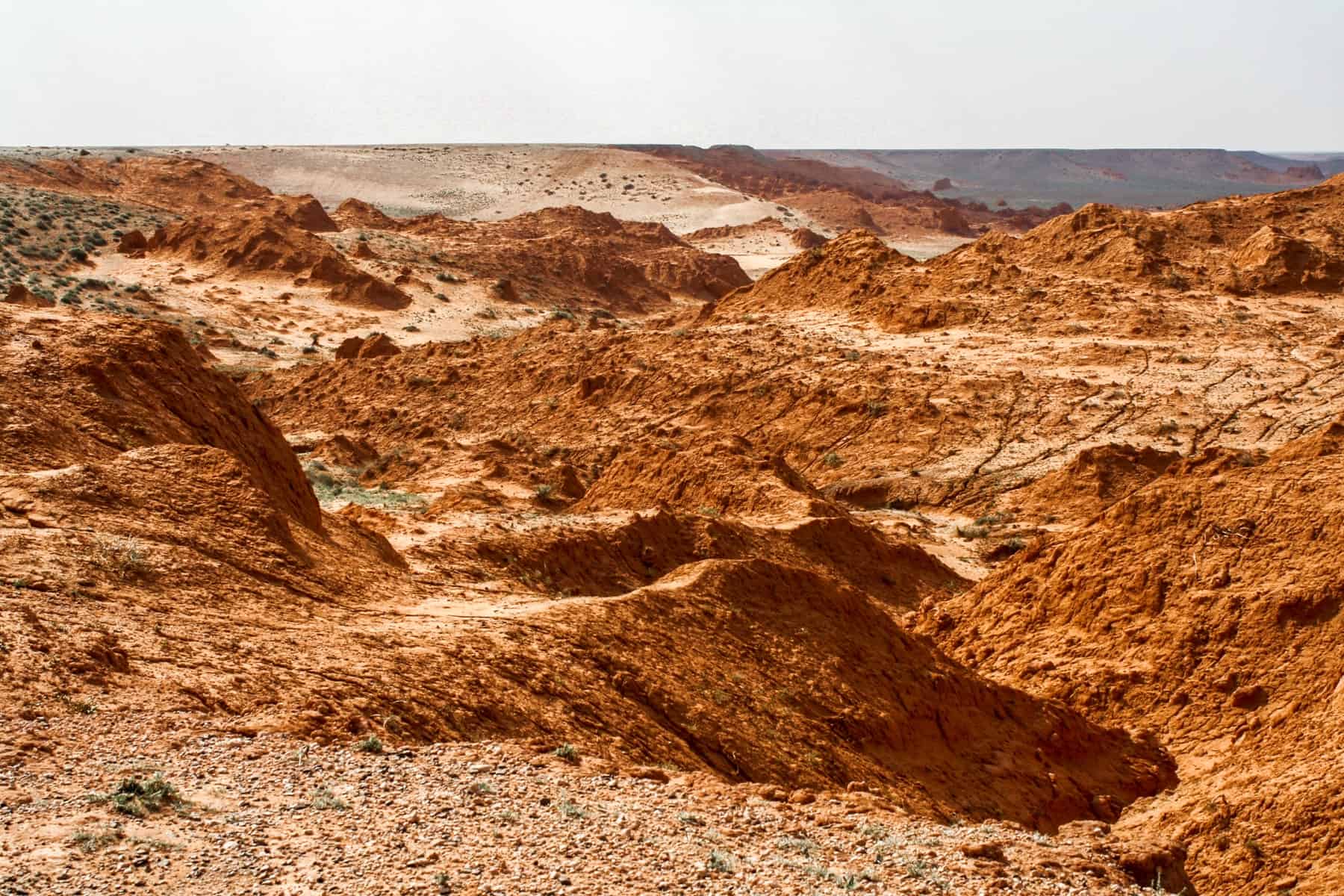
The blazing ochre colours of Mongolia’s Bayanzag Flaming Cliffs
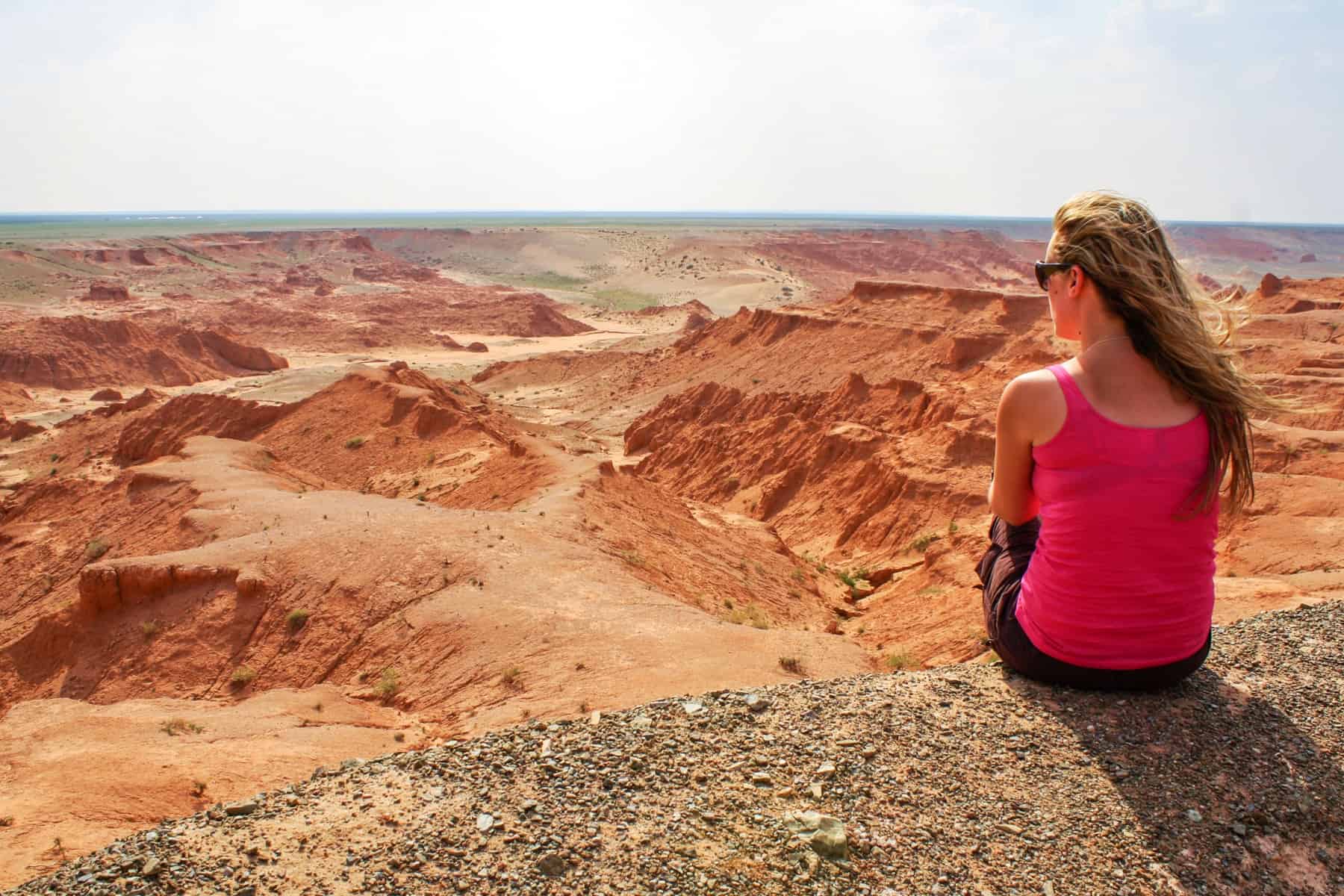
Marvel the mars-like landscape of Bayanzag Flaming Cliffs when you travel to Mongolia
When the communists invaded Mongolia in the 1930s (known as the Purges), nearly all Monasteries were destroyed. Ongii Monastery was one of them, and we visited the ruins here before driving to Arvaikheer, where heavy rain forced us into a hotel for the night. At times, random bad weather makes bush camping in Mongolia impossible, so it is essential to prepare for a budget recount at any given time.
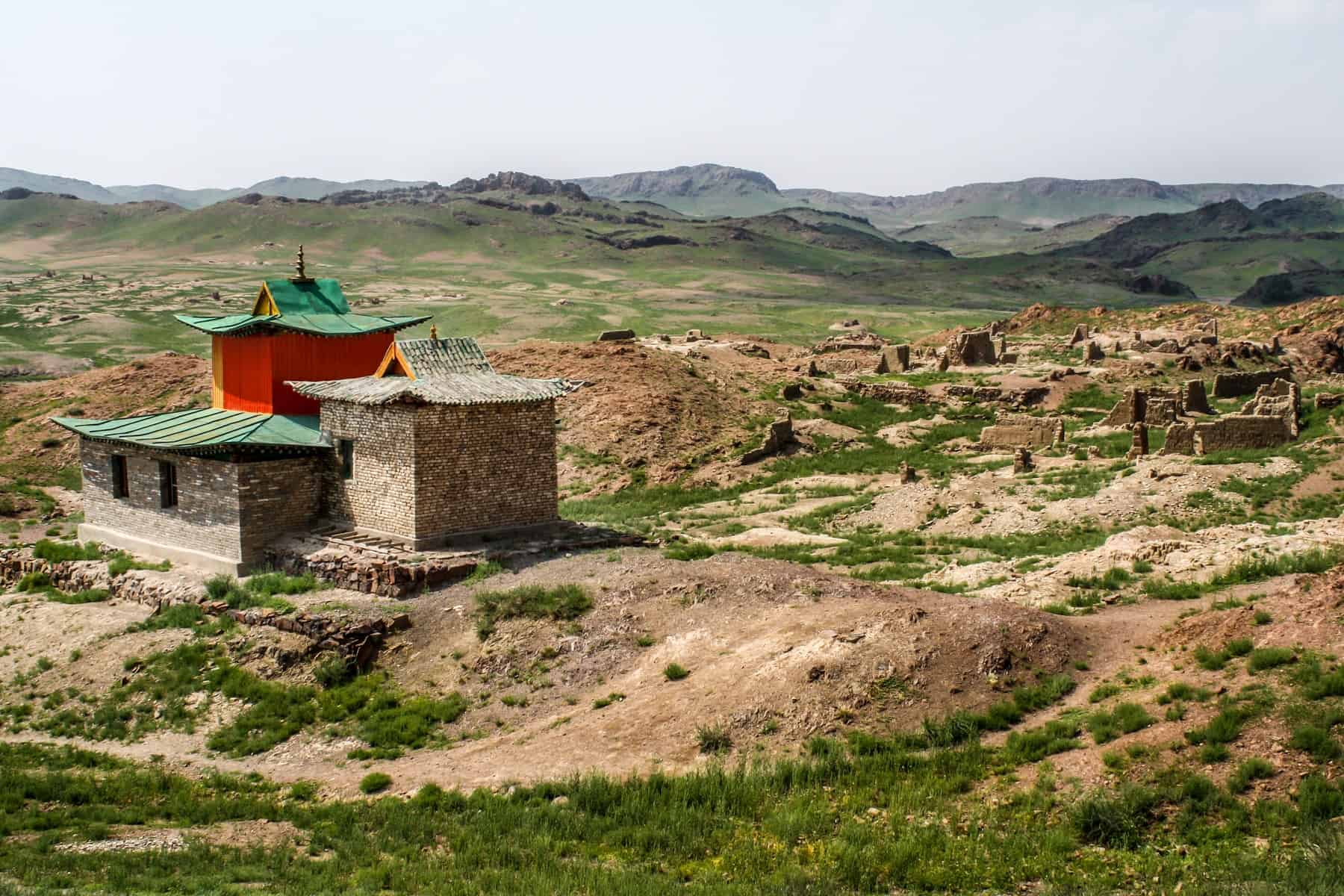
The site of the Ongii Monastery in Mongolia
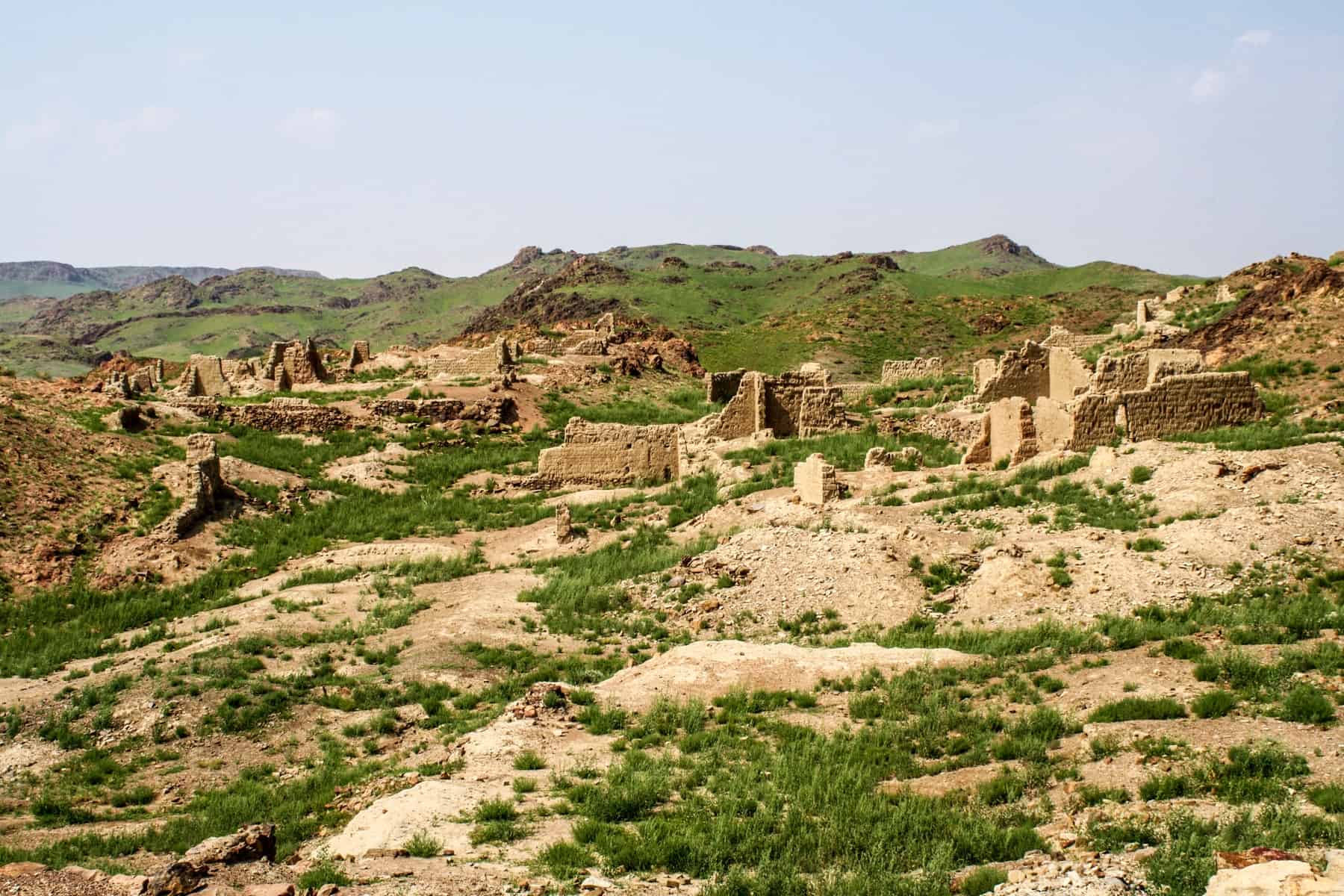
The scattered stone ruins of Ongii Monastery in Mongolia
We began our journey to the third ger camp but got badly bogged around midday after the truck had to swerve slightly, of course, to miss a drunk driver who came in our path (sadly, a lot of people drink and drive here). It took over five hours to get out, with the help of a small local tractor, and during that time, a few of us who remained to help with the truck (local jeeps rescued a few) lost our minds. It was a hilarious few hours that would have made an excellent documentary, probably how a Lord of the Flies scenario starts.
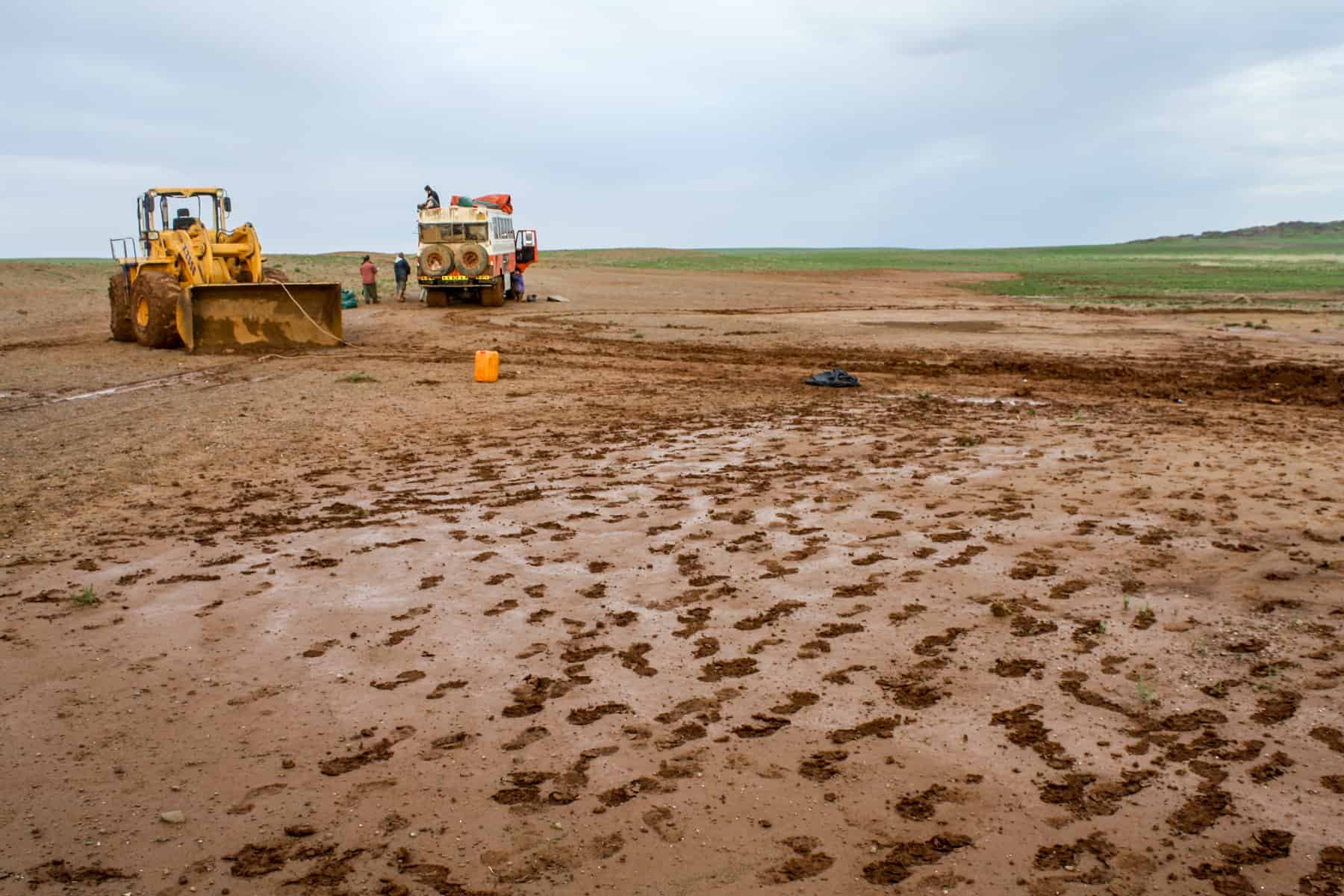
Tractors help pull the Overlanding truck out of the sticky mud in Mongolia’s rural landscape.
The roads were not rigid and stable enough for the truck to continue, especially with all the hills. After setting up tents and cooking dinner, two small vans came to the rescue to take us on our two-hour journey to the Ger Camp. It was a scary ride in the dark, where we stopped at the driver’s backyard and where a small boy jumped into the hold of the van for the rest of the journey.
I highly recommend staying in a ger camp in the beautiful Orkhon Valley . There’s nothing like a pleasant hike through the beautiful forest to reach the Tuvkhon Monastery and see the surrounding area. Pure bliss.
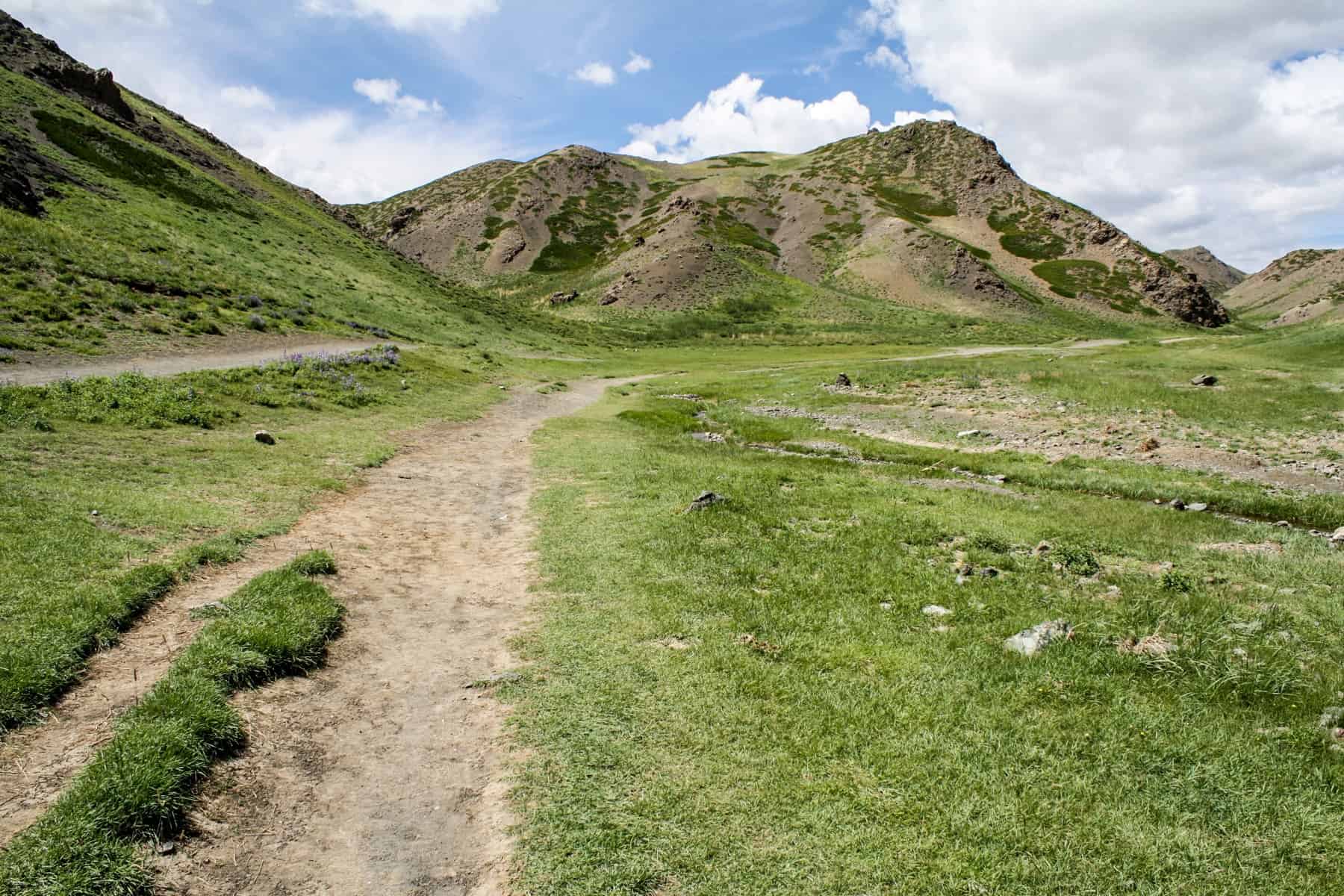
The lush green leading to the soft peaks in the Orkhon Valley Mongolia
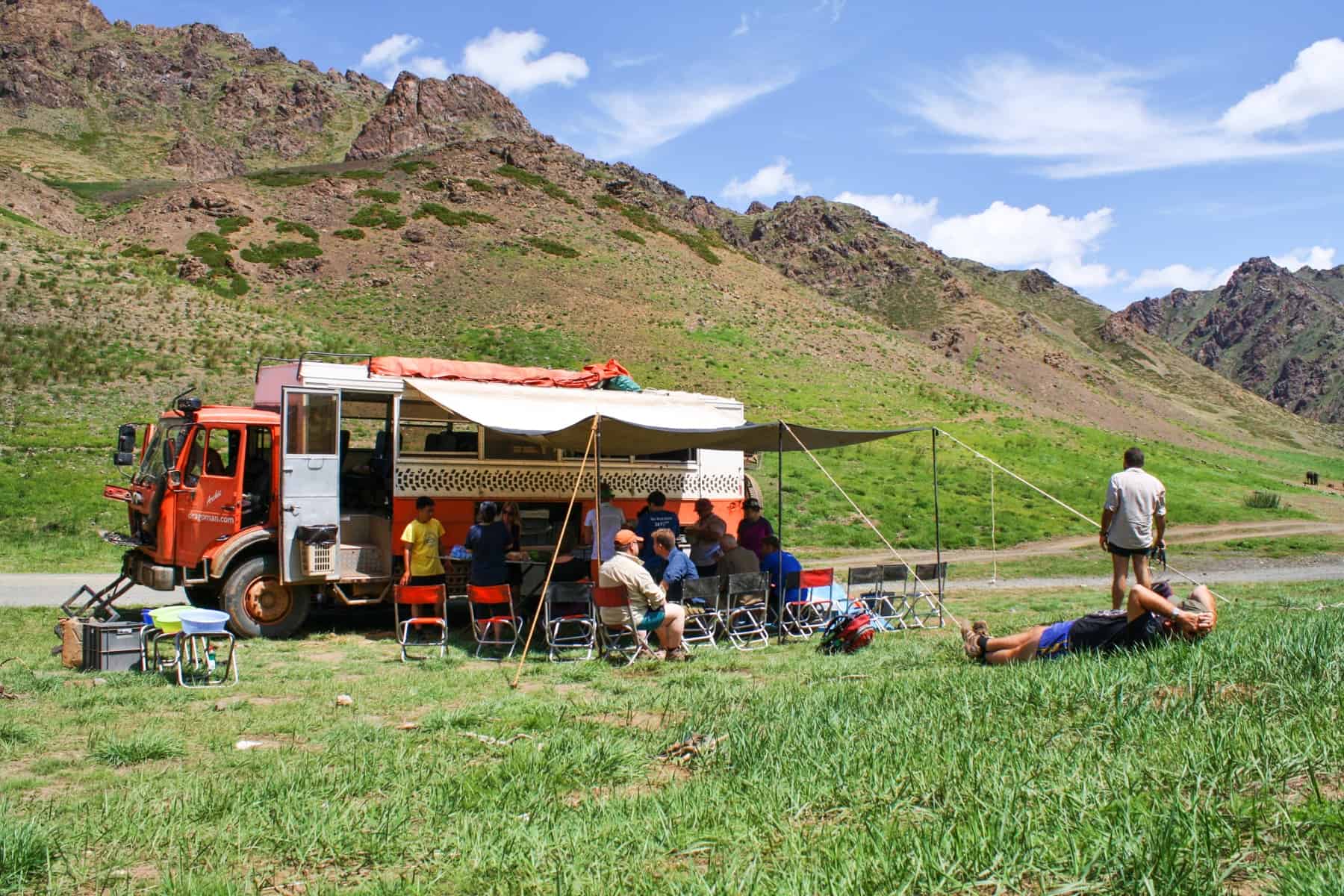
A rest stop in the scenic Orkhon Valley landscape
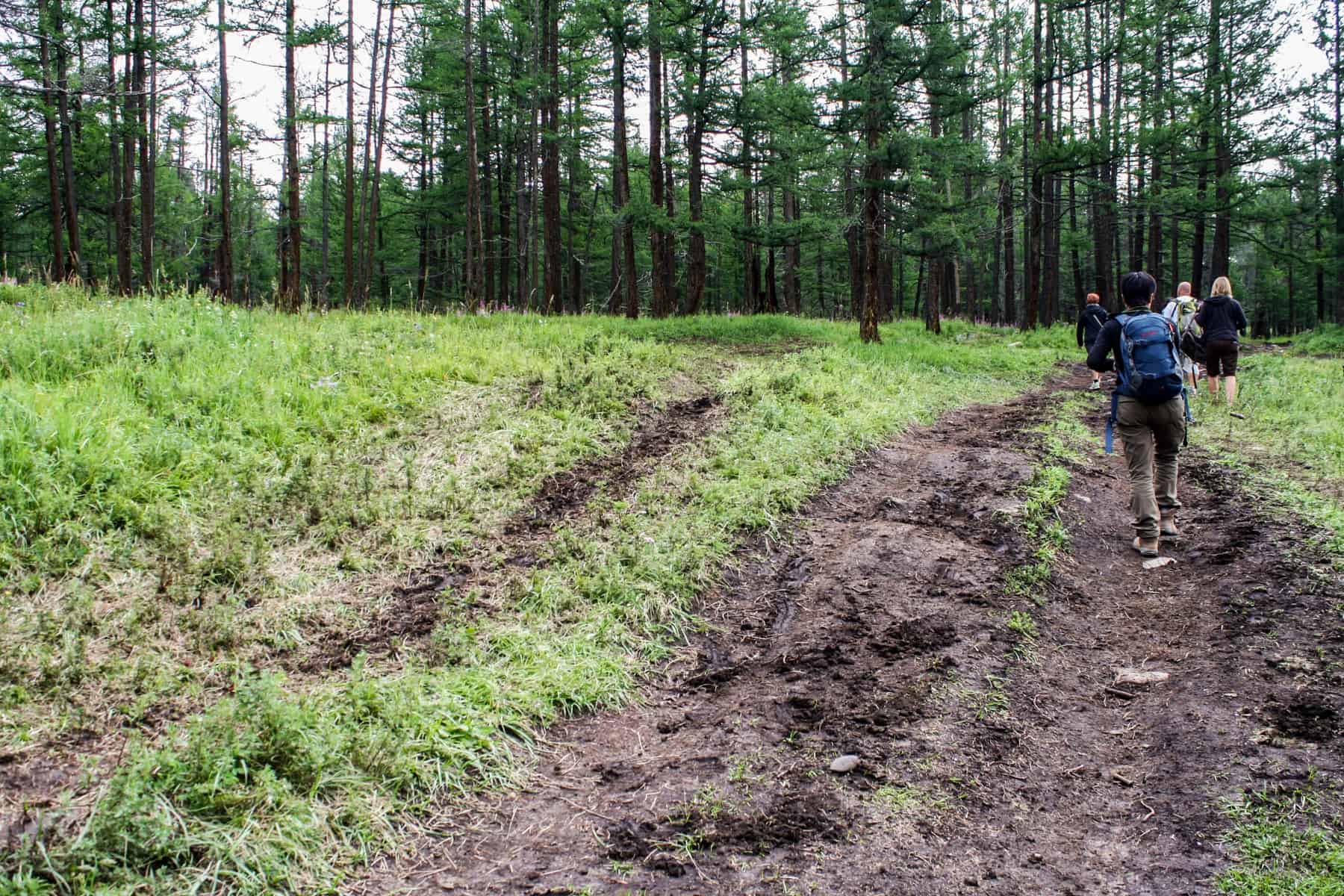
Hiking the forest trails of Mongolia’s Orkhon Valley

The rocky plateau that surrounds the Tövkhön Monastery in Mongolia

The colourful entrance to the Tövkhön Monastery
The Orkhon Valley waterfall was the next stop on our five-hour drive to the next ger camp. This camp plays host to the famous hot springs in the region, where we went skinny dipping and enjoyed a few refreshing beers.
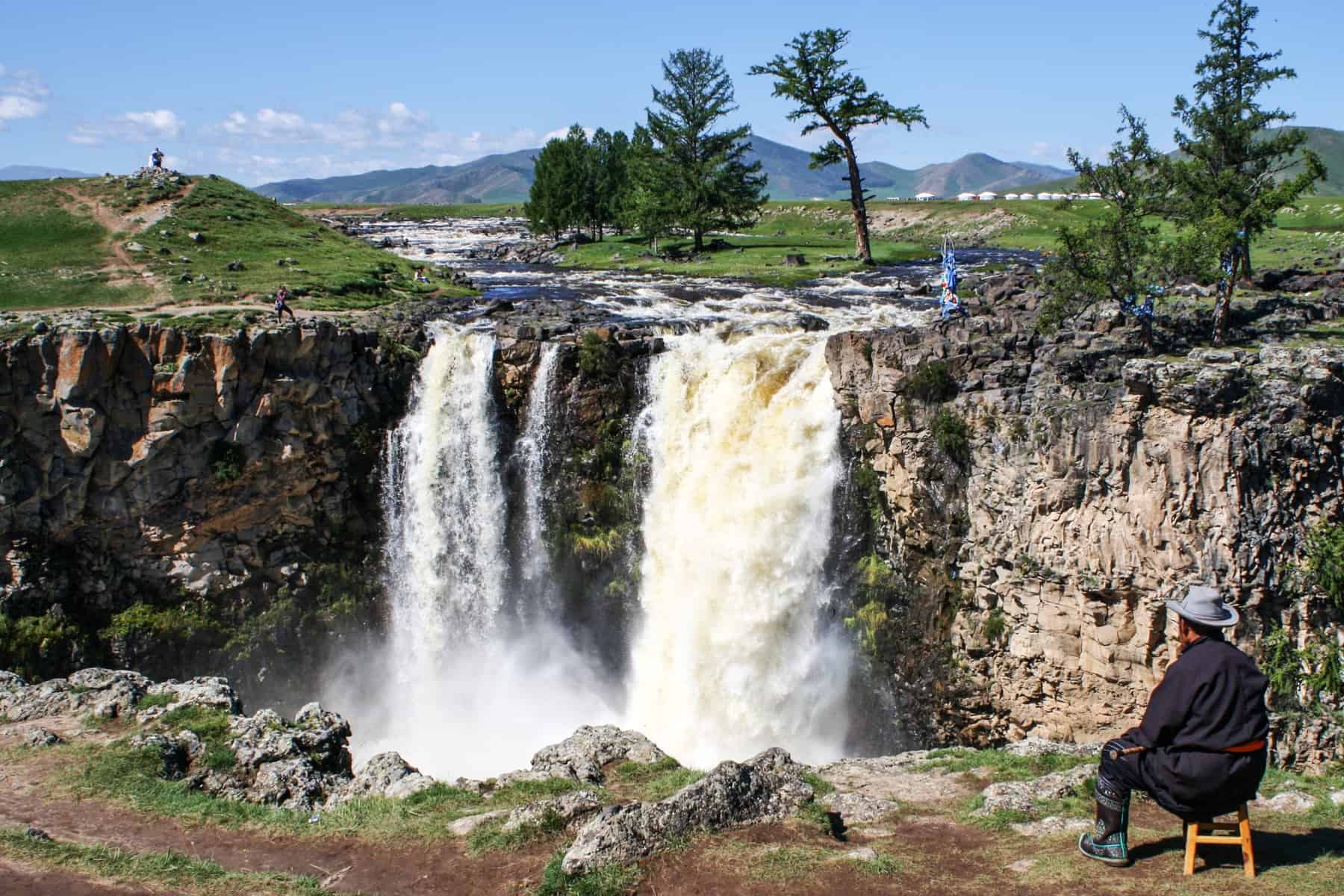
A Mongolian man sits in a chair peacefully enjoying the backdrop of the Orkhon Valley Waterfalls in Mongolia.
Fully clothed, of course, we took a short hike through the lush green forest to visit the source of the hot springs. When you come across your first sighting of trees after two weeks of barren land, you begin to appreciate such incredible surroundings.
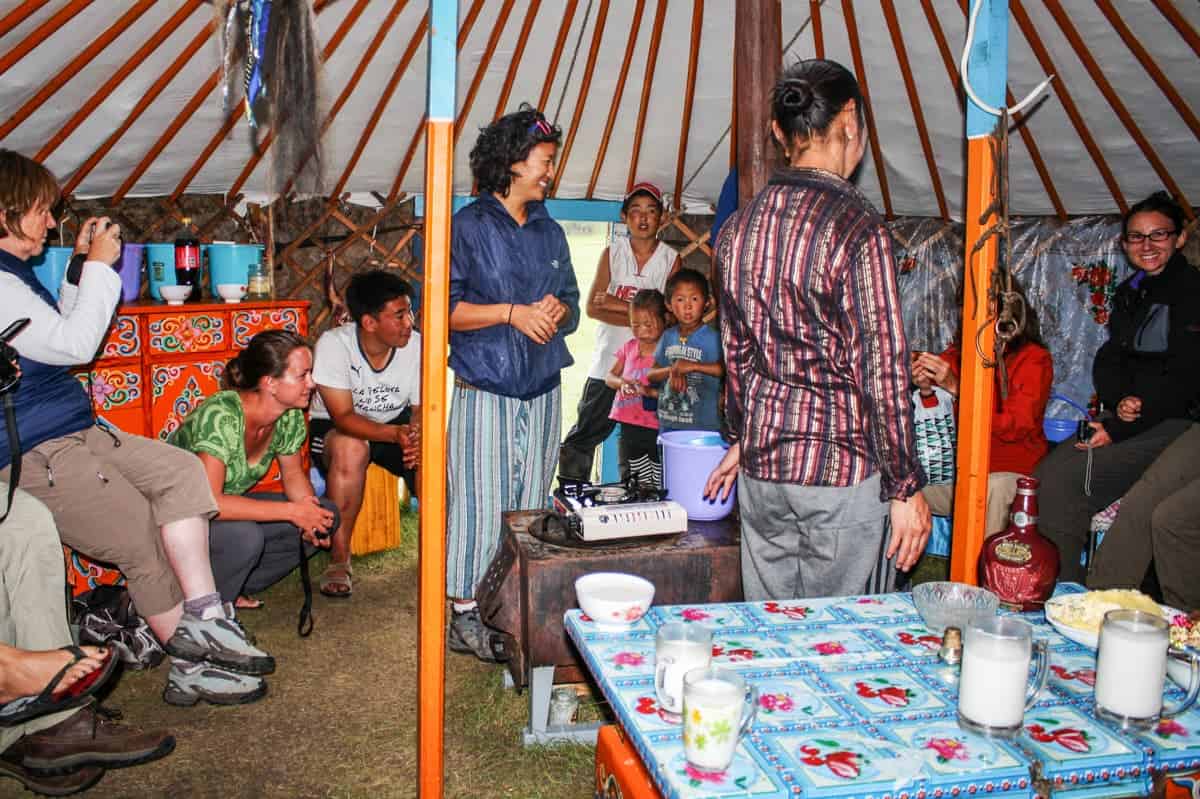
Visiting a local nomadic family in their ger in Mongolia
As we had two Mongolian guides with us (invaluable support in a country where very little or no English is spoken or understood), we could visit a Mongolian ger and a local family to learn about nomadic life.
It wasn’t a tourist set up, but a traditional, local family who lived on an isolated patch of land in the valley. We tried their dairy products (their source of income), including fermented mare’s milk, curd and butter, before learning about ger rules and traditions and asking each other many questions!
READ MORE: Visiting a Mongolian Ger – Understanding the Nomadic Culture of Mongolia
We needed a quick stop in the nearby town of Tsetserleg to stock up on food supplies. It was a market day with an electric atmosphere. I get a high from moments when you don’t know where you are and what to do, and where you have to work hard to communicate and negotiate.
We later visited the most important Monastery in the country, Erdene Zuu Monastery in Kharkhorin – the first Buddhist monastery in Mongolia that had up to 100 temples and 1,000 monks before the purges in 1937. Only three temples remained, alongside several statues and other items.
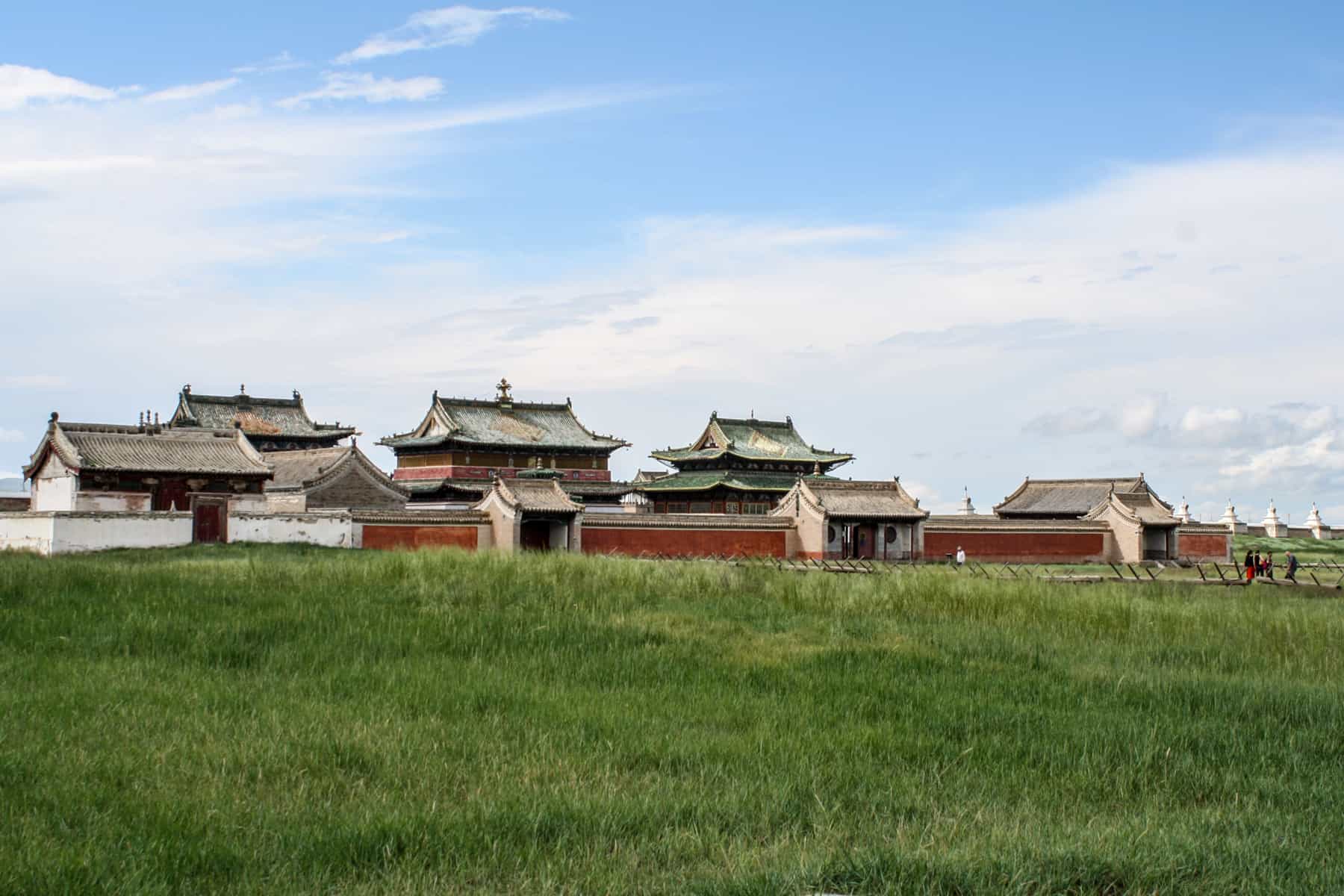
The exterior walls of the Erdene Zuu Monastery, Mongolia
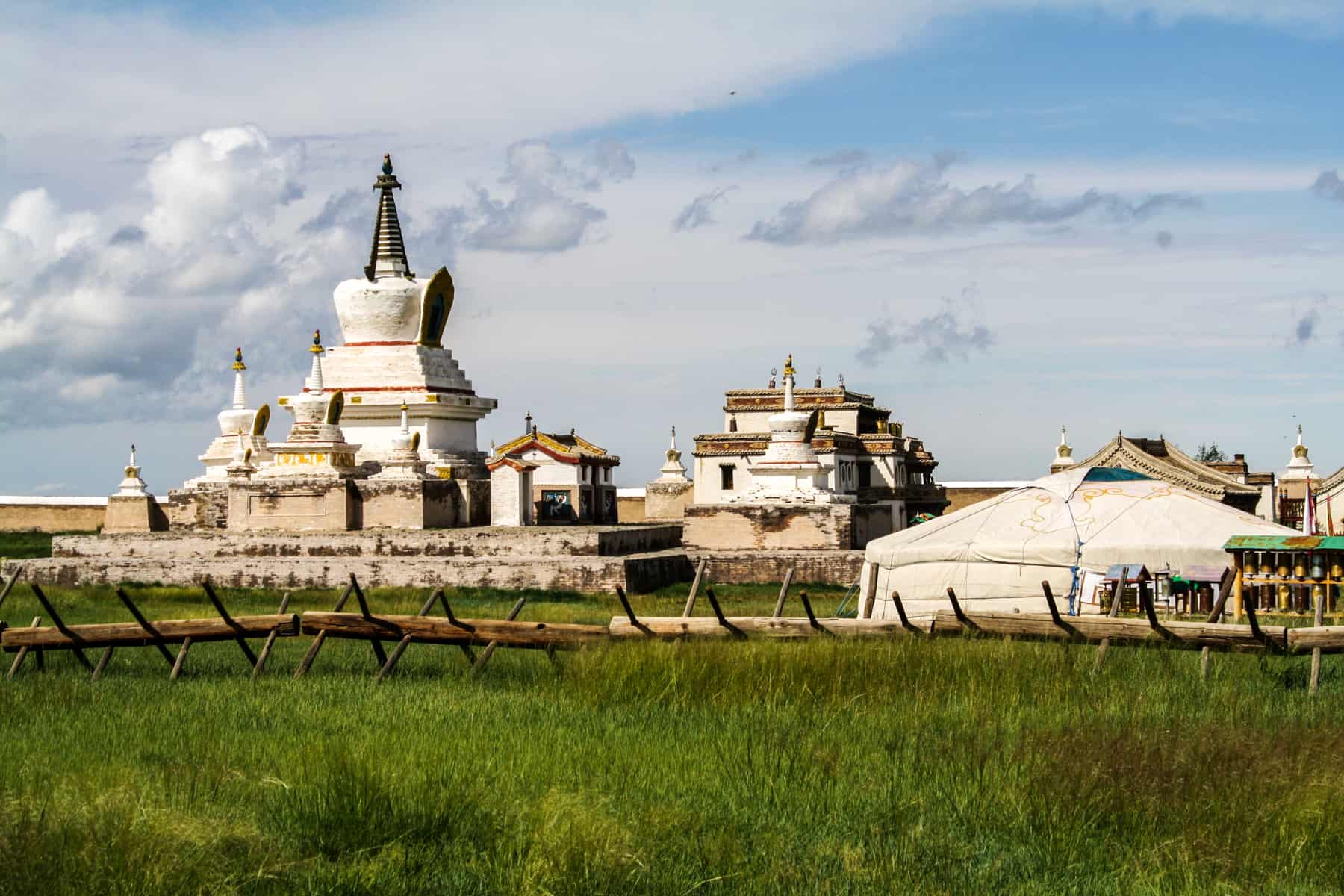
Part of the temple complex inside Mongolia’s Erdene Zuu Monastery
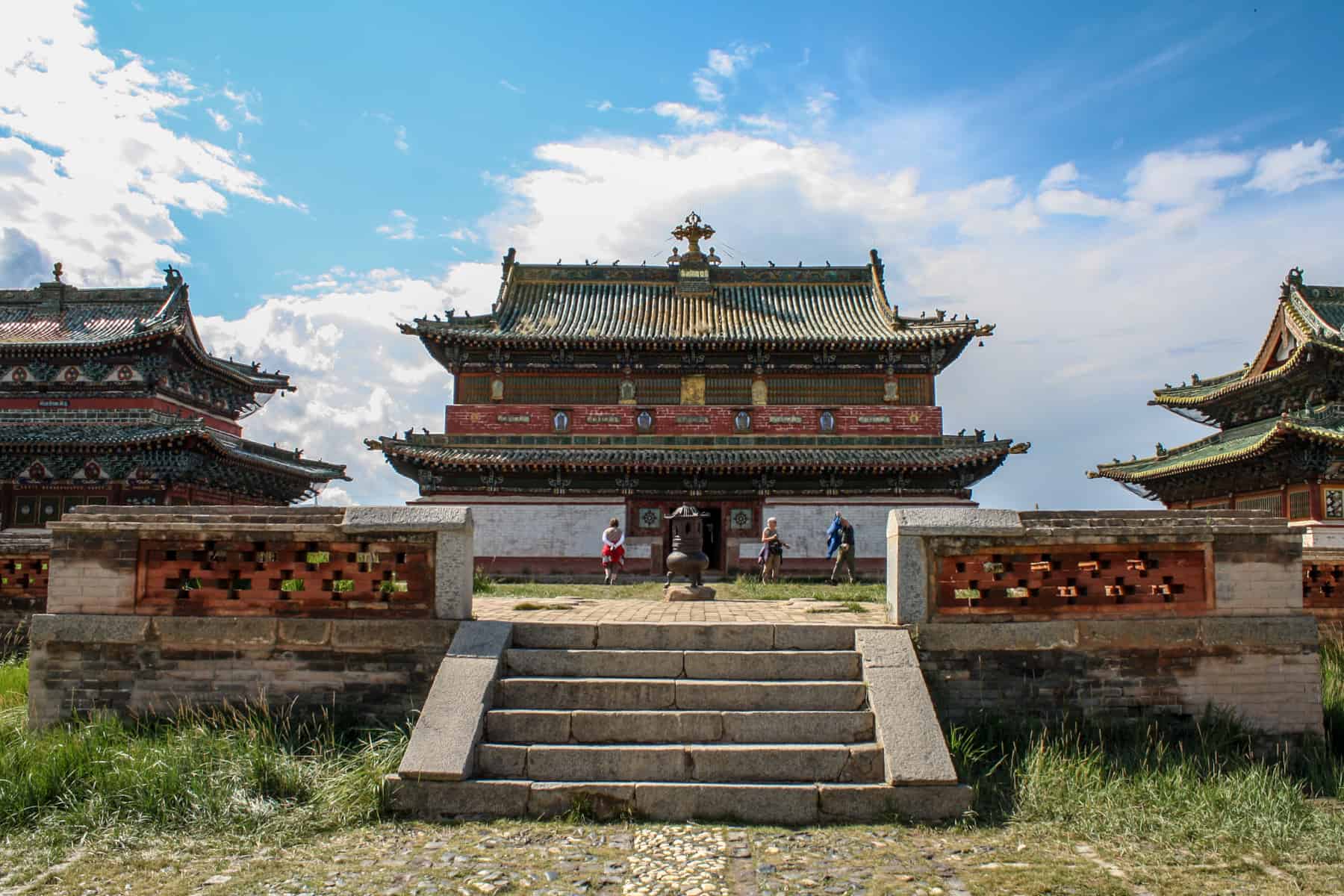
The red, gold and green temple structures at Erdene Zuu Monastery
A visit to the museum we camped next to – the Kultigen Monument, housing artefacts from the Turkish empire – set us on the way to the nearby Ugii Lake, where we would relax all day and camp for one night.
Ugii lake emits a calming atmosphere and invites you to traverse it slowly. While it would take almost a day to walk around, it’s a great place to unwind and reflect. I count this as one of my most favourite spots in all of Mongolia.
Our camping set-up beside Ugii Lake in Mongolia
We arrived at Hustain National Park in the afternoon to settle into a ger camp. This National Park is known for the rare Przewalski’s horse, unique to Mongolia. When you finally track down a small group, it’s still hard to see their beauty up close as you can’t get that close to them.
Still, we got to meet the ‘Best Mongolian Folk Band in Mongolia’ called Domog in the evening after a fantastic show where they performed rock-style tunes via the famed throat singing. I guess it is the equivalent of meeting Westlife in Ireland. Seriously.
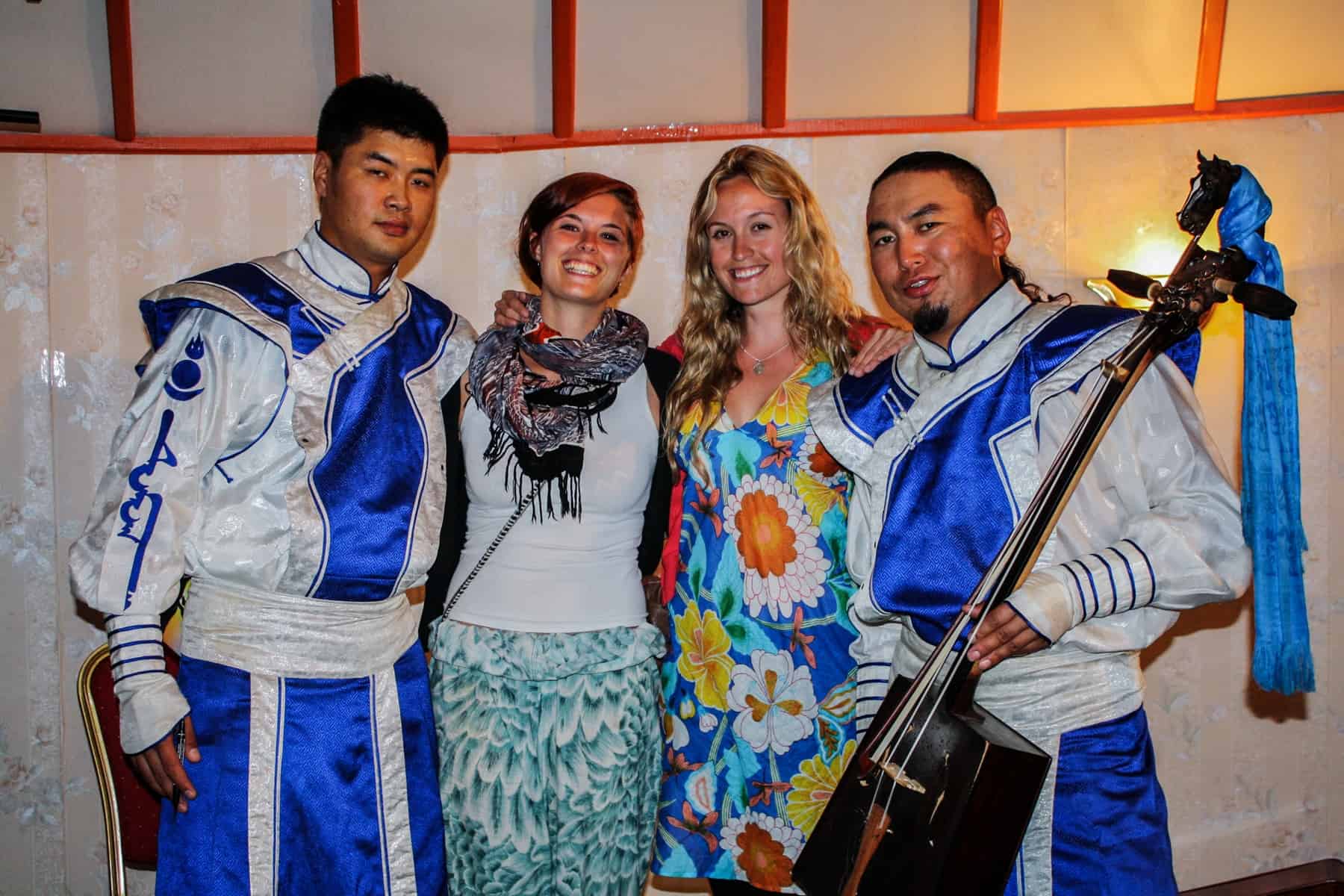
Meeting Damog, the Best Mongolian Folk Band in Mongolia
We had to journey back through the crazy, construction-overloaded, traffic-ridden Ulaanbaatar to get to Terelj National Park and the last ger camp of the trip (we were due to bush camp the weather put a stop to that).
It’s incredible how a few hours down the road from the capital brings you to some of the country’s most spectacular landscapes.
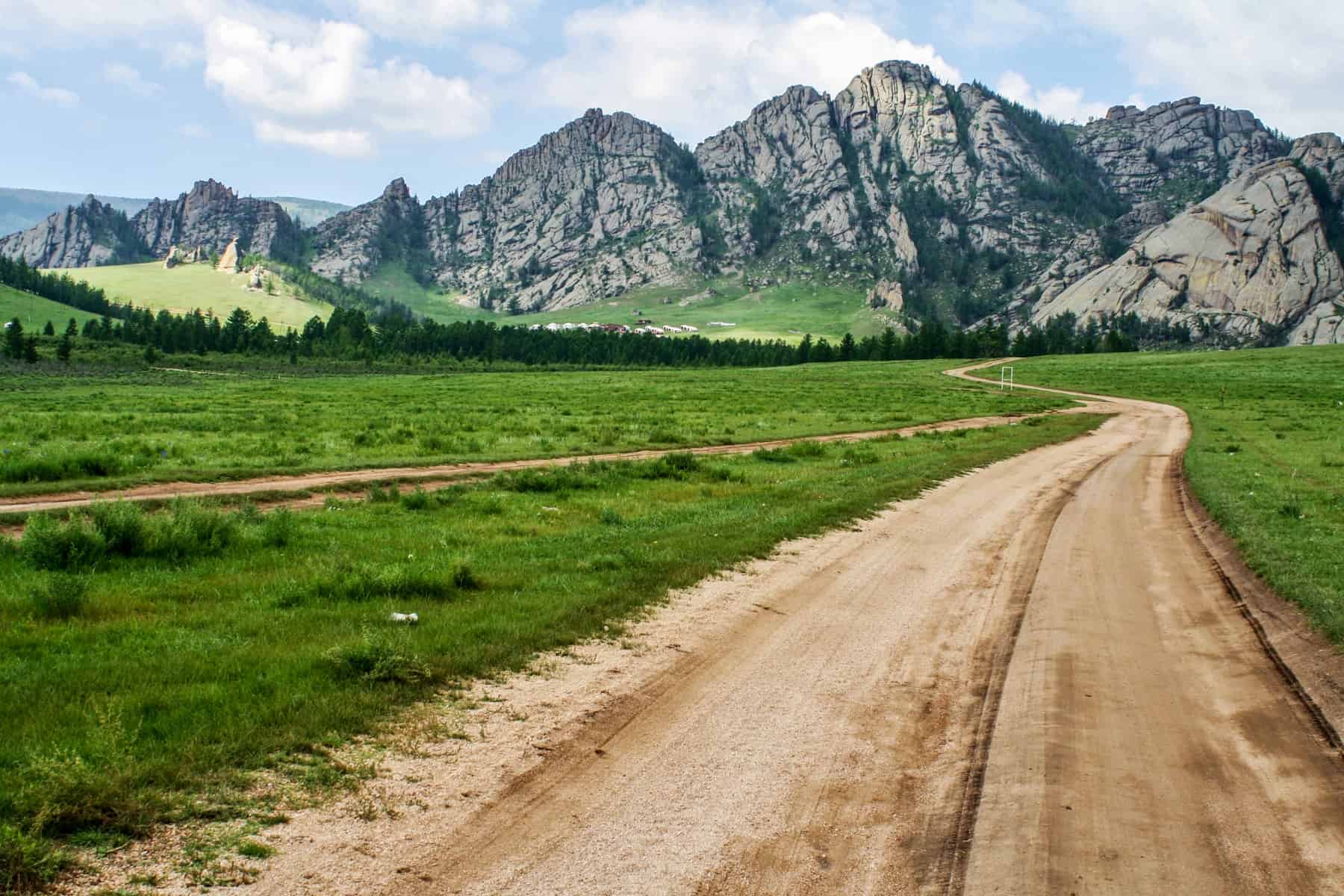
The road that leads to the heart of Terelj National Park, Mongolia
If you love walking and hiking, you will love Terelj National Park. Here you can wander for hours, hike to a Monastery and horse ride through the forests and rocky hilltops. Make sure you check out ‘Turtle Rock’ too. You may think it looks like something else from a certain angle!
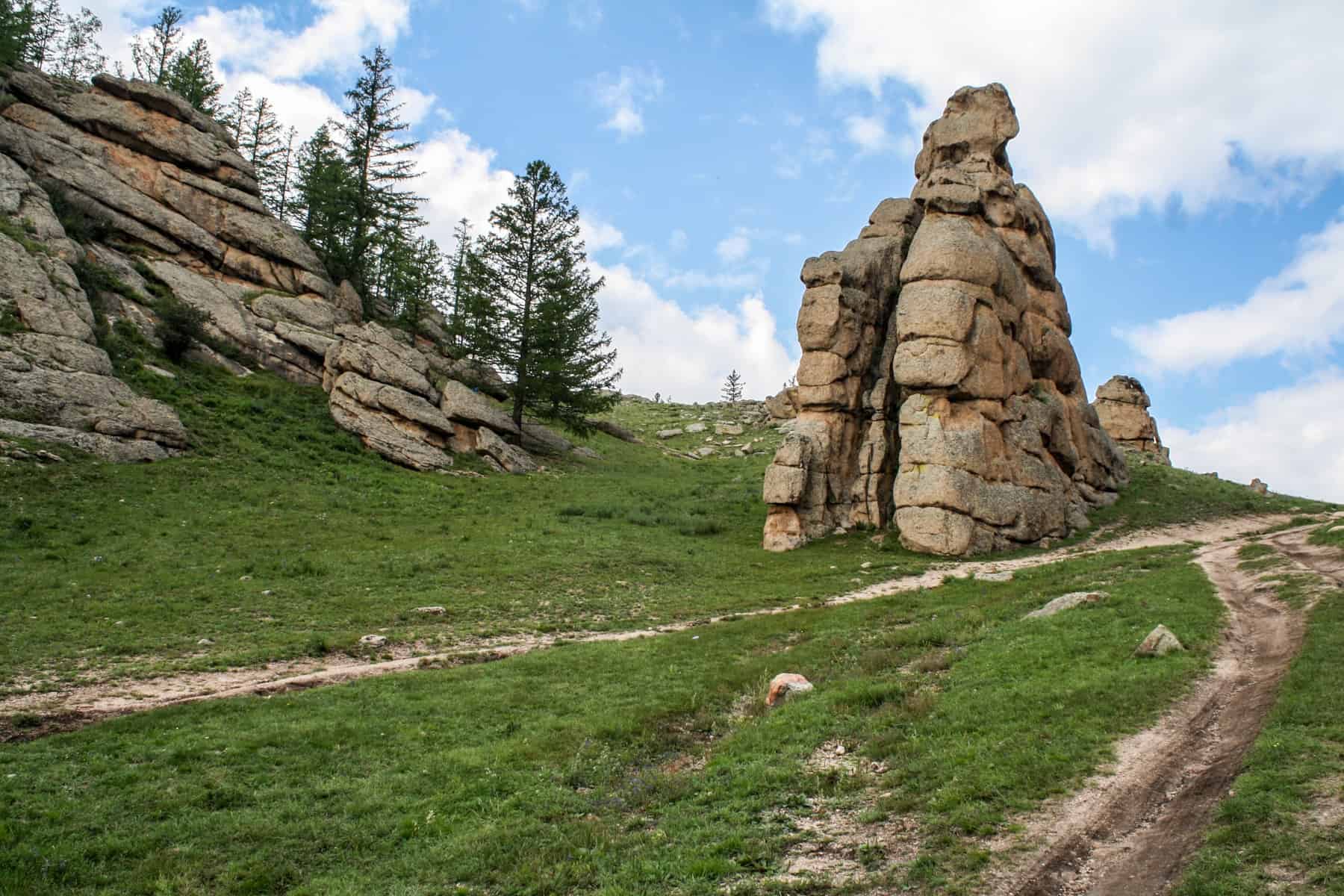
One of the layered rock formations in Terelj National Park in Mongolia
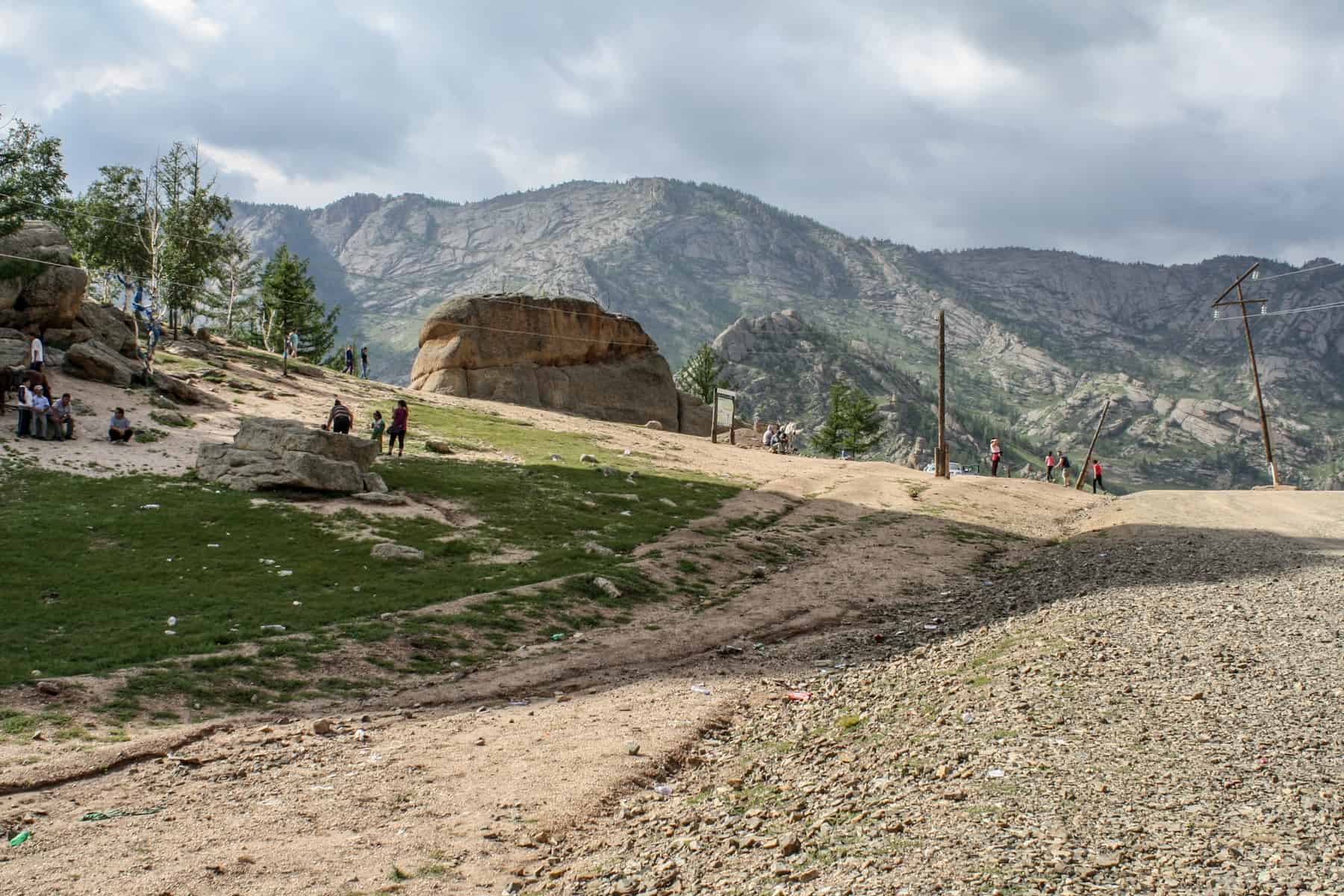
Visiting Turtle Rock in Terelj National Park Mongolia, named for its shape similar to the animal
Nothing beats the end of the wilderness journey than a visit to the giant 40-metre tall silver Ghengis Khan statue just outside of Ulaanbaatar on the banks of the Tuul River. Legend has it that it was at this spot that Ghengis Khan found his golden whip. Anyhow, a bit of a pilgrimage spot for locals, it was fascinating (if not a bit odd and imposing in the same way a colossal silver statue of Hitler in Germany would probably evoke the same feeling).
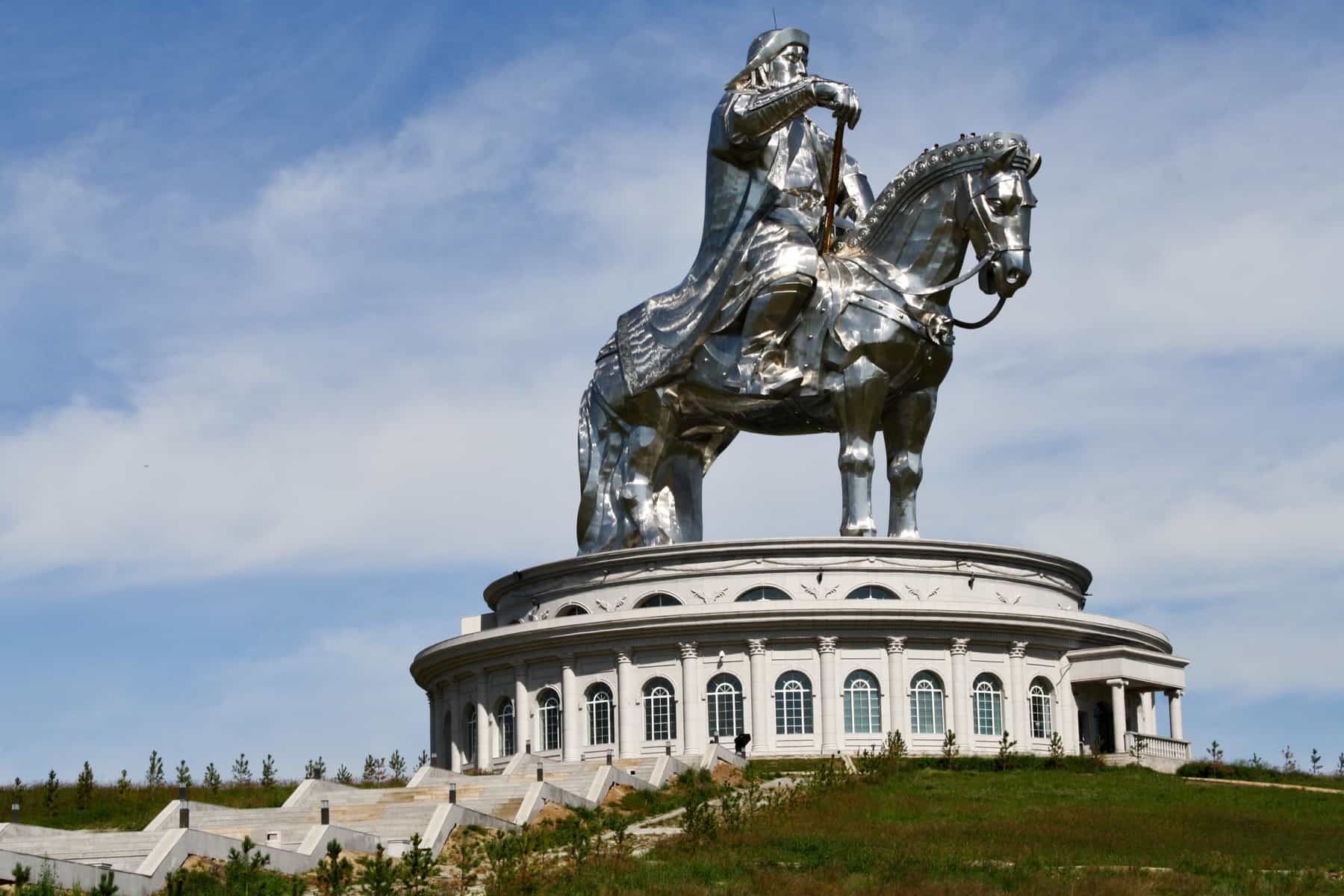
40-metre tall silver Ghengis Khan statue just outside of Ulaanbaatar, Mongolia
Back in Ulaanbaatar, I turned my hostel room into an office and distracted myself with a pizza slice, cake and coffee at Wendy’s Bakery – worth a visit alongside the State Department Store, which is right next to the hostel area. It’s an excellent chance to rest up after adventure through the vast landscapes of Mongolia.
The Dragoman overland truck is what we called home, except we didn’t sleep on it overnight. Instead, we went wild camping and every night, checking into a hotel once when the rains were too much to settle a tent comfortably.
The Outside
The truck’s exterior has lots of compartments – storage for luggage and tents and a clean water supply, mealtime equipment and food supplies. It’s a travelling transformer, and everyone has to lend a hand setting up and packing down for breakfast, lunch and dinner.
If you have no sense of camaraderie or hate getting dirty, then this isn’t the kind of adventure trip for you. I embraced it and loved every minute of ‘roughing it’.
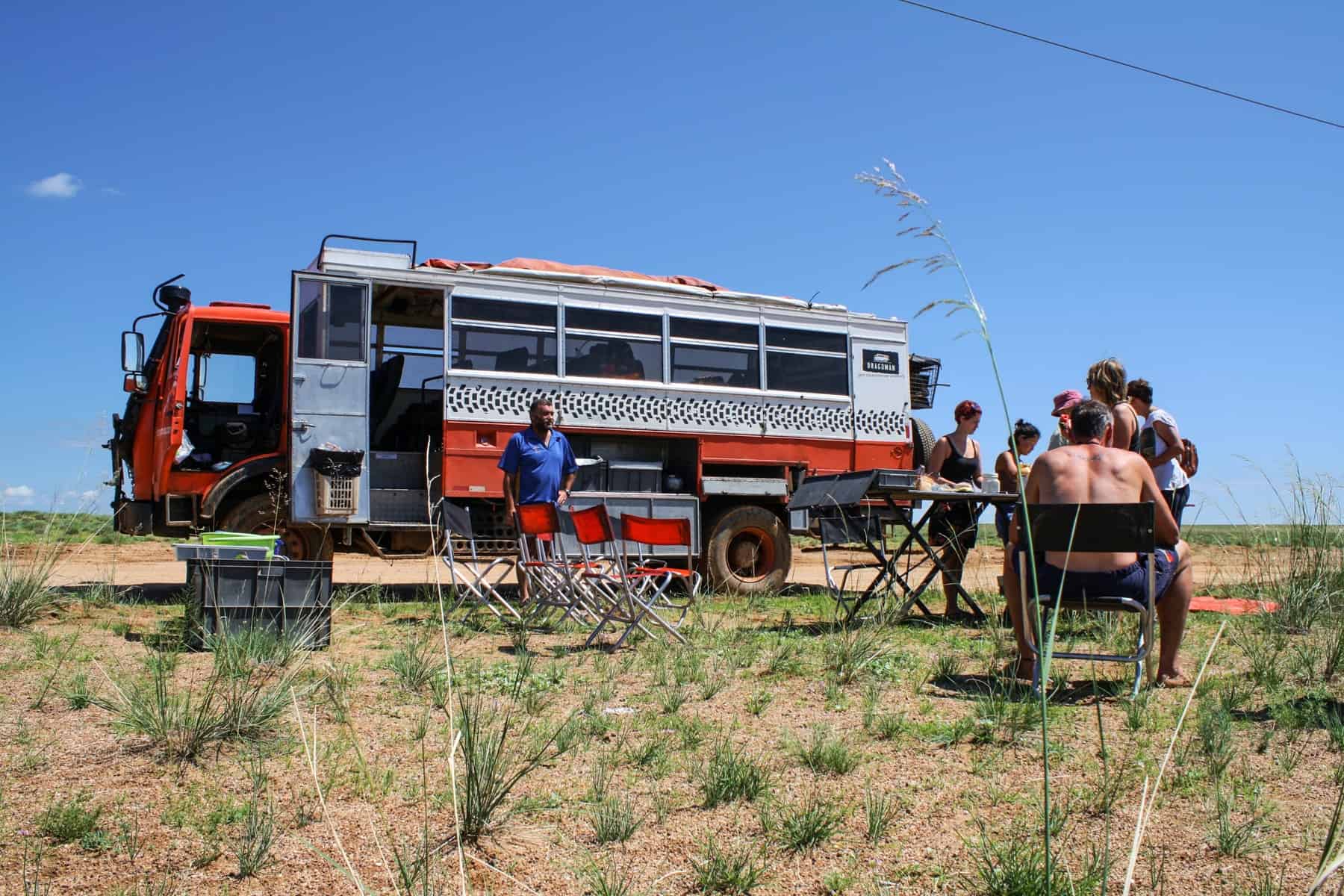
Travel in Mongolia was mostly about camping.
Twenty-three seats, a fridge, a safe, a bookshelf, prominent speakers and a place to recharge equipment, this is where we spend hours at a time, or what could end up being an entire day, traversing the landscape. We filled it with our belongings like a messy bedroom and made it cosy.
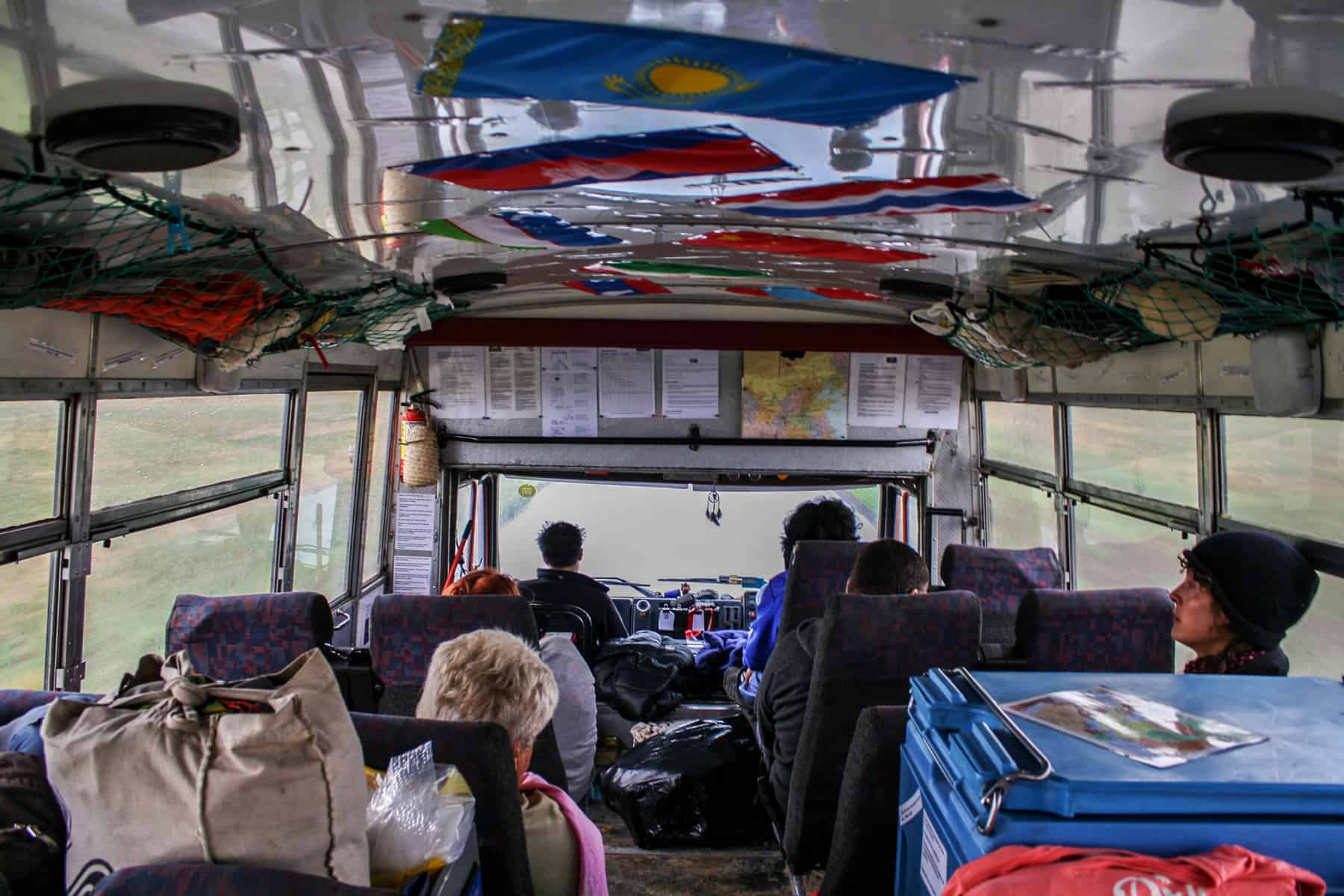
Inside the Overlanding truck on the journey travelling Mongolia
Along the Way
The two drivers are the mechanics, the navigators and the troubleshooters. Everything about the truck, from where it goes and how it gets there, hangs on their decision making, alongside our Mongolian guide who knew the land better than anyone else and could speak the language when we needed to call upon locals for help.
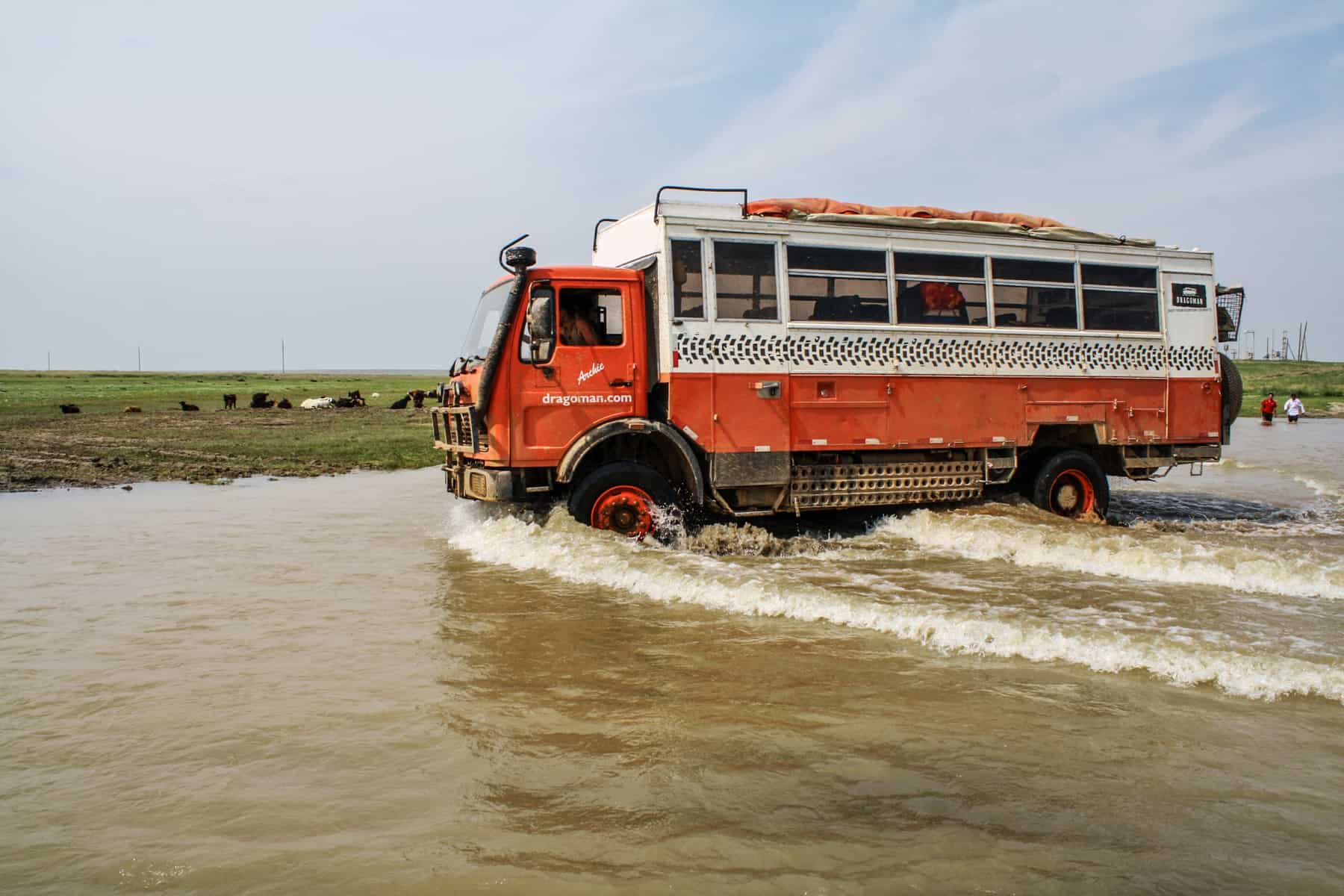
Overlanding in Mongolia was a real adventure.
Although the drivers would jump out to check the road, walking far ahead to determine the best track to take or check waterlogged areas (often by getting in the water) to limit the truck’s chances of getting bogged. We often stopped to help locals whose cars were stuck, knowing that karma would need to be returned one day.
The Realities of Rural Travel in Mongolia
“Ok, guys, you have to get off. It’s not looking good.” This phrase, accompanied by the engine’s low hum and strain as it finally gave up, became a regular occurrence during the three weeks I spent in Mongolia. Getting dirty in Mongolia is a given, but I never thought on my travels that I would push a truck out of thick, stodgy mud, build a road complete with a dam or wade knee-deep through a river to get to the other side.
In Mongolia, aside from the small handful of roads available, you will take the path less travelled, one that hasn’t been used for days or worn in by other vehicles for an easy pass. You could call it bad luck, or you could call it a reality, but travel comes with its challenges and getting stuck in Mongolia is by far the most common. While I wasn’t expecting substantial bogging incidents on this trip, I began to embrace them when they did happen. After all, the locals have to face these situations regularly. It became a part of what Mongolia is and what it means to cross her lands.
The drivers of the truck were responsible for assessing each situation when it arose. They were the first to get dirty, walk through the water and determine the outcome. At times it put you on edge, wondering how long you would be stuck somewhere with no one passing by for hours. At other times it merely meant us having to walk a short distance to lighten the truck.
Either way, the result was a massive whoop and roar for our truck, Archie, when he made it through. It felt good, and we then knew the next stage of the journey could begin. These are the times I’ll always remember.
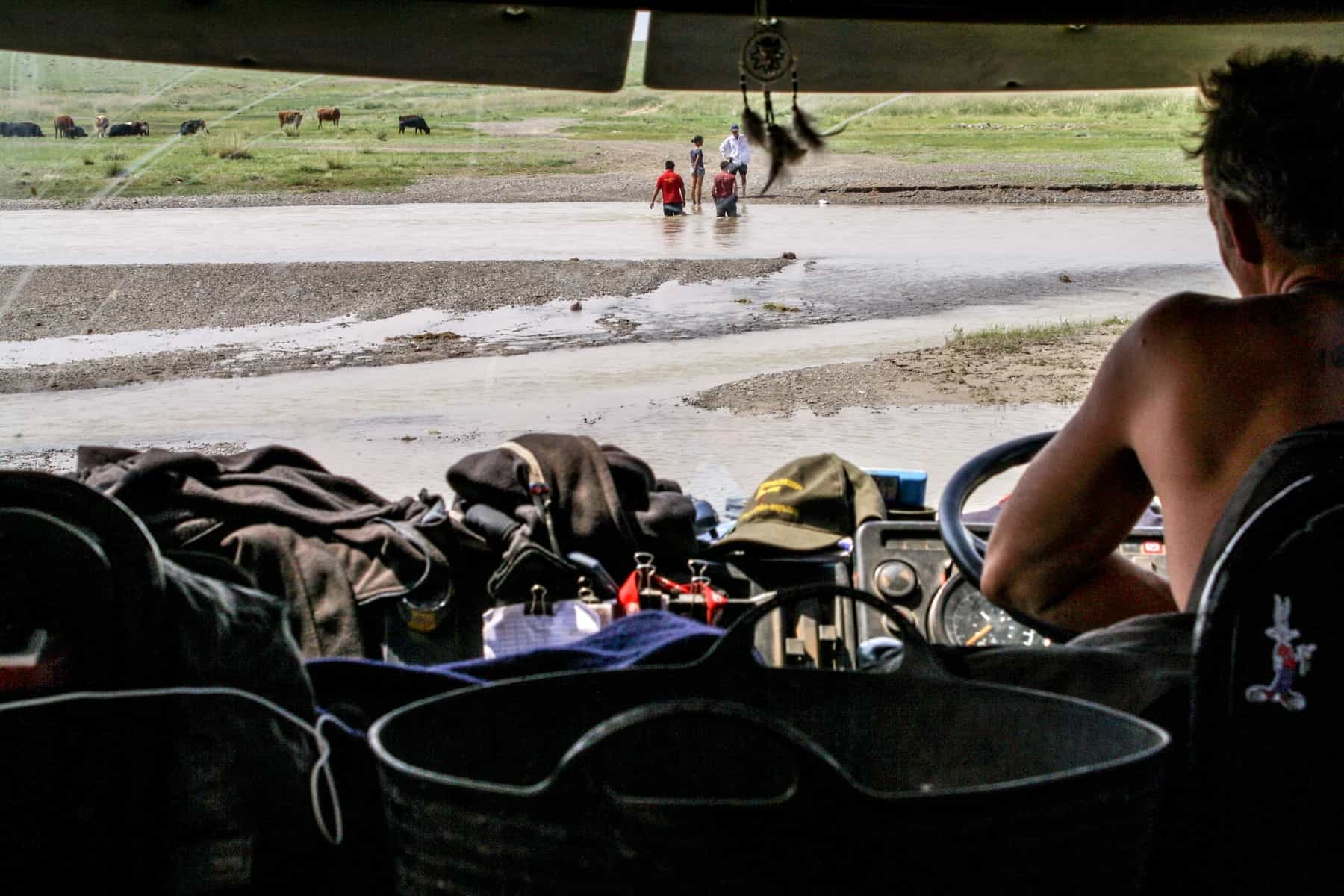
Our group helps find a track in the water for the truck to pass in Mongolia.
It had been raining on and off for a few days, mainly in short spurts in the evenings, and we were bumping along the wet dirt tracks just fine. When the truck stopped, and we saw that two pools of water had filled two road tracks, we knew a bogging incident was imminent. The drivers walked, pondered and walked through the water. Could we drive through it without getting stuck?
The usual scenario rested on two possibilities – drive through it or find hard enough ground around it. Except that this time it was different. We were told: “We need to empty this road of water and then let the ground dry out so we can cross over it.”
Cue the mad dash to empty our camping gear to find our plastic washing-up bowls and any other form of a plastic container to begin the removal process. The ladies rolled up their shorts to get right in there and scoop out the water as the men started digging to create a road. Everyone built a dam by hand on each side of the tyre track grooves so that the emptied water wouldn’t flow back in.
It was hard work, but we became a team, a great team. The sun was shining that day which meant we only had to wait a couple of hours while the heat dried out our creation. We ate, we played, we sang, and we marvelled at what resourceful people we were. It was a scary moment when Archie made his move to cross our road (our beautifully crafted highway that could be crushed in seconds and need rebuilding), but he made it in one unbeaten run, and our handmade route was left to the land and in nature’s control.
Happening upon grassy, muddy areas is sporadic. You can never tell exactly how hard the ground is beneath it. After bouts of rain, the ground softens, and even though there were times when the truck had to work a little harder, it made it through.
We had just had a fantastic afternoon checking out a local Nadaam festival and were in high spirits, which we needed knowing that we would be driving for the rest of the day. Except we didn’t – we were soon stuck in thick, sticky mud, and no amount of pushing and revving was going to change it.
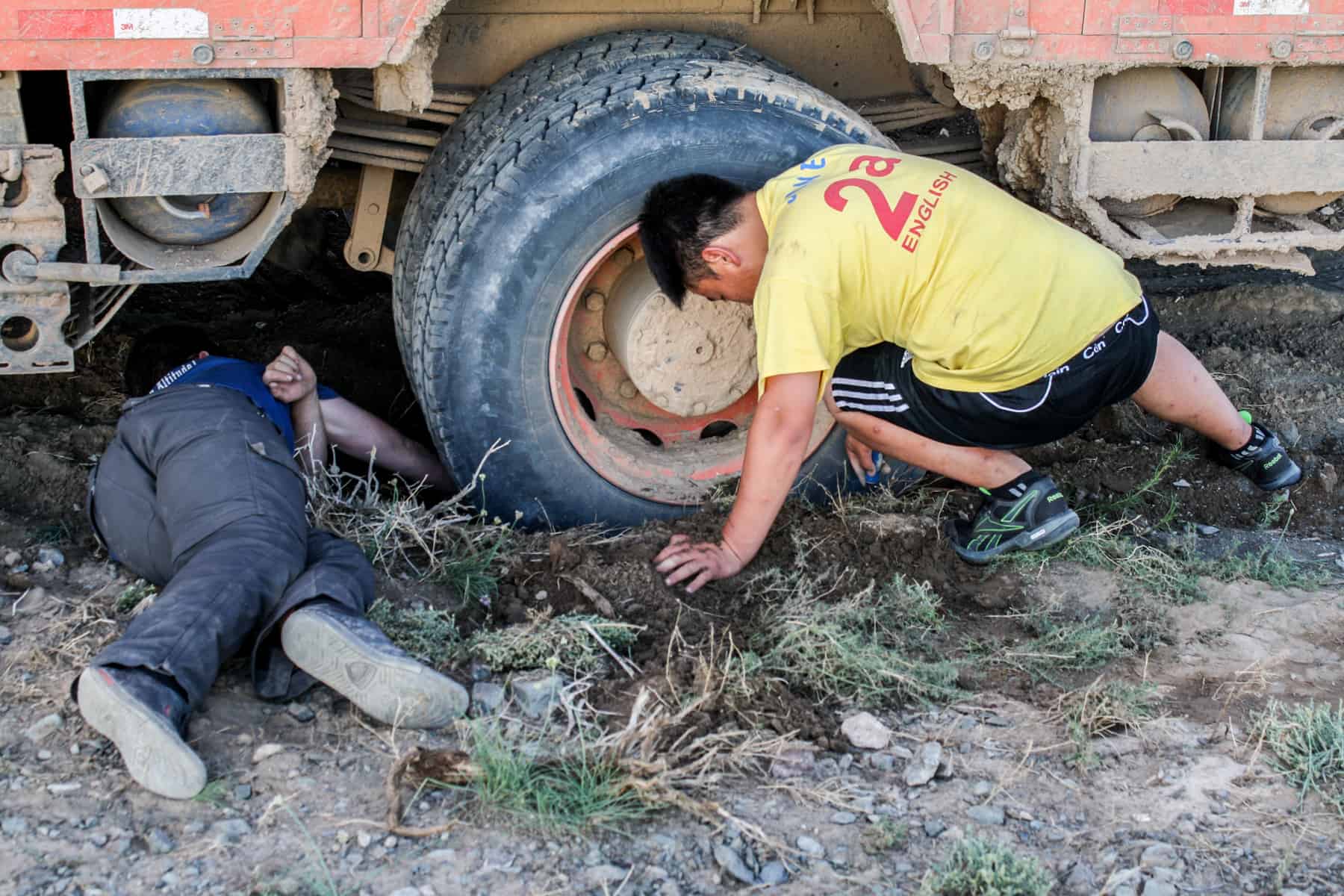
Digging out the truck wheels from the deep, wet mud in Mongolia
Our Mongolian guide walked to the nearest ger to get help, and the locals later returned on a motorbike to check out the situation. The whole family came out – we regularly became a source of fascination or amusement en route through the country. However, they kindly decided to use their big, industrial tractor to help pull the truck out of the mud – that too got stuck.
With two vehicles out of action and night starting to fall, we decided to set up camp on a drier patch of land nearby, and the drivers worked relentlessly with the locals throughout the evening. We got bogged at 5 pm, and it took until midnight for the truck to be pulled from sludge. It was a day wasted, but another example of how unpredictable travelling here can be.
When the truck stops dead at a deep area of water, you know the situation isn’t going to be resolved quickly. Can a truck this size pass through a river without sinking or getting stuck? Although we enjoyed paddling in the freshwater, we didn’t know whether we could have to completely re-route to get around it and lose more time.
The conclusion was that there was a distinct lack of knowledge about alternative roads around the river, and somehow we would have to find a way to get through it. With a small truck already stuck right in the middle, it was a scary prospect.
The drivers identified the most shallow and hard ground area in the water to pass, although we couldn’t be on the truck, unfortunately. You can imagine the chaos – a group of locals trying to rescue their vehicle and 20 non-locals trying to navigate through the water, knee-deep and screeching, scared of falling in.
My heart skipped a beat watching our truck splash through the water and wondering whether it would stop dead in its tracks and slowly swim in a sea of mud, taking all our belongings with it. But Archie made it, and this time, he got the biggest cheer. And a giant sigh of relief.
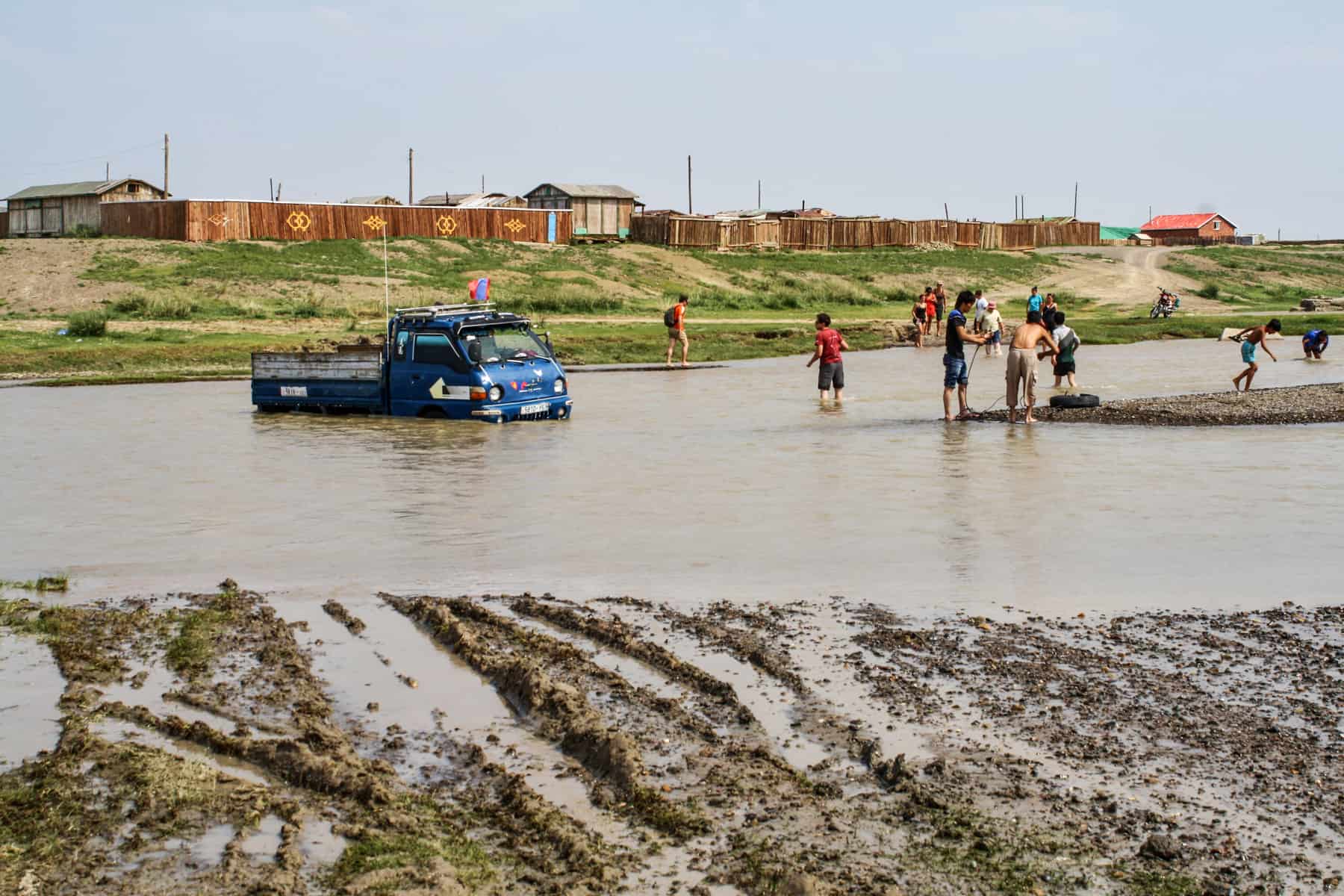
Typical river crossings in Mongolia and helping out locals who were also stuck
With unpredictable weather conditions, a challenging landscape to navigate and a trip mostly comprised of wild camping, packing for Mongolia requires some planning. In short, you need to factor in the following:
- Items of clothing that you don’t mind getting dirty and wholly ruined.
- Clothing layers for the constant switch of hot and cold climates – thermals to moisture-wicking and waterproof items.
- Sun protection and bug spray for mosquitos and sandflies.
- All medications you need as you’ll often be far from any significant stores or aid.
- Snacks from home as the food variation can get very repetitive.
For a more extensive overview, read my full Mongolia Packing List .
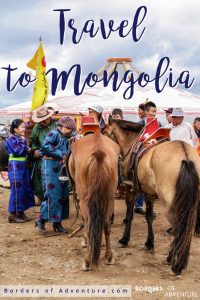
About Becki
Becki Enright is a British Travel Press Award-winning writer whose work focuses on changing perceptions about misunderstood aspects of destinations. Her writing combines storytelling with insight into the social, historical, political and economic factors that shape the country or place in relation to tourism. Becki has appeared live on Sky News and CNN and has contributed to high profile media including National Geographic, Time.com, Guardian online, New York Times, Grazia and Buzzfeed.
- Article Archives
- Work with me
- Privacy Policy

17 things to know before traveling to Mongolia

Aug 20, 2023 • 6 min read

Use these tips on health, safety and etiquette to plan your trip to Mongolia © Henn Photography / Getty Images
A land defined by boundless steppes, blue skies and roving nomads, Mongolia is perfectly set up for adventure and cultural immersion. Memorable experiences are a given, but travel in the world’s least-densely-populated country comes with its own challenges, so it pays to level-up on your Mongolia knowledge before you come.
On my own Mongolia adventures, I’ve wild-camped in a lightning storm; got queasy on fermented horse milk; broken down multiple times on epic drives ; had my pocket picked; crashed a Kazakh wedding; been thrown from two horses; and – perhaps my biggest faux pas – tried to cross part of the Gobi desert in a Toyota Prius. (Spoiler: I got stuck!)
Experience is the mother of wisdom, so here are some tips to help you make fewer mistakes on your own trip. However you choose to explore this fascinating country, remember that Mongolians are famously hospitable and predisposed to help strangers in need – even if things do go wrong, someone will eventually put you back on the right track.

1. Organize your tour well before you travel
Mongolia’s travel season is fleeting, stretching from late May to late August, so the best drivers, guides and vehicles are soon snaffled up. In the past, it was possible to rock up to Ulaanbaatar in summer and ask around at guesthouses to find space on a tour, but with the suspension of the Trans-Mongolian Railway, fewer travelers are passing through. Booking tours ahead is the way to go.
2. Don’t be too ambitious with your Mongolia itinerary
A common mistake is to try to see too much of Mongolia in one go, which can turn your trip into a wearisome, bone-rattling driving safari. It’s better to focus on just one area of the country, or schedule a stop of at least two nights in each destination so you can slow down and enjoy the majesty and serenity of the Mongolian landscape.
3. Book domestic travel tickets through local Mongolian agencies
Schedules for domestic flights and rail travel often change at the last minute. If you book through a local travel agent in Mongolia, they’ll be able to sort you out if your flight is canceled or delayed. If you miss a connection or are running late, a good tour operator might even be able to hold the plane for you for an hour or so.

4. If you plan to drive yourself, avoid July and August
The summer travel season from July to August coincides with the time when the grassy tracks of the steppe become waterlogged and the risk of getting stuck rises exponentially. If you intend to drive yourself, it’s better to come in the shoulder season in June or September for firmer ground. If you come at the height of summer, stick to the paved roads that fan outwards from the capital, or hire a car and a local driver who knows the local driving conditions.
5. Download podcasts and audiobooks for those long road trips
Mongolia is three times the size of France , and most roads are bumpy tracks, which translates to low average speeds even in a modern 4WD. Expect to spend hours bouncing along through vast, unchanging landscapes – beautiful but somewhat repetitive. This terrain is crying out for a good soundtrack; preload your audio player with good tunes or a selection of audiobooks or podcasts to help the miles pass.
6. Bring sanitary supplies and medication
While you can pick up most health essentials in the capital, once you’re out on the steppe you’ll find that personal sanitary supplies and medication are much harder to find. Make space in your pack and come prepared with everything you need.
7. Spice up your mutton with condiments
Ulaanbaatar has a buzzing dining scene, but out in the wilds, you’ll subsist mostly on mutton dumplings (buuz) , fried mutton pancakes (khuushuur) , mutton with pasta chunks (tsuivan) , or just plain boiled mutton (makh) . On a long expedition this can get boring, so remember to pack a bottle of sriracha, horseradish, gochujang, piri-piri sauce, or any other condiment that you like to use to zhush up your food.
8. Boil or purify water from streams and lakes
Rural Mongolia may look pristine, but even crystal clear water can contain microbes, contaminants or impurities. Boiling water for at least one minute can kill most harmful microorganisms, or you can use water purification tablets or a portable filtration system to cut down on energy use.
9. Pack camping gear to save money (and if heading out west)
In Mongolia’s most popular destinations, you can stay overnight in fixed ger (yurt) camps set up for tourists, but in remote western areas such as Bayan-Ölgii province, it’s a good idea to carry your own tent and camping gear, as ger camps are few and far between. Ulaanbaatar is full of shops selling outdoor equipment, in case you didn’t bring your own gear from home.
10. Bring gifts when visiting nomad families
It’s customary to bring something for your hosts when staying with local people in Mongolia. Popular gifts include food, candies, cigarettes and bottles of alcohol. Taking along souvenirs or photographs from your own country is another great way to foster cultural exchange.
11. Climb a hill to get a mobile phone signal
In recent years, cell phone coverage in Mongolia has become much more widespread, with fewer dead zones, though there are still some off-grid spots. If you’re in the countryside and don’t have a signal, usually all you need to do is climb the nearest hill and you’ll be back online.
12. Think twice about riding that horse
Falling off a horse is one of the most common accidents to befall foreigners in Mongolia. If you are keen to get in the saddle, make sure your travel insurance covers it, and consider getting some practice before you leave home. Be extra careful in remote areas such as the Gobi , as horses tend to be more skittish, often a result of mixing different herds to make up the numbers for the tourist season.

13. Observe ger (yurt) etiquette
There are special rules for staying in Mongolia’s most famous form of accommodation. Inside a ger , it’s polite to wait until you’re seated and have been served tea before engaging in conversation with your hosts. It’s also disrespectful to throw trash into the central stove; instead, place it in front and your host will dispose of it.
14. Be vigilant when walking around central Ulaanbaatar
While Mongolia is generally a safe place to travel, tourists have been known to get robbed in Ulaanbaatar. Back in 2012, I had my wallet picked from my back pocket outside the Ulaanbaatar Department Store – a rookie mistake! Also take extra care when crossing the street – Ulaanbaatar is choked with cars and pedestrians get no special treatment from motorists.
15. Use official taxis after dark
In Ulaanbaatar there are two types of taxis – official taxis and the unofficial kind, essentially regular cars prowling the streets for fares. While unlicensed cabs are generally safe by day, you should stick to official taxis at night. Two useful taxi apps are UBCab and ABA taxi Mongolia , each with their own registered drivers.
16. Use what3words to find places and points of interest
Mongolia has adopted the popular what3words navigation system, where locations are mapped using unique combinations of three words. This makes it easier to locate sites and attractions in a country with few named roads and landmarks. The current edition of the Lonely Planet Mongolia guidebook lists what3words locations next to every point of interest.
17. Get a GPS tracker device
The vehicle version of the hikers’ GPS device, a GPS tracker will provide an extra level of safety when adventuring into the great Mongolian emptiness. If you drive with a tracker, any tour company or support office in Ulaanbaatar can locate your whereabouts if you get lost or your vehicle runs into difficulties.
Explore related stories

Tips & Advice
Sep 17, 2024 • 18 min read
Visitors to Europe are bowled over by its natural beauty, epic history, rich culture and dazzling diversity. Here are the best places to visit.

Sep 10, 2024 • 8 min read

Sep 9, 2024 • 5 min read

Sep 9, 2024 • 8 min read

Sep 9, 2024 • 4 min read

Aug 16, 2024 • 9 min read

Jul 31, 2024 • 7 min read

Jul 31, 2024 • 5 min read

Jul 25, 2024 • 4 min read

Jul 8, 2024 • 8 min read
- Car Rentals
- Airport Transfers
- Attractions & Tours
- Flight + Hotel
- Destinations
- Trip.com Rewards
Discover the Untamed Beauty of Mongolia: Trip to Mongolia Cost 2024

by Trip.com
August 1, 2023
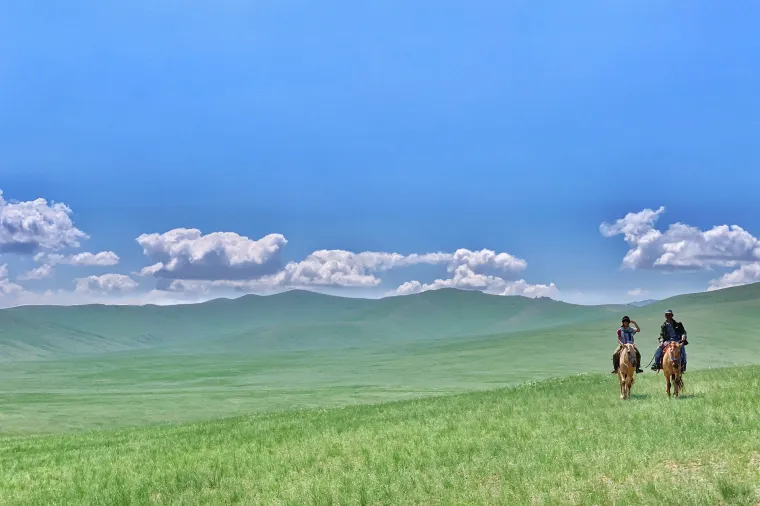
Welcome to Mongolia! A land of breathtaking landscapes, rich cultural heritage, and unforgettable adventures. Planning a trip to Mongolia can be an exciting yet daunting task, especially when it comes to budgeting. That's why we're here to help! In this article, we'll provide you with the best tips for saving money without sacrificing quality during your trip to Mongolia. From finding affordable accommodations and delicious local cuisine to navigating the transportation system and exploring the country's top attractions, we've got you covered. So, let's dive into the trip to Mongolia cost and discover how you can make the most of your journey without breaking the bank.
When it comes to the cost of a trip to Mongolia, it's essential to consider various factors. Flights to Mongolia can range from approximately $600 to $1,500 for a round-trip ticket, depending on the season and departure location. Accommodation costs vary as well, with budget hotels or hostels starting at around $15 per night and luxury hotels reaching up to $200 per night. The country's public transportation system is relatively extensive and efficient, with the cost of a one-way subway or train ticket ranging from $0.20 to $1.50. As for food, you can enjoy a meal at a budget restaurant for around $5 per person or indulge in a mid-range restaurant for approximately $15 per person.
For budget travelers, planning ahead and researching activities and costs is crucial. On average, a budget traveler can expect to spend around $30 to $50 per day in Mongolia, including accommodation, meals, transportation, and sightseeing. However, keep in mind that prices may vary depending on your preferences and travel style. On the other hand, a mid-range traveler can anticipate spending approximately $80 to $120 per day, allowing for a bit more comfort and flexibility. Remember, creating a budget that works for you is key to enjoying a memorable trip to Mongolia without breaking the bank.
- How much does it cost for 2 nights and 3 days when traveling to Mongolia?
Are you dreaming of embarking on an unforgettable adventure in Mongolia? Exploring the vast steppes, experiencing the nomadic culture, and witnessing the breathtaking landscapes? Well, before you pack your bags and hop on a plane, it's essential to have an idea of how much your trip to Mongolia might cost. Keep in mind that the cost can vary depending on factors such as your travel style, choice of accommodation, transportation, and activities. Here's a rough estimate of the cost for a budget traveler:

Flights: Let's start with the most significant expense - flights. The cost of a round-trip ticket to Mongolia from major cities around the world can range from $800 to $1500, depending on the season and airline you choose.
Accommodation: When it comes to finding a place to rest your head, budget hotels in Mongolia can be quite affordable. You can expect to pay around $20 to $50 per night, depending on the location and amenities. For a 2-night stay, the total cost for accommodation would range from $40 to $100.
Transportation: Getting around Mongolia is an adventure in itself. For local transportation, such as subway or train tickets, you can expect to pay around $1 to $5 for a one-way trip. Over the course of 3 days, the total cost for transportation would range from $6 to $30.
Food and drinks: Mongolian cuisine is a delightful blend of flavors and influences. For budget travelers, meals at local restaurants can cost around $5 to $10 per meal. However, if you're looking to save even more, street food and convenience store meals can be as low as $2 to $5. As for drinks, prices can vary depending on the type and location. A bottle of water can cost around $1, while a local beer might set you back $2 to $4. For 3 days of food and drinks, you can expect to spend approximately $60 to $120.
Sightseeing and activities: Mongolia is a treasure trove of natural wonders and cultural landmarks. Many attractions are free or have a small entrance fee of around $2 to $5 per person. Some popular sights include the Gobi Desert, Terelj National Park, and the ancient city of Karakorum. If you're up for more adventurous activities like horseback riding or camel trekking, the cost can range from $50 to $100 per person. For 3 days of sightseeing and activities, the expected cost would be around $20 to $150.
So, for a budget traveler looking to experience Mongolia for 2 nights and 3 days, the total cost would range from approximately $126 to $400. Keep in mind that these are rough estimates, and actual costs may vary depending on your travel style, activities, and other expenses. Now that you have an idea of the trip to Mongolia cost, it's time to start planning your adventure of a lifetime!
- How much does it cost for flights when traveling to Mongolia?
Planning a trip to Mongolia? One of the first things you'll need to consider is the cost of flights. However, it's important to note that the cost can vary depending on several factors. These factors include your departure location, the time of year you plan to travel, the airline you choose, and the availability of tickets.
When it comes to the cost of flights to Mongolia, there is no one-size-fits-all answer. Prices can fluctuate greatly depending on the aforementioned factors. However, we can provide you with a general range of the cost in US dollars for both one-way and round-trip tickets from major cities around the world to Mongolia.
Let's start with the departure location. If you're flying from a major city like New York, London, or Sydney, you can expect the prices to be relatively higher compared to smaller cities. This is because major cities usually have more flight options and airlines competing for passengers.
Next, let's talk about the time of year. Like many popular travel destinations, Mongolia experiences peak and off-peak seasons. During the peak season, which is typically from June to August, prices tend to be higher due to increased demand. On the other hand, if you're flexible with your travel dates and can visit during the off-peak season, you may be able to find more affordable flights.
Now, let's dive into the different classes of tickets. First class and business class tickets are generally more expensive compared to economy class. However, the price difference can vary depending on the airline and the level of luxury offered.
So, how much can you expect to pay for flights to Mongolia? On average, one-way tickets from major cities can range from $500 to $1500 in economy class. Round-trip tickets, on the other hand, can range from $1000 to $3000. Keep in mind that these prices are just estimates and can change depending on the factors mentioned earlier.
It's also worth mentioning that flight prices can fluctuate throughout the year due to various factors such as promotions, sales, and changes in fuel prices. Therefore, it's always a good idea to keep an eye out for deals and discounts.
In conclusion, the cost of flights to Mongolia can vary depending on factors such as your departure location, time of year, airline, and availability. It's important to do your research and compare prices to find the best deal for your trip. Safe travels!
- How much does it cost for hotels when traveling to Mongolia?
Planning a trip to Mongolia? One of the key aspects to consider is the cost of accommodation. The price of hotels in this beautiful country can vary depending on several factors, such as location, season, and the type of accommodation you are looking for. Let's dive into the details and find out what you can expect.
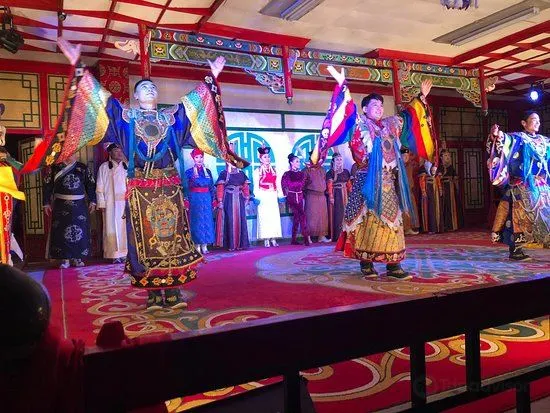
When it comes to hotels in major cities like Ulaanbaatar, Darkhan, and Erdenet, you can expect prices to be on the higher side. These bustling urban centers offer a wide range of accommodations to cater to different budgets and preferences. However, it's important to note that the cost of hotels in major cities tends to be more expensive compared to smaller cities or rural areas.
Now, let's talk numbers. In major cities, the average cost range of a mid-range hotel room per night can be anywhere between $80 and $150. If you're looking for a more luxurious experience, be prepared to spend around $200 to $400 per night for a luxury hotel room.
On the other hand, if you're planning to explore the lesser-known cities and smaller towns in Mongolia, you'll find that the hotel prices are relatively more affordable. These hidden gems offer a unique and authentic experience without breaking the bank.
In other cities and smaller towns, the average cost range of a mid-range hotel room per night can range from $50 to $100. If you're in the mood for some indulgence, luxury hotel rooms in these areas can cost you around $150 to $300 per night.
Remember, these prices are just a general guideline and can vary depending on the season and availability. It's always a good idea to do some research and compare prices before making your final decision.
So, whether you're planning to explore the vibrant streets of Ulaanbaatar or immerse yourself in the tranquility of smaller towns, there's a wide range of hotels in Mongolia to suit every traveler's budget and preferences.
- How much does it cost for food when traveling to Mongolia?
When embarking on a trip to Mongolia, one of the essential aspects to consider is the cost of food. Mongolia offers a diverse culinary landscape, ranging from traditional dishes to international cuisine. However, the price of food and dining can vary widely depending on several factors, such as the type of food, the restaurant's location, and the level of formality or luxury.

Let's dive into the cost of food in Mongolia, giving you a rough idea of what to expect during your gastronomic adventures. Please note that the following price ranges are in US dollars per meal and may vary slightly depending on the current exchange rates.
Street food or fast food: $2 - $5
Casual dining or local restaurants: $5 - $15
Mid-range restaurants: $15 - $30
High-end or luxury restaurants: $30 and above
These price ranges provide a general overview of what you can expect to pay for a meal in Mongolia. It's worth mentioning that the country also offers other affordable options for food. Convenience stores and supermarkets are scattered throughout the cities, providing a range of snacks and ingredients for those looking to save some money or enjoy a picnic in the beautiful Mongolian landscapes.
Now, let's address the question of tipping in Mongolia. While tipping is not traditionally customary in Mongolian culture, it has become more common in tourist areas and upscale establishments. If you receive exceptional service and wish to show your appreciation, a small tip would be welcomed. However, it is not expected or mandatory.
So, whether you're indulging in a plate of traditional Mongolian buuz or savoring the flavors of international cuisine, the cost of food in Mongolia can cater to various budgets and preferences. Enjoy exploring the culinary delights this captivating country has to offer!
- How much does it cost for souvenirs when traveling to Mongolia?
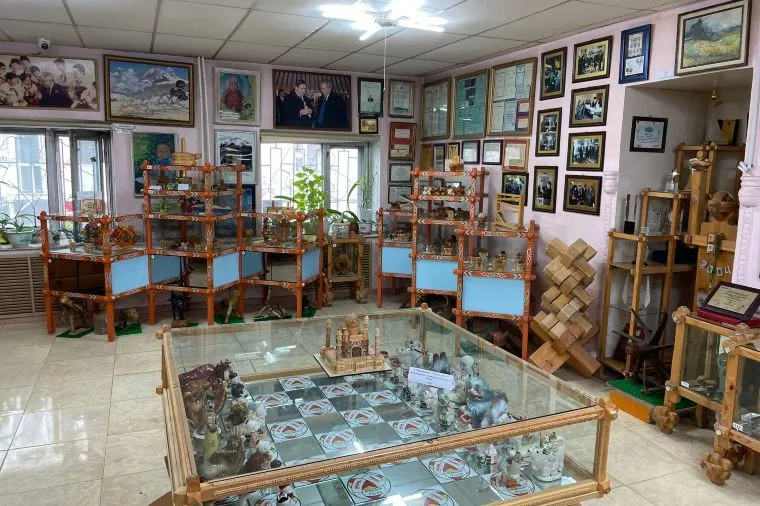
Well, let me tell you, the cost of souvenirs in Mongolia can vary as much as the vast landscapes of this beautiful country. Whether you're looking for a traditional Mongolian hat, a handcrafted piece of jewelry, a intricately painted Thangka, or a miniature yurt, you'll find a wide range of prices depending on where you shop and the quality of the item. It's like exploring the Gobi Desert - you never know what treasures you'll stumble upon!
Let's dive into some examples of popular souvenirs and their price range in good old US dollars. A traditional Mongolian hat, known as a "deel," can cost anywhere from $20 to $100, depending on the materials used and the level of craftsmanship. If you're in the market for some exquisite jewelry, a silver pendant with intricate Mongolian designs can be found for around $50 to $200. For those art enthusiasts, a Thangka, a traditional Tibetan Buddhist painting, can range from $100 to $500, depending on the size and level of detail.
Now, here's the interesting part. While many souvenir shops in tourist areas have fixed prices, like the sturdy Mongolian horses, there may be room for negotiation in other types of stores, such as flea markets or antique shops. So, if you're feeling adventurous and want to test your bargaining skills, these are the places to go. Just imagine yourself haggling over the price of a beautiful handwoven rug or a vintage Mongolian artifact - it's like being in a scene from a nomadic fairytale!
So, to sum it all up, the cost of souvenirs in Mongolia is as diverse as the country itself. From the bustling markets of Ulaanbaatar to the remote villages of the Mongolian steppe, you'll find an array of unique treasures to bring back home. Just remember to keep an eye out for those hidden gems and don't be afraid to embrace your inner negotiator. Happy souvenir hunting on your trip to Mongolia!
- How much does it cost for transportation when traveling to Mongolia?
Planning a trip to Mongolia? Well, buckle up and get ready to explore the vast landscapes and rich cultural heritage of this beautiful country. But before you embark on your adventure, it's essential to know how much transportation will cost you. Let's dive into the details!

The cost of transportation in Mongolia can vary depending on the mode of transportation and the distance you plan to travel. Whether you prefer the comfort of a train, the convenience of a subway, the affordability of a bus, or the flexibility of a rental car, there are options to suit every traveler's needs.
Starting with trains, the cost can range from $10 to $50 for shorter distances, while longer journeys may cost anywhere between $50 and $100. The subway system, on the other hand, offers a more budget-friendly option, with fares ranging from $0.50 to $2 per trip.
If you prefer the simplicity of buses, you'll be pleased to know that they are a cost-effective way to get around Mongolia. Bus fares typically range from $1 to $10, depending on the distance traveled. Taxis are also readily available, and a typical fare within the city center can cost around $3 to $5.
For those who crave the freedom to explore at their own pace, renting a car is a popular choice. Rental car prices in Mongolia can vary depending on the type of vehicle and rental duration. On average, expect to pay around $30 to $70 per day for a standard car rental.
Now, let's talk about transportation passes and discount tickets. Mongolia does offer transportation passes and discount options for visitors, which can be a great value if you plan to do a lot of traveling in a short period. For example, the "Mongolia Explorer Pass" allows unlimited travel on trains, subways, and buses for a specified duration, starting from $50 for a week.
So, if you're looking to explore the vast landscapes and vibrant culture of Mongolia, keep in mind that transportation costs can vary depending on your chosen mode of travel and the distance covered. Consider your options wisely, and don't forget to check out the available transportation passes and discount tickets to make the most of your trip!
- How much does it cost for sightseeing when traveling to Mongolia?
Planning a trip to Mongolia? Wondering how much it would cost to explore the breathtaking sights this country has to offer? Well, the cost of sightseeing in Mongolia can vary widely depending on various factors such as the location, attraction, and activity you choose.
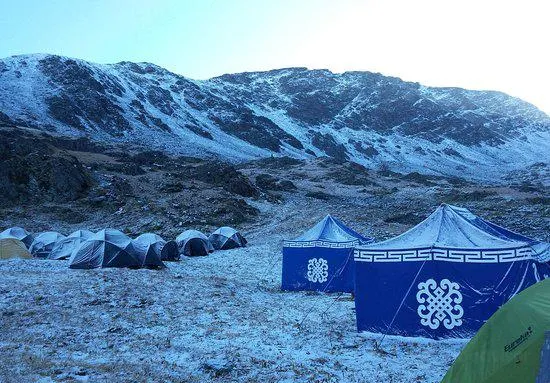
Let's dive into the details and give you an idea of the cost ranges for popular tourist attractions in Mongolia:
- Gobi Desert: A trip to the mesmerizing Gobi Desert can cost you anywhere between $200 to $500, depending on the duration and services included.
- Khuvsgul Lake: This pristine lake offers stunning views and various activities. The cost for a visit to Khuvsgul Lake can range from $100 to $300.
- Terelj National Park: Known for its breathtaking landscapes, Terelj National Park attracts many visitors. The cost for exploring this natural wonder can be around $50 to $150.
- Orkhon Valley: Discover the historical and cultural significance of Orkhon Valley with a cost ranging from $100 to $250.
- Ulaanbaatar City Tour: Explore the vibrant capital city of Mongolia with a guided tour that can cost you approximately $30 to $80.
- Flaming Cliffs: Uncover the secrets of the ancient dinosaur fossils at the Flaming Cliffs. The cost for a visit to this unique attraction can be around $50 to $150.
- Elsen Tasarkhai Sand Dunes: Experience the beauty of the desert and enjoy camel riding at Elsen Tasarkhai Sand Dunes. The cost for this adventure can range from $50 to $100.
- Hustai National Park: Witness the majestic wild horses, known as Przewalski's horses, at Hustai National Park. The cost for a visit to this natural reserve can be around $30 to $70.
While these popular tourist attractions offer incredible experiences, it's worth mentioning that there are also many free or low-cost sightseeing options in Mongolia. You can explore the bustling local markets, visit ancient monasteries, or simply take a stroll through the picturesque countryside without spending a fortune.
So, whether you're on a budget or ready to splurge, Mongolia has something to offer for every traveler. Plan your trip wisely, consider your preferences, and get ready to embark on an unforgettable adventure in this enchanting land!
- How much does it cost for Wi-Fi & communication when traveling to Mongolia?
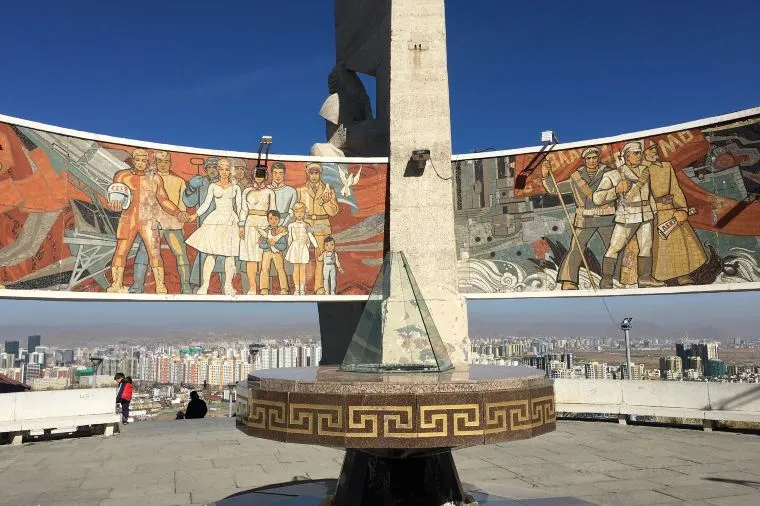
When planning a trip to Mongolia, it's essential to consider the cost of Wi-Fi and communication to stay connected while exploring this captivating country. The options for accessing Wi-Fi in Mongolia are diverse, catering to different needs and budgets. Rental Wi-Fi routers are available through various companies, offering flexible plans depending on your data requirements. Prices can range from $5 to $15 per day, ensuring you can stay connected wherever your adventures take you. Another popular option is purchasing a SIM card, allowing you to use your own device and enjoy local data rates. The cost of a SIM card in Mongolia varies depending on the data plan and provider you choose. Prices typically range from $10 to $30, providing you with ample data to navigate Mongolia's vast landscapes and share your experiences with loved ones back home. For budget-conscious travelers, free Wi-Fi hotspots are also available in certain areas. Many hotels and accommodations offer complimentary Wi-Fi for guests, so it's worth checking before booking your stay. Additionally, some smartphone apps, such as "Wi-Fi Finder" and "Free Wi-Fi Map," provide access to free Wi-Fi hotspots throughout Mongolia, ensuring you can stay connected without breaking the bank. It's important to note that the cost of Wi-Fi in Mongolia can vary depending on the method of access and the data plan you choose. However, with the multitude of options available, travelers can find a suitable solution to stay connected while immersing themselves in Mongolia's breathtaking landscapes and rich cultural heritage. So, whether you're capturing the beauty of the Gobi Desert or exploring the vibrant streets of Ulaanbaatar, staying connected is now easier than ever.
- How much does it cost for visa when traveling to Mongolia?
Planning a trip to Mongolia? You might be wondering about the cost of obtaining a visa. Well, fret not! We've got you covered with all the information you need. When it comes to visa application fees, the cost can vary depending on your country of citizenship and the type of passport application. For example, citizens from the United States can expect to pay around $160 for a single-entry visa, while a multiple-entry visa can cost up to $290. However, it's important to note that some countries enjoy visa-free access to Mongolia, so you might not need to worry about the cost at all. But wait, there's more! It's crucial to keep in mind that visa application fees are not the only expenses you might encounter. Some countries may require additional fees for visa applications or other travel documents. To stay on top of the latest information on passport and visa requirements and fees, it's always a good idea to check with your local embassy or consulate. Don't let unexpected costs dampen your travel plans, be prepared and enjoy your adventure to the fullest!
- How much does it cost for insurance when traveling to Mongolia?
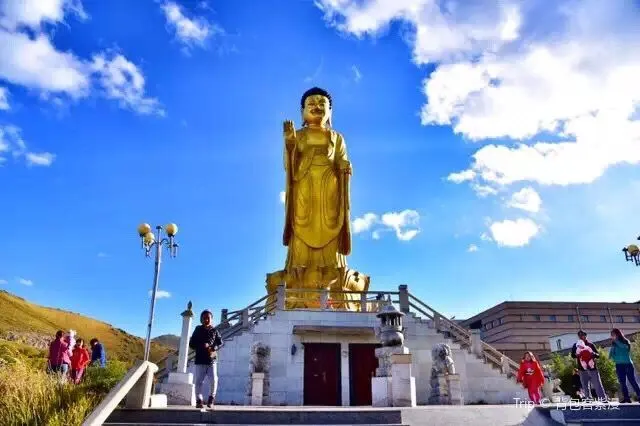
The cost of insurance for a trip to Mongolia can vary depending on several factors. These factors include your age, the duration of your trip, the type of coverage you require, and the insurance provider you choose. To give you a general idea, here are some guidelines for travel insurance costs:
For a single trip, the cost of travel insurance can range from around $50 to $200. This range is influenced by the coverage you select and the length of your stay in Mongolia. It's important to note that these prices are in US dollars.
If you are a frequent traveler and plan to visit Mongolia multiple times within a year, an annual travel insurance policy might be a more cost-effective option. The cost of an annual policy typically ranges from $200 to $500, depending on the coverage and duration of your trips.
For those seeking comprehensive coverage, the cost of travel insurance can be higher. A comprehensive policy provides extensive coverage for various aspects of your trip, such as trip cancellation, medical expenses, and baggage loss. The cost of a comprehensive policy for a trip to Mongolia can range from $100 to $500, depending on the coverage limits and duration of your stay.
When choosing a travel insurance policy, it's essential to compare options from different providers. This allows you to find the coverage that best suits your needs and budget. Make sure to carefully read the policy details and understand what is covered, as well as any deductibles or exclusions. Additionally, some credit cards and travel booking sites offer travel insurance as a benefit or add-on, so exploring those options is also worthwhile.
Comparing policies and understanding the coverage details will help you make an informed decision about your travel insurance for your trip to Mongolia. Remember, it's always better to be prepared and protected during your travels.
- How much does it cost for family, couples or single when traveling to Mongolia?
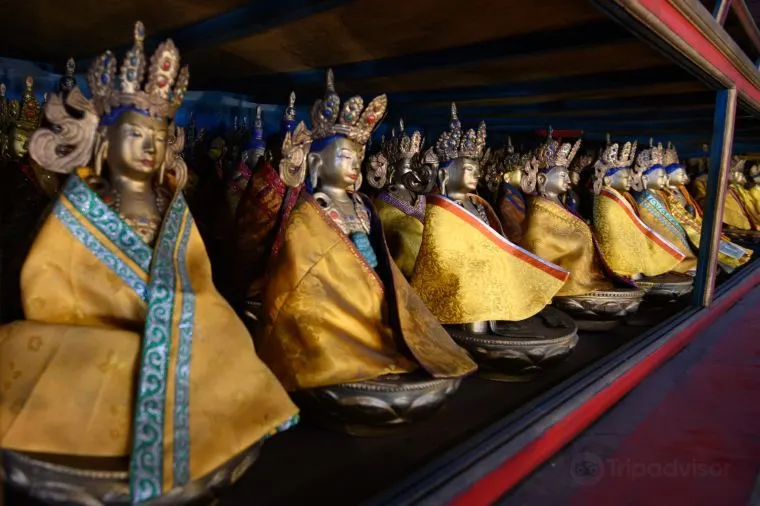
The cost of traveling to the country can vary widely depending on a number of factors, such as the length of the trip, the type of accommodation, the level of luxury, the activities planned, and the number of travelers. Here's the lowdown on the estimated costs for a trip to the country:
Airfare: The cost of airfare to the country can vary depending on the departure city and the time of year. You can expect to shell out anywhere between a few hundred to several thousand dollars for a round-trip ticket from the United States to the country per person.
Accommodation: When it comes to accommodation, you have a range of options to choose from. If you're on a budget, you can find a decent hotel or hostel for as low as $20 per night. If you're looking for something a bit more comfortable, mid-range hotels, luxury hotels, and ryokans can cost you anywhere between $50 to $200 per night.
Food and drink: Mongolia offers a variety of cuisines to satisfy your taste buds. If you're looking to save some cash, you can grab a budget meal at a local restaurant for around $5 per person. For a more indulgent experience, a mid-range meal at a local restaurant can cost you around $15 per person.
Transportation: Getting around in Mongolia can be an adventure in itself. A single metro or train ticket can cost you around $1, while a long-distance bullet train ticket can set you back around $20. Don't forget to factor in the cost of taxis and car rentals, as they can add to your transportation expenses.
Overall, the cost of traveling to Mongolia can range from a few hundred to several thousand dollars per person, depending on your travel style and preferences. Whether you're traveling with your family, your significant other, or flying solo, you can expect to spend around $500 to $5000 for a memorable trip to this beautiful country.
- Methods to Save Money When Traveling to Mongolia
Planning a trip to Mongolia can be an exciting adventure, but it's essential to keep an eye on your budget. Fortunately, there are numerous ways to save money without compromising the quality of your experience. Here are some valuable tips to help you make the most of your trip to Mongolia without breaking the bank.
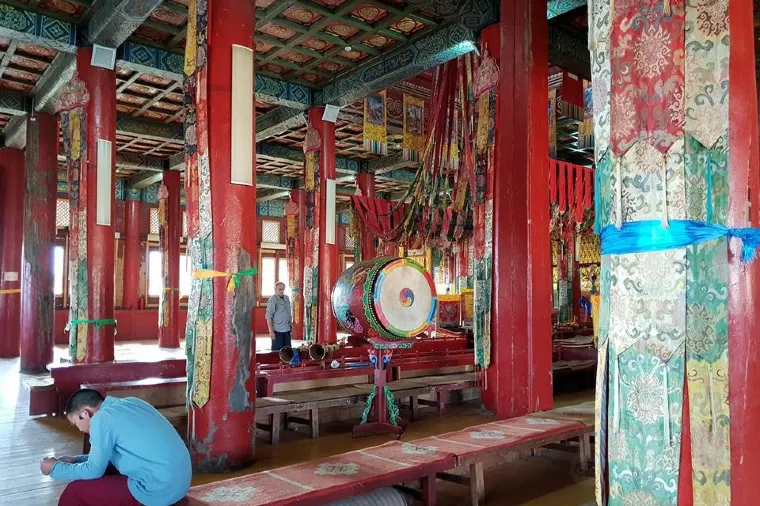
First and foremost, consider traveling during the shoulder season. This period, which falls between the peak and off-peak seasons, offers lower prices for accommodation, flights, and tourist activities. By avoiding the crowds, you not only save money but also get a chance to immerse yourself in the authentic Mongolian culture.
Another way to cut down on your trip to Mongolia cost is by opting for local transportation. Instead of relying solely on taxis or private transfers, try using public buses or shared taxis, known as "marshrutkas." These options are not only more affordable but also provide an opportunity to interact with locals and gain a deeper understanding of their way of life.
When it comes to accommodation, consider staying in guesthouses or yurts, which are traditional Mongolian tents. These options are not only budget-friendly but also offer a unique cultural experience. Additionally, you can save money on meals by trying local street food or visiting local markets where you can find fresh and affordable produce.
While exploring Mongolia, take advantage of the country's natural beauty and engage in outdoor activities. Hiking, horseback riding, and camping are popular and cost-effective ways to experience the stunning landscapes and connect with nature. Moreover, many national parks and attractions offer discounted or free entry for visitors, so be sure to research these opportunities in advance.
Lastly, be mindful of your spending habits and avoid unnecessary expenses. Set a daily budget for yourself and stick to it. Prioritize the activities and attractions that truly interest you, and skip those that don't align with your interests or budget. By being selective, you can make the most of your trip without overspending.
In conclusion, a trip to Mongolia doesn't have to be expensive. By planning ahead, considering alternative transportation and accommodation options, embracing local experiences, and being mindful of your spending, you can enjoy a memorable and budget-friendly adventure in this captivating country.
- Tips for Traveling to Mongolia
Are you ready to embark on an extraordinary adventure to the land of the blue sky? Well, look no further because we've got you covered with some essential tips for your trip to Mongolia. So, fasten your seatbelts and get ready for an unforgettable journey!
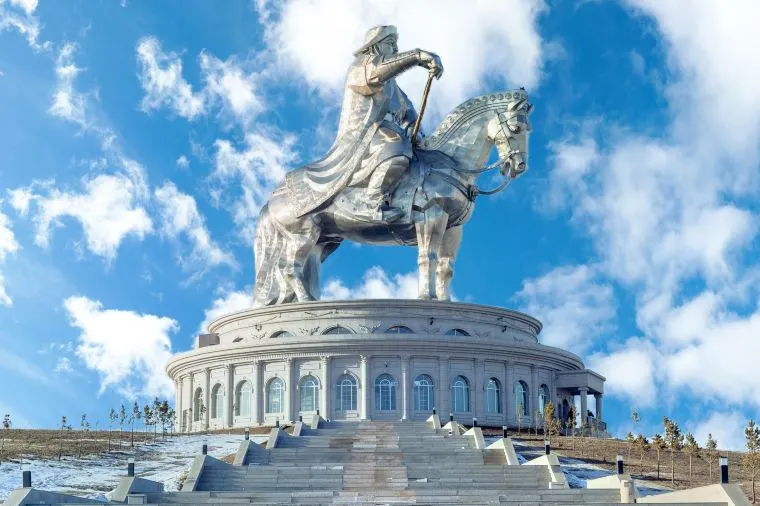
1. Pack like a pro: When traveling to Mongolia, it's crucial to pack smartly. Don't forget to bring layers of clothing, as the weather can be unpredictable. Oh, and don't leave behind your sturdy hiking boots, because you'll be exploring breathtaking landscapes!
2. Embrace the nomadic lifestyle: Mongolia is known for its nomadic culture, so why not immerse yourself in it? Stay in a traditional ger (yurt) and experience the hospitality of the locals. It's a unique opportunity to connect with nature and learn about their fascinating way of life.
3. Taste the flavors of Mongolia: Don't miss out on the chance to savor the delicious Mongolian cuisine. From hearty meat dishes like khorkhog (barbecue) to refreshing dairy products like airag (fermented mare's milk), your taste buds will be in for a treat!
4. Explore the Gobi Desert: A trip to Mongolia wouldn't be complete without a visit to the legendary Gobi Desert. Marvel at the vast sand dunes, encounter rare wildlife, and witness the stunning sunset over this magical landscape.
5. Ride like a Mongolian: Hop on a horse and experience the thrill of riding across the Mongolian steppe. It's an exhilarating way to explore the vastness of the country and feel like a true nomad.
6. Connect with the locals: Mongolians are known for their warm hospitality, so don't be shy to strike up a conversation. Learn a few basic phrases in Mongolian, and you'll be amazed at the genuine connections you can make.
7. Respect the environment: Mongolia's pristine nature is one of its greatest treasures. Be a responsible traveler by leaving no trace, respecting wildlife, and supporting sustainable tourism initiatives.
8. Capture the moments: Mongolia is a photographer's paradise, so make sure to bring your camera and capture the breathtaking landscapes, unique traditions, and vibrant culture. Each snapshot will be a cherished memory of your incredible journey.
So, dear adventurers, get ready to embark on a once-in-a-lifetime trip to Mongolia. Follow these tips, embrace the spirit of the nomads, and get ready for an unforgettable experience in the heart of Central Asia. Happy travels!
* All user reviews in this article have been translated by machine.
* The information above is subject to change at any time. For the latest information, please check the websites of hotels and attractions.
Trip to Mongolia Cost 2024
- Customer Support
- Service Guarantee
- More Service Info
- About Trip.com
- Terms & Conditions
- Privacy Statement
- About Trip.com Group
Other Services
- Investor Relations
- Affiliate Program
- List Your Property
- Become a Supplier

Mongolia Tours & Trips
- Choose from 100+ Mongolia tours
- 150+ verified reviews from TourRadar travelers
- 24/7 customer support
Table of contents
The best Mongolia tour packages
What people love about mongolia tours, most popular destinations in mongolia, travel mongolia your way, top operators in mongolia, best places to start your mongolia tour, discover mongolia tours for every budget.
- Mongolia tours for every group
Mongolia tours for everyone
Best time to visit mongolia.
Compiled by

Steff Mongolia travel expert at TourRadar
Essence of Mongolia - 5 Days
“I had an excellent trip. I had fun.” Lloyd Bucklen, traveled in May 2024
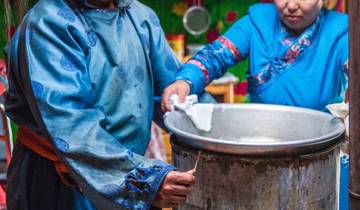
- In-depth Cultural
- Christmas & New Year
- Spot wild Takhi in Hustai National Park
- Hear monks chant at Erdene Zuu Monastery
- Hike to temple ruins in Khogno Khan reserve
Essence of Mongolia - 7 Days
“The activities were nicely spread out and were not back-to-back -- so we never felt that we had to be constantly rushing from place to place.” Ijechi Nazirah, traveled in July 2023

- Hike to the majestic Orkhon Waterfall
- Camel ride across Elsen Tasarkhai dunes
- Explore ancient Kharakhorum and Erdenezuu
Tsenkher Hot Spring 5D/4N
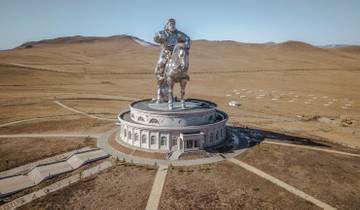
- Tour the grand Chinggis Statue
- Explore Erdenezuu Monastery and museum
- Experience a 13th-century camp lifestyle
Cultural Tour 6D/5N

- Cultural Photography
- See wild horses at Khustai National Park
- Explore Chinggis Khan Complex and Terelj Park
- Stay overnight in a traditional Mongolian ger
Customized 5 Days Ulaanbaatar Trip with Private Guide & Driver
“Mongolia is a lot different from what we have seen on the internet; its BETTER! There are beautiful national parks and landscapes that are surreal.” Andrew Nuss, traveled in April 2024
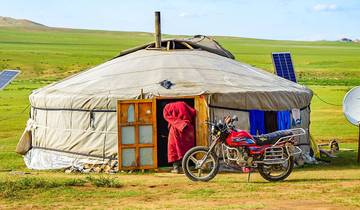
- Sightseeing
- Visit the imposing Genghis Khan Statue Complex
- Horseback ride through Terelj National Park
- Enjoy the 'Wonders of Mongolia' traditional show
I had an incredible time. The ger homestays were truly amazing, the people warm kind and welcoming and it was a raw homely setting of country life. I loved the long sencic drives of endless nature and beauty. My guide Shinebayer went above and beyond to make it memorable, from asking about airag, helping me to feed a baby sheep at sunset, letting me explore the sand dunes and showing me where to go for nice walks. He always made sure inwas good, fed well and not dehydrated. Communication and cultural exchange was enjoyed. Karakorum was a little bit of a let down compared to the rest of the tour being so so amazing. Around this day there were alot of gaps which you have to entertain yourself. The food at the hostel was not enjoyable. I ordered tofu ramen
We signed up for the 7-day "Essence of Mongolia" tour. Our tour guide, Shuree, and driver, Maga, were absolutely amazing. We appreciated the flexibility of the tour schedule -- the activities were nicely spread out and were not back-to-back -- so we never felt that we had to be constantly rushing from place to place. We also throughly enjoyed our experiences staying with the nomad families. The families were very warm and friendly, and it was nice to see how each family was slightly different from one another (some families were bigger, each family had different animals that they reared, etc). Shuree, our tour guide, was also incredibly attentive to our needs and interests over the course of the tour. For example, I had told her at some point that I liked the history of the Mongol Empire, so she took a lot of time and effort to go through all the exhibits with me when we were at the various museums (and also told me stories about the different Khans during our car rides). There were so many other wonderful examples like this. Overall, my husband and I had an amazing experience. The tour provided us glimpses into different parts of Mongolian history and culture, and really, the "Essence of Mongolia". Our guide and driver were always present and caring, and we always felt welcomed and well taken care of. Thank you, Tour Mongolia!
Mongolia is a lot different from what we have seen on the internet; its BETTER! There are beautiful national parks and landscapes that are surreal. Our guide, Miss Deema and our driver Eric took us to some the most breathtaking scenery one could imagine. Great photo opportunities abound! Both Hustai and Terelj national parks were different in their own way with unique geography and wildlife. Accommodation in the yurts (gers) was warm and comfortable and is highly recommended. As was the Bactrian camel ride! And the introduction to throat singing. Deema's knowledge of the country, its people, and its history was outstanding. As was Eric's driving skills. Both much appreciated. Overall this trip is a GREAT introduction to this great country and it's unique culture and people.
Central Mongolia
Discover the ideal tour package for you through Central Mongolia. On TourRadar you'll find trips starting from 3 days in length, and the longest tour is 15 days. The most popular month to go is July, which has the most tour departures.
Northern Mongolia
Discover the ideal tour package for you through Northern Mongolia. On TourRadar you'll find trips starting from 5 days in length, and the longest tour is 17 days. The most popular month to go is September, which has the most tour departures.
Fully Guided
Select from our extensive range of 124 fully guided tours to enjoy a worry-free experience through Mongolia with our expert guides leading the way.
Find the perfect tour for your family, catering to all ages with over 88 family tours available in Mongolia.
An Explorer tour in Mongolia promises thrilling adventures and diverse landscapes. Mongolia's vast and varied terrain offers great opportunities for hiking, biking, and discovering off-the-beaten-path destinations, ensuring an exhilarating and unforgettable journey.
Embark on a thrilling journey through Mongolia's vast landscapes. Traverse the Gobi Desert on camelback, hike through the lush Orkhon Valley, and camp under the starlit sky in a traditional ger. Experience nomadic culture first-hand and find your inner adventurer.
More travel styles:
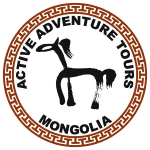
"A great way to experience the nomadic life of Mongolians.
Tour Mongolia is an expert in:
- Festival & Events

"Mongolia is a lot different from what we have seen on the internet; its BETTER! There are beautiful national parks and landscapes that are surreal. Our guide, Miss Deema and our driver Eric took us to some the most breathtaking scenery one could imagine. Great photo opportunities abound! Both Hustai and Terelj national parks were different in their own way with unique geography and wildlife. Accommodation in the yurts (gers) was warm and comfortable and is highly recommended. As was the Bactrian camel ride! And the introduction to throat singing. Deema's knowledge of the country, its people, and its history was outstanding. As was Eric's driving skills. Both much appreciated. Overall this trip is a GREAT introduction to this great country and it's unique culture and people.
Agate Travel is an expert in:
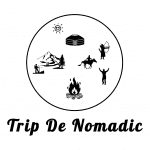
"Oh boy did I pick the wrong time to come to Mongolia lol, but as a Canadian I was okay with the cold. But Ink and the driver both made me feel comfortable and completely safe. The tour was great, and they even helped me add a side trip to see the Genghis Khan statue, thank you so much!
Trip De Nomadic is an expert in:
Choose the city in Mongolia you want your tour to start in:
Ulaanbaatar
Browse the best budget and luxury tours in Mongolia that will take you through unmissable places like Ulaanbaatar and Kharkhorin.
Starting from
Mongolia tours for every type of group
Who are you traveling with?
Explore Mongolia on a pre-planned itinerary and meet like-minded travelers
- Itineraries between 3 days and 22 days
- Starting from €150 per day
Small Group
Visit Mongolia with fewer travelers, ensuring more immersive activities
- Starting from €129 per day
Personalized
Customize your Mongolia itinerary to match your interests and pace
- Itineraries between 3 days and 21 days
Visit Mongolia with your own group or solo
Discover unforgettable adventures designed for all ages! Whether you're young or young at heart, these tours offer excitement and wonder for everyone.
- September 2024 popular 49 tours
- October 2024 48 tours
- November 2024 33 tours
- December 2024 popular 30 tours
- January 2025 28 tours
- February 2025 27 tours
- March 2025 27 tours
- April 2025 28 tours
- May 2025 popular 44 tours
- June 2025 59 tours
- July 2025 popular 62 tours
- August 2025 56 tours
Discover TourRadar
Mongolia Trips and Tours 2024/2025
Want to find yourself in the middle of nowhere? Mongolia is the destination for you. With only 1.7 people per square-kilometer, you’ll feel as if you have the vast sandy dunes, towering mountains and deep lakes all to yourself. Head to Ulaanbaatar , the nation’s capital, for city sightseeing tours before exploring local culture, wildlife and natural wonders in the rural Uvs and Töv provinces.
Showing 25 Trips in Mongolia with 50 Reviews
- Most Popular
- Lowest Price First
- Highest Price First
- Lowest Duration First
- Highest Duration First
- Highest Discount
Mongolia Tours — Highlights and Travel Tips

A tour of Mongolia is perfect for anyone who fancies themselves a nomad. With a population density of only 1.7 people per square-kilometer, Mongolia is uniquely empty, ideal for a little bit of self-discovery. The phenomenal country also has a geographical diversity unlike anywhere else on Earth, combining sandy desert dunes with high mountains and deep lakes - all of which can be enjoyed while soaking up 250 days of pure sunshine each year.
Tour Highlights
- Ride a horse in Gorkhi Terelj National Park
- Ride a camel in the Gobi, the fifth-largest desert in the world
- Sleep in a ger tent (or yurt), the traditional home of Mongolian nomads
- Find serenity at the Erdene Zuu Monastery in Kharkhorin
- Stroll through the meadows of Gorkhi-Terelj National Park
Travel Tips
- One of Mongolia’s top draws for tourists is the annual Naadam festival. This shouldn't-be-missed event is celebrated in mid-July and is a fantastic way to experience the country’s traditional clothing and dramatic sports competitions.
- Get ready for that windswept look. Mongolia is an incredibly windy country, so be sure to bring a windbreaker, something to protect your face (like a scarf), and balm for dry lips.
- If planning an overnight trip to the Gobi Desert during the summer, be sure to pack a variety of clothing and supplies for all temperatures. Expect very hot temperatures during the day, but cold winds at night.
- When camping, don't take your electricity for granted. Most ger camps rely on generators, and many only supply electricity during certain hours. Ask for hours upon arrival, and be sure to bring some battery-powered flashlights.
- Mongolians love visitors. If passing a nomadic family's ger on your travels, don't be shy - stop by for a chat. You'll often be offered a cup of milk tea and some pleasant conversation. Bring some gifts with you in anticipation of these visits.
Mongolia has seasonal weather so please do check up on the best time to visit Mongolia before planning your tour.
- Mongolia Tours for Senior Citizens
- Mongolia Solo Trips
- Mongolia Guided and Escorted Tours
- Mongolia Eco Tours
- Mongolia Small Group Tours
- Mongolia Group Tours
- Mongolia Tours for Young Adults
- Mongolia Family Tour Packages
- Mongolia Budget Tours
- Mongolia Travel Deals
- Mongolia Tailor-made Vacation Packages
- Mongolia Tour Operators
Popular Destinations
- Ulaanbaatar Tours
Popular Activities
- Cultural, religious and historic sites Tours
- Festivals and events Tours
- Local culture Tours
- Natural landmarks sightseeing Tours
Upcoming Departures
- Summer tours
- Spring tours
- May 2025 tours
- June 2025 tours
- July 2025 tours
- August 2025 tours
- September 2025 tours
Trips per Duration
- 15 days tours
Trending Travel Guides
- Great Mongolia Itineraries: How Many Days to Spend?
- Best Time to Visit Mongolia
We use cookies to analyze traffic and give you personalized content and ads. It's an essential part of giving you a great site experience. Click on the 'Accept' button if you agree with our use of tracking and analytical cookies. Please refer to our Cookie Policy for more information.

Wild Mongolia

Nomadic Mongolia

Mongolia Golden Eagle Festival

Mongolia: Steppes, Deserts & Nomads - Eagle Festival

Mongolian Panorama

Mongolia: Steppes, Deserts & Nomads

Journeys: Discover Mongolia

Mongolian Tavan Bogd Trek

Mongolia: Steppes, Deserts & Nomads - Naadam Festival

Mongolian Steppe Adventure

Mountain Biking Mongolia

Cycling in Mongolia

Naadam Adventure

Mongolia's Naadam Festival
- Budget Tours
- Luxury Tours
Mongolia Tour Package Reviews
Top luxury hotels in Mongolia

Kempinski Hotel Khan Palace

The Blue Sky Hotel and Tower
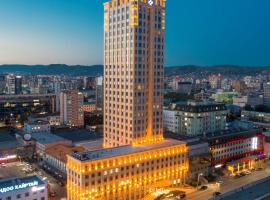
Best Western Premier Tuushin Hotel
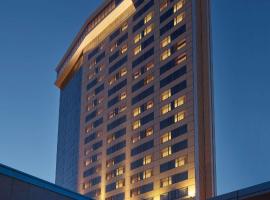
Shangri-La Ulaanbaatar
Mongolia - the estimated travel expenses for food, public transport, attractions entrance and accommodation., how much does a trip to mongolia cost.
Currency in Mongolia is Mongolian Tugrik
Mongolia prices guide., if you are travelling alone to mongolia, depending on your expectations, you will pay for an overnight stay from 14 usd (47,000 mnt) for a hostel to 116 usd (394,000 mnt) for a luxury hotel., the other daily costs you have to pay when travelling to mongolia are:.
- Food 7.00 USD (23,000 MNT)
- Meals in restaurants 7.00 USD (23,000 MNT)
- Bottled water 0.63 USD (2,100 MNT)
- Local transportation 0.59 USD (2,000 MNT)
- Entrance tickets 13 USD (44,000 MNT)
- Alcoholic beverages 4.00 USD (13,000 MNT)
As you can see - a stay for a few days in Mongolia can cost 101 USD (341,000 MNT) or 625 USD (2,124,000 MNT) , depending on whether you are a frugal tourist or you are planning to spend a luxurious holiday in Mongolia.
How much Mongolian Tugrik should I have for one week in Mongolia?
If you want to spend a week in Mongolia the cost of your stay will be:
- 235 USD (797,000 MNT) - a cheap stay for 7 days in Mongolia
- 309 USD (1,049,000 MNT) - a budget travel for 7 days in Mongolia
- 770 USD (2,615,000 MNT) for a one week of comfortable stay in Mongolia
- 1,400 USD (4,956,000 MNT) for a week of luxury holidays in Mongolia
How much money do I need per day to stay in Mongolia?
If you are travelling alone to Mongolia, 34 USD a day should be enough. If you choose a hotel for your stay in Mongolia, the price will rise to 44 USD. A couple will have to pay around 79 USD for one day in Mongolia. A family with two children should have 130 USD for one day stay in Mongolia.
How to visit Mongolia on a low budget? How to travel Mongolia cheaply? How to save money while travelling in Mongolia?
In order not to exceed reasonable expenses during a trip to Mongolia, which we estimate at 44 USD (149,000 MNT) for a one day, you must comply with the following rules:
- Choose to stay in a hostel (14 USD (47,000 MNT) ) or in a cheap hotel (19 USD (65,000 MNT) ).
- Use public transport. The price for a one-way ticket is 0.15 USD (500 MNT) and for a monthly pass 7.40 USD (25,000 MNT) .
- Make your own breakfast and own dinner. Daily shopping cost in the shop is around 7.00 USD (23,000 MNT) in Mongolia.
- Choose restaurants outside the city centre and close to tourist attractions. Meal in a cheap restaurant cost around 4.40 USD (15,000 MNT) in Mongolia. McMeal at McDonalds (or equivalent meal in other fastfood restaurant) costs approximately 4.40 USD (15,000 MNT) .
Car-related costs are mainly fuel, road tolls and parking fees. Of course, the price depends on the purpose of the journey and energy efficiency of a vehicle.
In Mongolia, you will pay for the fuel accordingly:
- Petrol price in Mongolia is around: 0.97 USD (3,200 MNT)
- Diesel fuel price in Mongolia is around: 0.92 USD (3,100 MNT)
- 1kg sausage: 20 USD (66,000 MNT)
- 0,5 kg bread: 0.79 USD (2,600 MNT)
- 10 eggs: 2.00 USD (6,800 MNT)
- 1kg cheese: 13 USD (43,000 MNT)
- 1 liter milk: 1.30 USD (4,400 MNT)
- 1 kg apples: 3.20 USD (11,000 MNT)
- Bottle of local beer (0,5 liter): 1.70 USD (5,700 MNT)
What is most famous in Mongolia? How much does an average entrance to travel attractions in Mongolia cost?
On warmer days, we recommend walking in parks in mongolia. below is a list of the largest and most interesting parks in mongolia. parks in mongolia:, book the best hotels in mongolia - in partnership with booking.com, compare hotel rates in mongolia and save up to 80%.

Steppe Nomads Eco Resort at Gungaluut

UB City Hotel

Amure Hotel

Sunjin Grand Hotel

New West Hotel

Ramada Ulaanbaatar City Center
Compare travel cost and expenses in specific cities in mongolia 2024.

Chris Taylor
- travel blogger and influencer (30 years old, zodiac sign: pisces).
In Mongolia, a humbling adventure brings a profound sense of peace
Canadian photographer Pat Kane spent a month among nomadic herders in Mongolia, discovering a way of life unlike anything he’s ever experienced
Last fall, photographer Pat Kane spent a month living with nomadic herders on the vast, barren steppe in western Mongolia, where he slept in a traditional ger (a circular, portable tent), and took part in centuries-old rituals that honour the landscape and animals who live there.
It was an experience that affected the Yellowknife-based storyteller deeply, and he fell in love with Mongolia and its pastoral people, one of the world’s last surviving nomadic cultures who move several times a year through the lush countryside.
“Every day was a new adventure, and I learned how hard they work for basic needs,” says Kane, who is a member of the Timiskaming First Nation and has photographed Indigenous communities in Canada’s North for almost two decades.
“There are very few places like this left. You are dropped back into a time that dates back tens of thousands of years and still hasn’t changed that much. You realize how small you are on the planet because the place is so vast. It’s humbling, it really is.”
Since COVID-19 pandemic travel bans lifted, Mongolia has emerged as a top destination for the adventurous and the curious. Enticed by the opportunity to have a less-curated travel experience, and learn new things from a culture whose traditions have changed little since the days of conqueror Genghis Khan, many are drawn to the country’s growing appeal. Especially, for those under the age of 40, who make up 49 per cent of visitors, according to a 2019 survey cited by Mongolia’s tourism industry.
This year, Mongolia received another stamp of approval when travel guide Lonely Planet named it its top destination in its 2024 Best in Travel Report.
Most visitors to the country won’t have the chance, like Kane, to be embedded with a nomadic herding clan for weeks at a time. However, many local travel operators (Tour Mongolia, Ayan Travel) as well as Toronto-based G Adventures offer a wide range of truly unique experiences, ranging from authentic homestays in gers with nomadic families (learn how to milk a yak), riding horseback in the remote Taiga mountains to meet the Tsaatan reindeer-herding people and shamans; or seeing the rare and endangered Przewalski’s, the Earth’s last wild horses in Khustai National Park.
A young woman from the district of Darvi, Battulga Dolgorjav, is dressed in traditional clothing at a cultural festival in Khoud, Mongolia, which celebrates music, food and tea-making. The outfit she is wearing is more than 100 years old and still in pristine condition.
There is also a growing number of off-the-beaten-track adventurers who are renting cars and winging it, relying on their GPS to get them to colourful cultural events such as the annual Golden Eagle Festival, where Kazakh hunters showcase the speed, agility and accuracy of their magnificent hunting eagles, or the Naadam Festival, a three-day summer spectacle of the traditional Mongolian games of wrestling, archery and cross-country horse racing.
Tourists won’t be completely disconnected when visiting the country, 84 per cent of which has internet access. The nomadic communities are not as isolated as one might think, says Kane: “Almost everyone has cellphones and some gers are outfitted with solar panels.”
If you’re planning a visit, the best time is May through October, when the weather is in the 10 C to 20 C range (although the evenings can get chilly). Kane was there in September and early October and wore T-shirts and jeans most days, although when he ventured into the Altai Mountains on horseback in search of the endangered snow leopard, they were caught in a snowstorm. “I was glad I’d packed gloves and a tuque.”
A few other helpful tips: If travelling outside the bustling capital of Ulaanbaatar (home to roughly half the country’s 3.3 million population) you will most likely be offered things you aren’t used to eating. “I was given goat head and eyes, and you don’t want to turn that down because it’s disrespectful. The food is hard-earned,” Kane says.
“If you are vegetarian or lactose intolerant, it could be an issue,” he says. “Their diet is heavy on meat, milk and cheese. I ate sheep and goat for 30 days, and after a while, pizza sounds pretty good.”
He also warns against moving anything when you’re on the land, even a rock. “They believe things are in specific places for a reason and if you disrupt the land, the gods and deities will not be happy.”
“It is a way of life unlike anything you have probably experienced before,” he adds. “The experience left me feeling a sense of peace I hadn’t felt in a long time; being accepted by the community and being so close (and dependent on) nature was meditative and at the same time invigorating.”
'The people are very social and in the evenings they will visit one another’s ger, which are typically about two football fields apart,' says Kane. Nomad herder Batbayer Nyam Sambuu shares a laugh with neighbour Tumen Ulzii Ivshintseren after dinner. Most Mongolians eat a diet heavy in meat – in particular, the Five Snouts, which are horses, yaks, camels, goats and sheep – as well as dairy, including yak butter and yogurt, goat cheese and bread made from rye grains. Given the vast, barren landscape, you won’t find many mixed veggies.
Report an editorial error
Report a technical issue
Editorial code of conduct
Take a Break
Check your horoscope to learn how the stars align for you today.

Switch gears. Give your brain a workout and do today's Daily Cryptic Crossword.

Scoop a new vibe in the numbers and do today's Daily Sudoku.

Kick back with the Daily Universal Crossword.

Follow related authors and topics
- Gayle MacDonald
- Travel and Tourism
Authors and topics you follow will be added to your personal news feed in Following .
Interact with The Globe
Ranking canada’s top growing companies of 2024, friday’s analyst upgrades and downgrades, her husband collected cpp for only seven years – where did the rest of his contributions go, new halifax restaurant mystic aims for haute cuisine with an east coast flavour, helene makes landfall in northwestern florida as a category 4 hurricane, men benefit from our world of ‘greedy work’, is mark carney’s new job to provide cover for the mother of all u-turns, changes to rrif rules are necessary for the financial health of canadian seniors.
Corporate Traveler and GBTA Release Market Research and Trends Report, Comprehensive Study Examining the SME Business Travel Landscape in the U.S.
Traveler safety revealed as the top priority for business travelers, while rising travel costs serve as the biggest pain point, according to new report analyzing the small and midsize enterprise (SME) travel industry
Corporate Traveler, the flagship SME corporate travel division of Flight Centre Travel Group, and the Global Business Travel Association ( GBTA ), the world’s premier business travel trade organization, announce the release of a new joint research report which offers a detailed look into the key trends, insights, and behaviors that are shaping the small and midsize enterprise (SME) business travel market in the United States. The in-depth study features findings from a survey that includes responses from nearly 300 business travelers from U.S.-based SMEs across the country, providing a thorough representation of the current state of the industry. The survey revealed the top priorities and biggest challenges for companies when it comes to business travel, the most important factors when evaluating a travel management company (TMC), and more. According to the results, it was determined that traveler safety (40%) is the number one priority for companies , followed by cost savings (19%), and traveler experience and technology integration (each at 11%). Policy compliance (8%), along with reporting and sustainability (each at 5%), rounded out the top five. A deeper analysis even showed that traveler safety was listed in the top three by 69% of respondents, while cost savings was listed in the top three by 57% of respondents, further indicating the importance of these priorities in today’s changing business travel environment. “At Corporate Traveler, we always pride ourselves on our ability to keep our finger on the pulse of the industry, which helps us best meet the needs of our clients,” said John Van den Heuvel, President, Corporate Traveler USA. “So, as the business travel world continues to evolve, we’re pleased to have worked with GBTA to develop this report, which reflects the true voice of today’s business traveler and the SME community across the country.” “Our personalized approach and commitment to innovation truly sets us apart, allowing us to devise tailored travel management solutions designed to meet a company’s objectives, whether it’s placing a greater emphasis on traveler safety, identifying opportunities for cost savings, or strategically enhancing our technology offerings,” Van den Heuvel added. “We believe the findings outlined in the survey will now provide companies with similar actionable insights to successfully navigate the shifts in the industry, while also enabling them to flourish and drive their business forward.” Suzanne Neufang, CEO for GBTA said, “This research conducted by GBTA and Corporate Traveler addresses the increasing challenges faced by SMEs in managing their business travel programs. Underscoring the importance of traveler safety, cost savings and increased efficiencies, these insights will help inform companies as they seek innovative strategies to navigate these complexities.” The survey revealed that the biggest pain point, by a significant margin, is the cost of travel (63%) as companies deal with rising travel costs. Other issues associated with business travel include understanding the ROI and measuring success (38%), employee traveler tracking (37%), manual processes (37%), and the lack of data/reporting (35%).
Some other highlights of the survey include:
- Since spending on business travel remains a significant cost for SMEs, companies are testing out various strategies that can help achieve cost savings. Two-thirds of companies are implementing budget-friendly options (65%), while more than half of companies are working with travel management solutions (52%). Additional strategies include revising and reinforcing policy adherence (43%), negotiating lower vendor contracts (42%), or reducing employee travel (35%).
- Despite this increased focus on cost savings, there are still internal and external factors that companies encounter that make implementing these budget-friendly options a bit more difficult. Travel to expensive/high-cost areas (57%) is the most common obstacle , followed by employee behavior (45%), as some employees prioritize comfort or convenience over savings when on the road. Add-ons and extra fees (40%), such as checked bags, priority boarding, or hotel room services, often pose a challenge as well.
- With the continued shift in the way travel is being approached, the majority of survey respondents indicate that their company is currently evaluating a TMC (71%), with the availability of travel (86%) being the most important factor when making this decision, followed by customer service (84%) and value/cost savings (82%). The biggest challenge for companies when evaluating a TMC is balancing fees and value (67%), followed by the issue in demonstrating ROI (50%), and identifying the right evaluation criteria (45%).
For more information and to view the report, please visit here . *The survey was conducted online between June 17, 2024 to June 20, 2024. The target respondents were business travel decision-makers at U.S.-based SMEs across the country, including administrative and executive assistants, HR personnel, C-suite executives, and company travel managers. All regions of the U.S. were represented in the survey. A random sample of 299 responses were obtained.
About Corporate Traveler : Corporate Traveler is the flagship SME corporate travel division of Flight Centre Travel Group, operating in six global markets. Established in 1993 as Flight Centre Travel Group’s first corporate brand, the award-winning business travel management and solutions provider offers its personalized service, expert tailored advice, dedicated travel consultants, and advanced booking technology to over 16,000 business customers globally. Offering an all-in-one innovative booking platform with the support of a personal travel consultant, Corporate Traveler makes travel simpler, faster, and easier for businesses. With a wide range of solutions available, Corporate Traveler can cater for simple requirements through to the most complex SME business travel management needs. For more information or to book a business consultation, visit corporatetraveler.us .
Leave a Reply Cancel reply
Your email address will not be published. Required fields are marked *
Save my name, email, and website in this browser for the next time I comment.
- GBTA Convention 2024
- GBTA On Demand
- Member Dashboard
- Member Directory
- GBTA Leadership
- US Chapters
- Sustainability
- Industry Job Openings
- Sponsor & Exhibit
- Past Events
- Global Equity Program
- GBTA Committees
- GBTA Chapters
- GBTA Ladders
- Member & Networking
- Travel Planning Guide
Travel Budget for Ulaanbaatar Visit Ulaanbaatar on a Budget or Travel in Style
- Ulaanbaatar Costs

- Ulaanbaatar Hotel Prices
- Best Hotels for a Weekend Getaway in Ulaanbaatar
- Best Romantic Hotels for Couples in Ulaanbaatar
- Best Luxury Hotels in Ulaanbaatar
- Best Business Hotels in Ulaanbaatar
- Best Hotels for First Time Visitors in Ulaanbaatar
- Best Hotels for One Night in Ulaanbaatar
- Best Hotels for One Week in Ulaanbaatar
- Is Ulaanbaatar Expensive?
- How much does a trip to Ulaanbaatar cost?
- Mongolia Costs
- Ulaanbaatar
- How much does it cost to travel to Ulaanbaatar? (Average Daily Cost)
- Ulaanbaatar trip costs: one week, two weeks, one month
Is Ulaanbaatar expensive to visit?
- How much do I need for a trip to Ulaanbaatar?
- Accommodation, Food, Entertainment, and Transportation Costs
- Travel Guide
How much does it cost to travel to Ulaanbaatar?
You should plan to spend around $25 (₮86,501) per day on your vacation in Ulaanbaatar. This is the average daily price based on the expenses of other visitors.
Past travelers have spent, on average for one day:
- $9.06 (₮30,818) on meals
- $2.95 (₮10,029) on local transportation
- $24 (₮81,335) on hotels
A one week trip to Ulaanbaatar for two people costs, on average, $356 (₮1,211,016) . This includes accommodation, food, local transportation, and sightseeing.
All of these average travel prices have been collected from other travelers to help you plan your own travel budget.
- Travel Style: All Budget (Cheap) Mid-Range Luxury (High-End)
- Average Daily Cost Per person, per day $ 25 ₮ 86,501
- One Week Per person $ 178 ₮ 605,508
- 2 Weeks Per person $ 356 ₮ 1,211,016
- One Month Per person $ 763 ₮ 2,595,035
- One Week For a couple $ 356 ₮ 1,211,016
- 2 Weeks For a couple $ 712 ₮ 2,422,032
- One Month For a couple $ 1,526 ₮ 5,190,069
How much does a one week, two week, or one month trip to Ulaanbaatar cost?
A one week trip to Ulaanbaatar usually costs around $178 (₮605,508) for one person and $356 (₮1,211,016) for two people. This includes accommodation, food, local transportation, and sightseeing.
A two week trip to Ulaanbaatar on average costs around $356 (₮1,211,016) for one person and $712 (₮2,422,032) for two people. This cost includes accommodation, food, local transportation, and sightseeing.
Please note, prices can vary based on your travel style, speed, and other variables. If you're traveling as a family of three or four people, the price per person often goes down because kid's tickets are cheaper and hotel rooms can be shared. If you travel slower over a longer period of time then your daily budget will also go down. Two people traveling together for one month in Ulaanbaatar will often have a lower daily budget per person than one person traveling alone for one week.
A one month trip to Ulaanbaatar on average costs around $763 (₮2,595,035) for one person and $1,526 (₮5,190,069) for two people. The more places you visit, the higher the daily price will become due to increased transportation costs.
Independent Travel
Traveling Independently to Ulaanbaatar has many benefits including affordabilty, freedom, flexibility, and the opportunity to control your own experiences.
All of the travel costs below are based on the experiences of other independent travelers.
Ulaanbaatar is a very affordable place to visit. Located in Mongolia, which is a very affordable country, visitors will appreciate the lower prices of this destination. It falls in the average range in the country for its prices. Budget travelers enjoy spending long periods of time exploring Ulaanbaatar in depth.
Within Asia, Ulaanbaatar is a very affordable destination compared to other places. It is in the top 10% of cities in Asia for its affordability. Very few cities in the region are as affordable as Ulaanbaatar.
For more details, and to find out if it's within your travel budget, see Is Ulaanbaatar Expensive?
How much money do I need for a trip to Ulaanbaatar?
The average Ulaanbaatar trip cost is broken down by category here for independent travelers. All of these Ulaanbaatar travel prices are calculated from the budgets of real travelers.
Accommodation Budget in Ulaanbaatar
Average daily costs.
Calculated from travelers like you
The average price paid for one person for accommodation in Ulaanbaatar is $12 (₮40,667). For two people sharing a typical double-occupancy hotel room, the average price paid for a hotel room in Ulaanbaatar is $24 (₮81,335). This cost is from the reported spending of actual travelers.
- Accommodation 1 Hotel or hostel for one person $ 12 ₮ 40,667
- Accommodation 1 Typical double-occupancy room $ 24 ₮ 81,335
Hotel Prices in Ulaanbaatar
Looking for a hotel in Ulaanbaatar? Prices vary by location, date, season, and the level of luxury. See below for options.
Find the best hotel for your travel style.
Kayak helps you find the best prices for hotels, flights, and rental cars for destinations around the world.
Recommended Properties
- IBIS Styles Ulaanbaatar Polaris Budget Hotel - Kayak $ 81
- Kempinski Hotel Khan Palace Luxury Hotel - Kayak $ 101
Transportation Budget in Ulaanbaatar
The cost of a taxi ride in Ulaanbaatar is significantly more than public transportation. On average, past travelers have spent $2.95 (₮10,029) per person, per day, on local transportation in Ulaanbaatar.
- Transportation 1 Taxis, local buses, subway, etc. $ 2.95 ₮ 10,029
Recommended Services
- Private Transfer between New Ulaanbaatar International Airport and Ulaanbaatar Viator $ 60
- Private Transfer from Ulaanbaatar Airport Viator $ 75
Flights to Ulaanbaatar
Rental cars in ulaanbaatar, food budget in ulaanbaatar.
While meal prices in Ulaanbaatar can vary, the average cost of food in Ulaanbaatar is $9.06 (₮30,818) per day. Based on the spending habits of previous travelers, when dining out an average meal in Ulaanbaatar should cost around $3.62 (₮12,327) per person. Breakfast prices are usually a little cheaper than lunch or dinner. The price of food in sit-down restaurants in Ulaanbaatar is often higher than fast food prices or street food prices.
- Food 2 Meals for one day $ 9.06 ₮ 30,818
Recommended
- Cooking Class in a Traditional Ger Home in Ulaanbaatar Suburbs Viator $ 100
Entertainment Budget in Ulaanbaatar
Entertainment and activities in Ulaanbaatar typically cost an average of $4.48 (₮15,237) per person, per day based on the spending of previous travelers. This includes fees paid for admission tickets to museums and attractions, day tours, and other sightseeing expenses.
- Entertainment 1 Entrance tickets, shows, etc. $ 4.48 ₮ 15,237
Recommended Activities
- Private Jeep Tour to Chinggis Khan Statue & Terelj N.P Viator $ 115
- Classic Ulaanbaatar City Tour: Top Sights & Cultural Gems Viator $ 97
Tips and Handouts Budget in Ulaanbaatar
The average cost for Tips and Handouts in Ulaanbaatar is $5.41 (₮18,398) per day. The usual amount for a tip in Ulaanbaatar is 5% - 15% .
- Tips and Handouts 1 For guides or service providers $ 5.41 ₮ 18,398
Alcohol Budget in Ulaanbaatar
The average person spends about $3.88 (₮13,206) on alcoholic beverages in Ulaanbaatar per day. The more you spend on alcohol, the more fun you might be having despite your higher budget.
- Alcohol 2 Drinks for one day $ 3.88 ₮ 13,206
Water Budget in Ulaanbaatar
On average, people spend $0.85 (₮2,908) on bottled water in Ulaanbaatar per day. The public water in Ulaanbaatar is not usually considered safe to drink.
- Water 2 Bottled water for one day $ 0.85 ₮ 2,908
Related Articles
Ulaanbaatar on a budget.
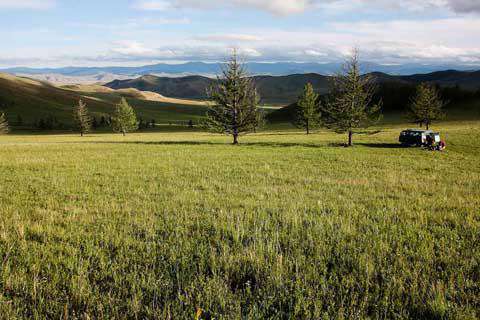
Neighborhoods
Food and dining, transportation.
We've been gathering travel costs from tens of thousands of actual travelers since 2010, and we use the data to calculate average daily travel costs for destinations around the world. We also systematically analyze the prices of hotels, hostels, and tours from travel providers such as Kayak, HostelWorld, TourRadar, Viator, and others. This combination of expenses from actual travelers, combined with pricing data from major travel companies, gives us a uniqe insight into the overall cost of travel for thousands of cities in countries around the world. You can see more here: How it Works .
Subscribe to our Newsletter
By signing up for our email newsletter, you will receive occasional updates from us with sales and discounts from major travel companies , plus tips and advice from experienced budget travelers!

Search for Travel Costs
Some of the links on this website are sponsored or affiliate links which help to financially support this site. By clicking the link and making a purchase, we may receive a small commission, but this does not affect the price of your purchase.
Travel Cost Data
You are welcome to reference or display our travel costs on your website as long as you provide a link back to this page .
A Simple Link
For a basic link, you can copy and paste the HTML link code or this page's address.
Travel Cost Widget
To display all of the data, copy and paste the code below to display our travel cost widget . Make sure that you keep the link back to our website intact.
- Privacy / Terms of Use
- Activities, Day Trips, Things To Do, and Excursions

IMAGES
COMMENTS
How much does it cost to travel to Mongolia? You should plan to spend around $26 (₮88,795) per day on your vacation in Mongolia. This is the average daily price based on the expenses of other visitors.. Past travelers have spent, on average for one day: $8.17 (₮27,791) on meals
For $103.90 per person per day ($727.30 per week), mid-range travelers can comfortably see and experience Ulaanbaatar. This includes booking a room at a budget hotel for $80 per night, meal costs at $17 per day with a drink included, transportation costs at $3.30, and museum and other attraction costs at $3.60.
While group tours can be economical in many countries, Mongolian tours are still priced quite high. Usually in the range of $3,000-$6,000 per person for a 2-3 week trip. Travel in Mongolia can be rough at times. You'll usually have trouble finding hot water for showers and travel times are seriously long.
Asia / Mongolia /. For a trip to Mongolia, you should plan for daily costs anywhere between $10 to $68. If there's two of you traveling, your daily expenses could range from $20 to $136. These price ranges are based on the average daily spending of $26 (₮88,795) per person which comes from the travel expenses of other visitors.
A Ulaanbaatar-Kharkhorin bus ticket: US$7 one-way. Cup of coffee: US$2-3. Khuushuur (fried mutton pancakes) at a local restaurant: US$1. A sit-down dinner for two: US$20-60. Beer/pint at a pub in Ulaanbaatar: US$3. Average daily cost per person (including meals, accommodation and car and driver hire): US$60-200.
Based on the travel expenses of others, a one month trip to Mongolia costs around $783 on average, per person. This includes food, sightseeing, local transportation, accommodation, and nightlife. For two people, a one month trip costs $1,566. Mongolia is a somewhat popular destination for backpackers, offering over 20 hostels around the country.
Budget: The cost of travel in Mongolia can vary widely depending on your travel style and itinerary. Budget accommodation and food can be found for around $20-30 per day, while mid-range hotels and restaurants can cost around $50-80 per day. Tours and activities can range from $50-100 per day and up.
This is when most tourists visit Mongolia, so you can expect peak rates, sometimes crowded natural landmarks and museums, and full flights. The average summer temperature in Mongolia is between 25° and 32° C, with cold nights. You can comfortably wear t-shirts during the day and a light jacket when it gets dark.
The cost of flying to Mongolia can vary depending on several factors such as the departure location, time of booking, and airline. On average, round-trip international flights to Mongolia can range from $500 to $1,500, but prices can be higher during peak travel seasons.
MONGOLIA TRAVEL COSTS. The cost of traveling to Mongolia can vary depending on your itinerary, accommodations, and mode of transportation. Some estimates for budget travel in Mongolia are: Accommodation: $10-25 per night for a budget guesthouse or hostel, $25-50 for a mid-range hotel. Food: $5-10 for a budget meal, $10-20 for a mid-range meal.
The cost of renting or buying an apartment in Mongolia varies according to its location. On average, renting an apartment with one bedroom and a living room outside the city center costs approximately 593652 MNT (175 USD) per month, while the same type of apartment in the city center can cost around 991217 MNT (292 USD) per month.
Best in Travel. Mongolia: Behind the scenes of our Best in Travel Video. Oct 30, 2023 • 3 min read. Mongolia has so much to offer travelers looking for wide open spaces, adventure and culture. Here's what it is like to travel there. in partnership with getyourguide.
This is the super budget-friendly option for travelers to Mongolia. Expect a 12-hour ride to cost about $20. Mongolia Travel Tips for Super Budget Travelers . When you reach a major city like UB, Murun, or Tsagaannuur you can reach out to local guides via your homestay. This way you can see all the sights in the area.
Where to Go in Mongolia - Itinerary. Day 1: Visiting Ulaanbaatar. Day 2: Getting from Ulaanbaatar to the Gobi desert. Day 3: Visit the Baga Gazryn Chuluu Rock Formations. Day 4: Sleep at a Ger Camp in the Gobi Desert. Day 5: Dalanzagad to Gobi Discovery Ger Camp. Day 6: Hiking in Yolin Am - Mongolia's Ice Valley.
Taking along souvenirs or photographs from your own country is another great way to foster cultural exchange. 11. Climb a hill to get a mobile phone signal. In recent years, cell phone coverage in Mongolia has become much more widespread, with fewer dead zones, though there are still some off-grid spots.
Mongolia Travel Budget. Expect your travel costs for Mongolia to range from $20 - $150 per person per day. The cost varies depending on your choice of activity and whether or not you book a tour or travel completely independently.
Flights to Mongolia can range from approximately $600 to $1,500 for a round-trip ticket, depending on the season and departure location. Accommodation costs vary as well, with budget hotels or hostels starting at around $15 per night and luxury hotels reaching up to $200 per night.
Alcohol: ($2 Beer, $4 Cocktails) Alcohol probably won't be a large part of your budget while traveling Mongolia but a nice, cold bottle of Chinggis beer will cost you about $1.50 and cocktails will be around $5. Vodka is also popular and Mongolians have customs you must follow before taking a shot of this liquor.
Summer 2025. Visit during summer to enjoy long, warm days perfect for exploring the vast steppes on a horse trek and attending the grand Naadam Festival in Ulaanbaatar. Browse the best tours in Mongolia with 184 reviews visiting places like Ulaanbaatar and Kharkhorin. All Major Brands.
Mongolia has seasonal weather so please do check up on the best time to visit Mongolia before planning your tour. The best Mongolia trips and multiday tour packages, delivered by top local Mongolia travel specialists. Compare prices and 50+ reviews.
If you want to spend a week in Mongolia the cost of your stay will be: 235 USD (797,000 MNT) - a cheap stay for 7 days in Mongolia. 309 USD (1,049,000 MNT) - a budget travel for 7 days in Mongolia. 770 USD (2,615,000 MNT) for a one week of comfortable stay in Mongolia. 1,400 USD (4,956,000 MNT) for a week of luxury holidays in Mongolia.
The average daily price for festival & events tours to Mongolia is a remarkably economical $452 per day, with the overall average cost of all tours being $3,107 (based on data from 4 tours). The cheapest tour is $1,599, and the most expensive tour is $3,999.
However, many local travel operators (Tour Mongolia, Ayan Travel) as well as Toronto-based G Adventures offer a wide range of truly unique experiences, ranging from authentic homestays in gers ...
The survey revealed that the biggest pain point, by a significant margin, is the cost of travel (63%) as companies deal with rising travel costs. Other issues associated with business travel include understanding the ROI and measuring success (38%), employee traveler tracking (37%), manual processes (37%), and the lack of data/reporting (35%).
How much does it cost to travel to Ulaanbaatar? You should plan to spend around $25 (₮86,501) per day on your vacation in Ulaanbaatar. This is the average daily price based on the expenses of other visitors.. Past travelers have spent, on average for one day: $9.06 (₮30,818) on meals